The shores of Lake Geneva will soon be within your reach.
DIDIER HEUMANN, ANDREAS PAPASAVVAS
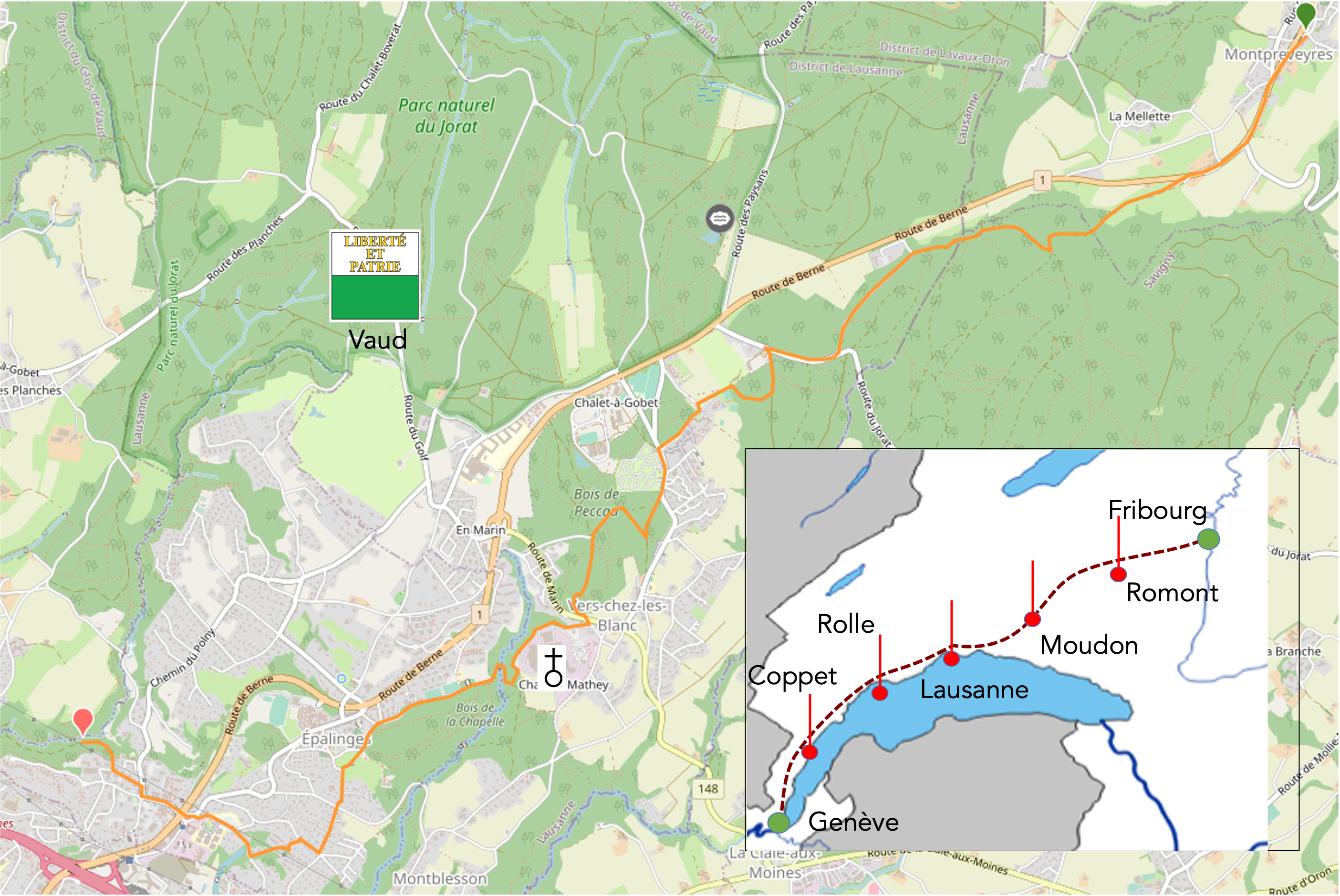
We divided the course into several sections to make it easier to see. For each section, the maps show the course, the slopes found on the course, and the state of the roads. The courses were drawn on the “Wikilocs” platform. Today, it is no longer necessary to walk around with detailed maps in your pocket or bag. If you have a mobile phone or tablet, you can easily follow routes live.
For this stage, here is the link:
https://fr.wikiloc.com/itineraires-randonnee/de-montpreveyres-a-la-vallee-du-flon-a-la-jonction-de-la-nouvelle-via-jacobi-4-141298487
It is obviously not the case for all pilgrims to be comfortable with reading GPS and routes on a laptop, and there are still many places without an Internet connection. Therefore, you can find a book on Amazon that deals with this course. Click on the title of the book to open Amazon.
If you only want to consult lodging of the stage, go directly to the bottom of the page.
Nestled in the heart of the village of Montpreveyres, it is here that an innovative route has emerged, leading towards Lake Sauvabelin and Lausanne, through the vast forests of the Jorat. Nevertheless, the option to tread the ancient route remains open, and it is this path that we choose to follow now. Thus begins an intermittent dialogue with the Bressonne River, a companion both intrepid and turbulent. For nature lovers, an enchanting experience awaits. Splendid woods, mainly populated by majestic beech trees, beckon for a game of hide-and-seek with the Bressonne, sometimes mischievous in its thin canyons. This sylvan game finds its conclusion on the heights of Epalinges, in the heart of the Jorat-Woods. Thus begins an authentic journey, amidst verdant woods, golf greens, and the sumptuous abodes of Chalet-à-Gobet and Vers-chez-les-Blancs, havens of tranquility cherished by the local high society. The heights of Epalinges offer a contrasting tableau, where urbanity brushes against natural wildness, imparting to this region a unique atmosphere. You will witness this duality as you traverse Vers-chez-Les-Blancs, Epalinges, Les Croisettes, and then delve once more into the Flon canyon, behind the majestic cliffs of Les Croisettes. Shortly beyond Les Croisettes, you will join the new Via Jacobi 4 in the Flon valley.
Difficulty level: The elevations of this modest journey (+149 meters/-242 meters) prove reasonable, gently embracing the changing terrain. Often, you will cross streams without even perceiving the slightest gradient, so fluid is the path that carries you.
.
.
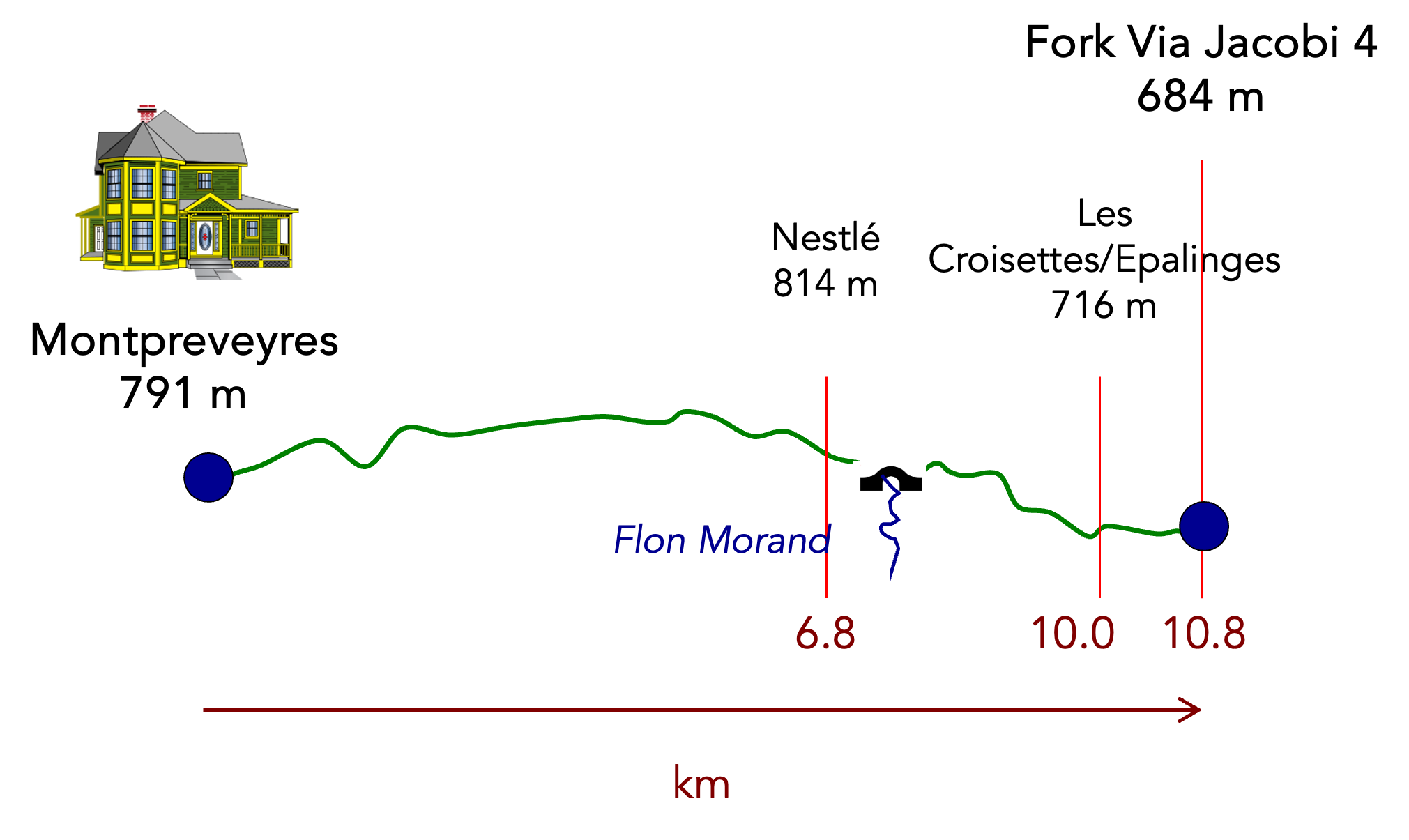
State of the Via Jacobi: Although forest paths often take precedence, urban roads and trails are not to be overlooked. From Montpreveyres to the junction of the two routes, the path stretches for nearly 11 kilometers, offering a journey both exhilarating and calming. This is shorter than if you were to follow the new Via Jacobi 4. Approximately 4 kilometers less:
- Paved roads: 4.4 km
- Dirt roads: 6.4 km
Sometimes, for reasons of logistics or housing possibilities, these stages mix routes operated on different days, having passed several times on Via Podiensis. From then on, the skies, the rain, or the seasons can vary. But, generally this is not the case, and in fact this does not change the description of the course.
It is very difficult to specify with certainty the incline of the slopes, whatever the system you use.
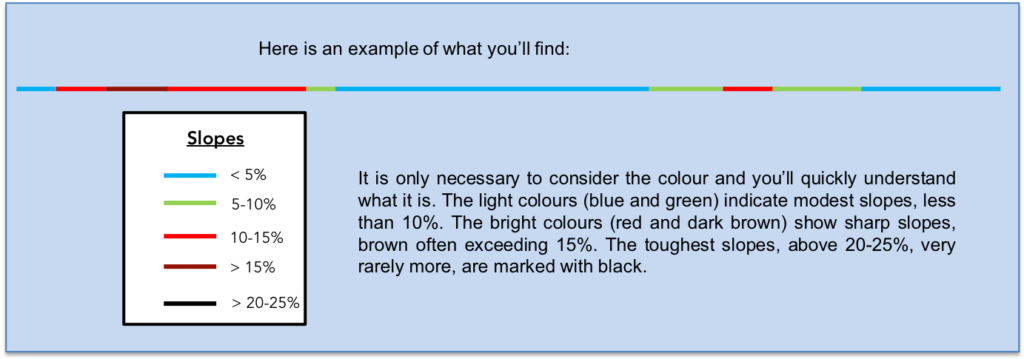
For those seeking “true elevations” and enthusiasts of genuine altimetric challenges, carefully review the information on mileage at the beginning of the guide.
We have divided the route into several sections, to facilitate visibility. For each section, the maps give the route, the slopes found on the route and the state of Via Jacobi.
Section 1: Dialogue with the Bressonne.
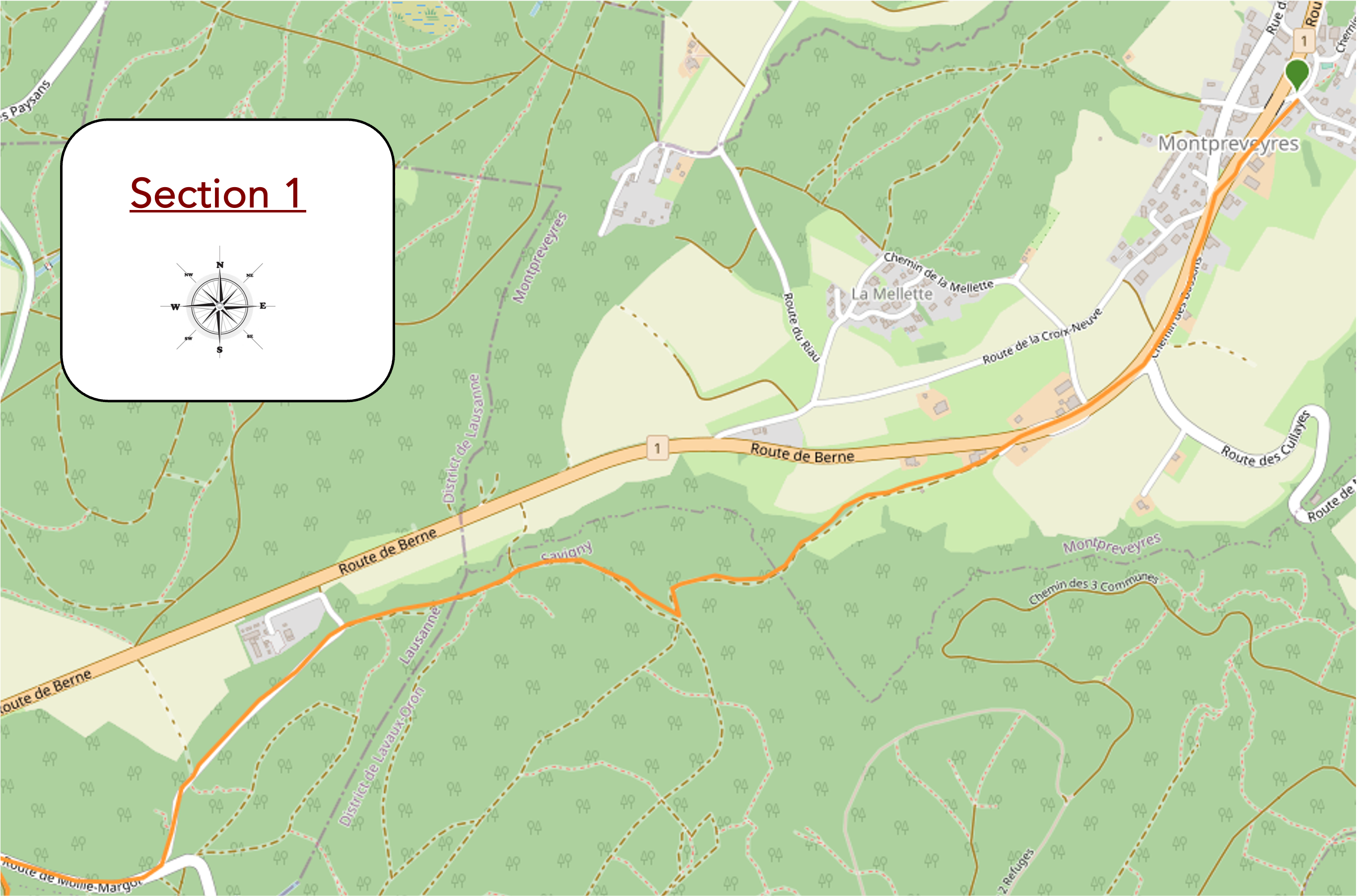
Overview of the route’s challenges: an easy route, but with very steep slopes to reach the river.
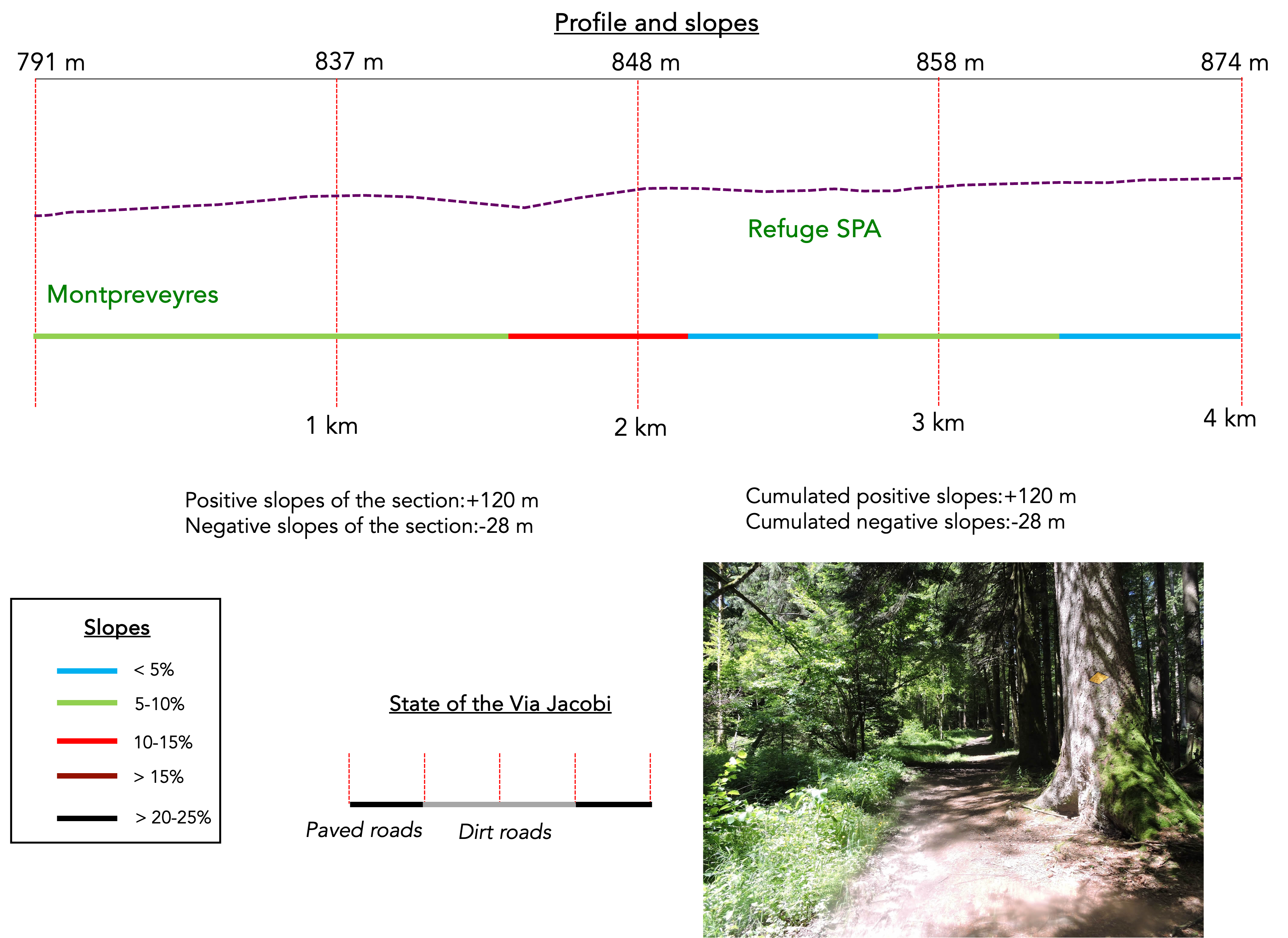
The old Via Jacobi 4, the one we tread with determination, winds its way towards Epalinges in a 2-hour and 40-minute walk, while the Lausanne Cathedral is announced to be 4 hours from this crossroads. The perspective is as captivating as it is inspiring, an invitation to exploration that awakens the souls of modern pilgrims as much as the new route does.
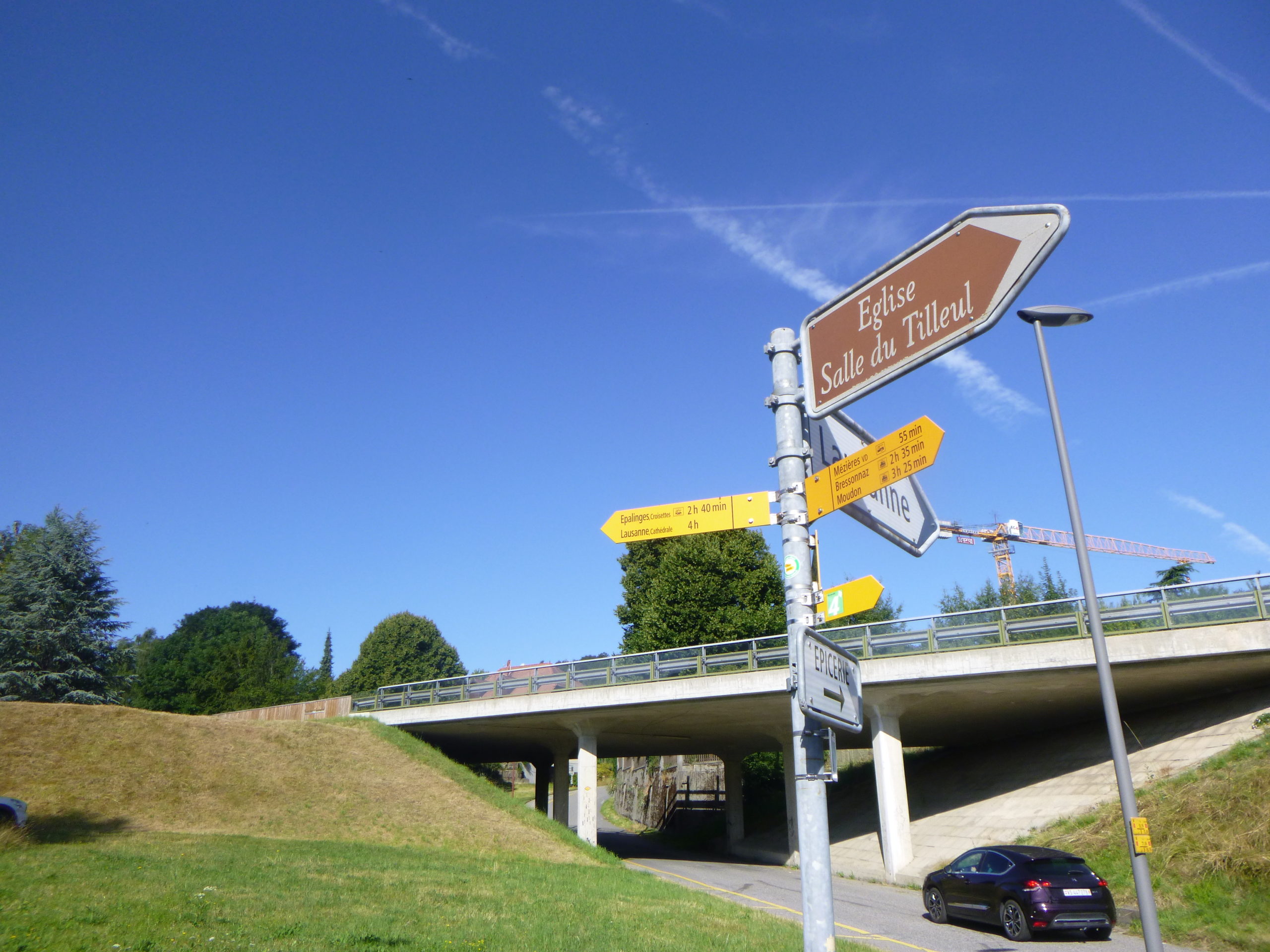
| Following the Route de Berne to Montpreveyres, your itinerary matches the winding rhythm of this vital artery, guiding your steps along its meanders to the edge of the village. It is there, on this heavily trafficked axis linking Berne to Lausanne, that your pedestrian journey initially unfolds. |
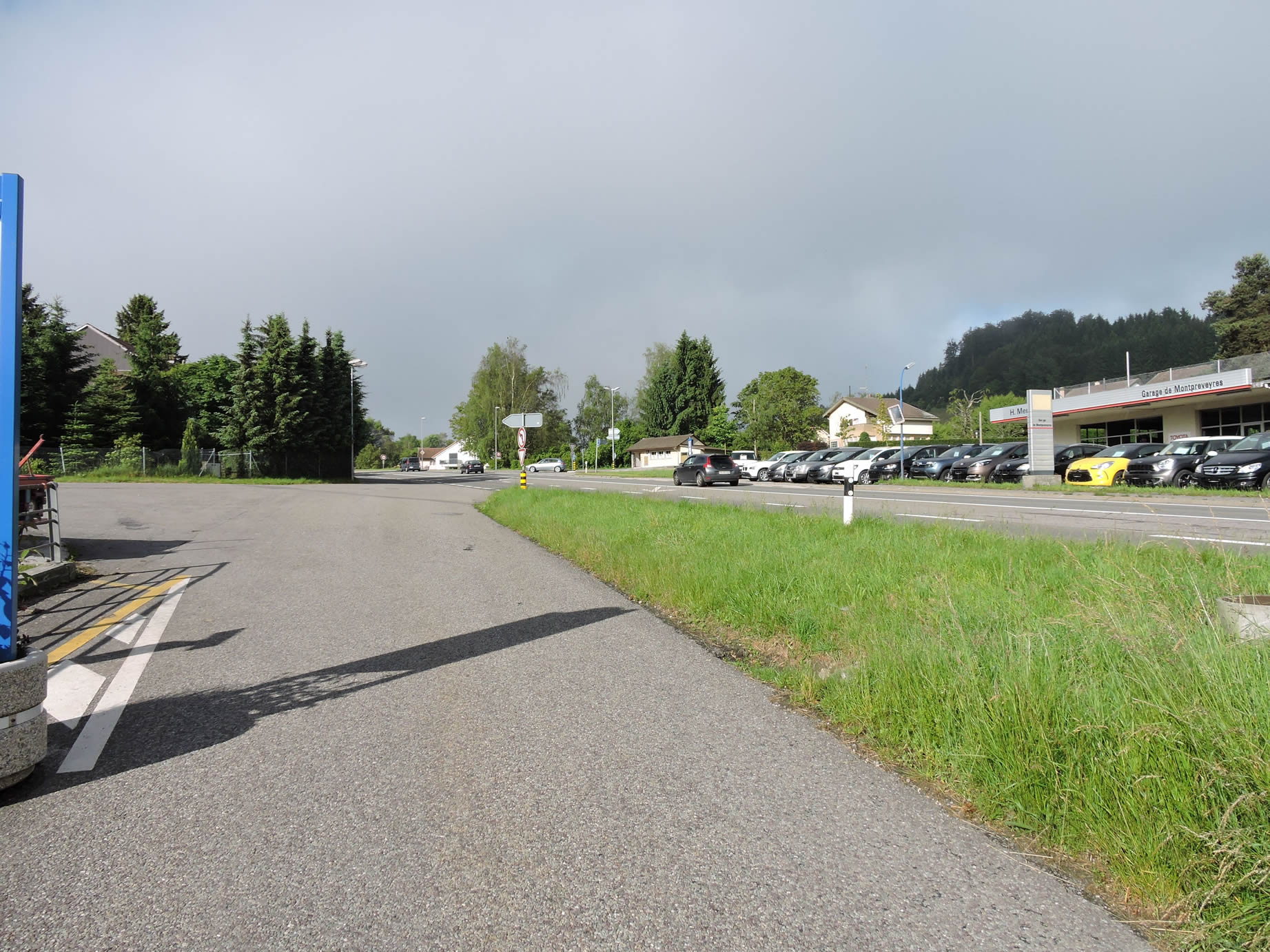 |
 |
| At the peak of Chemin des Bossons, at the village’s gates, the route briefly intersects with a secondary road leading to Les Cullayes. Still in harmony with the asphalt for a moment, the route unfolds before the guests of the Balances restaurant, like an interlude in this constant dance of travelers. |
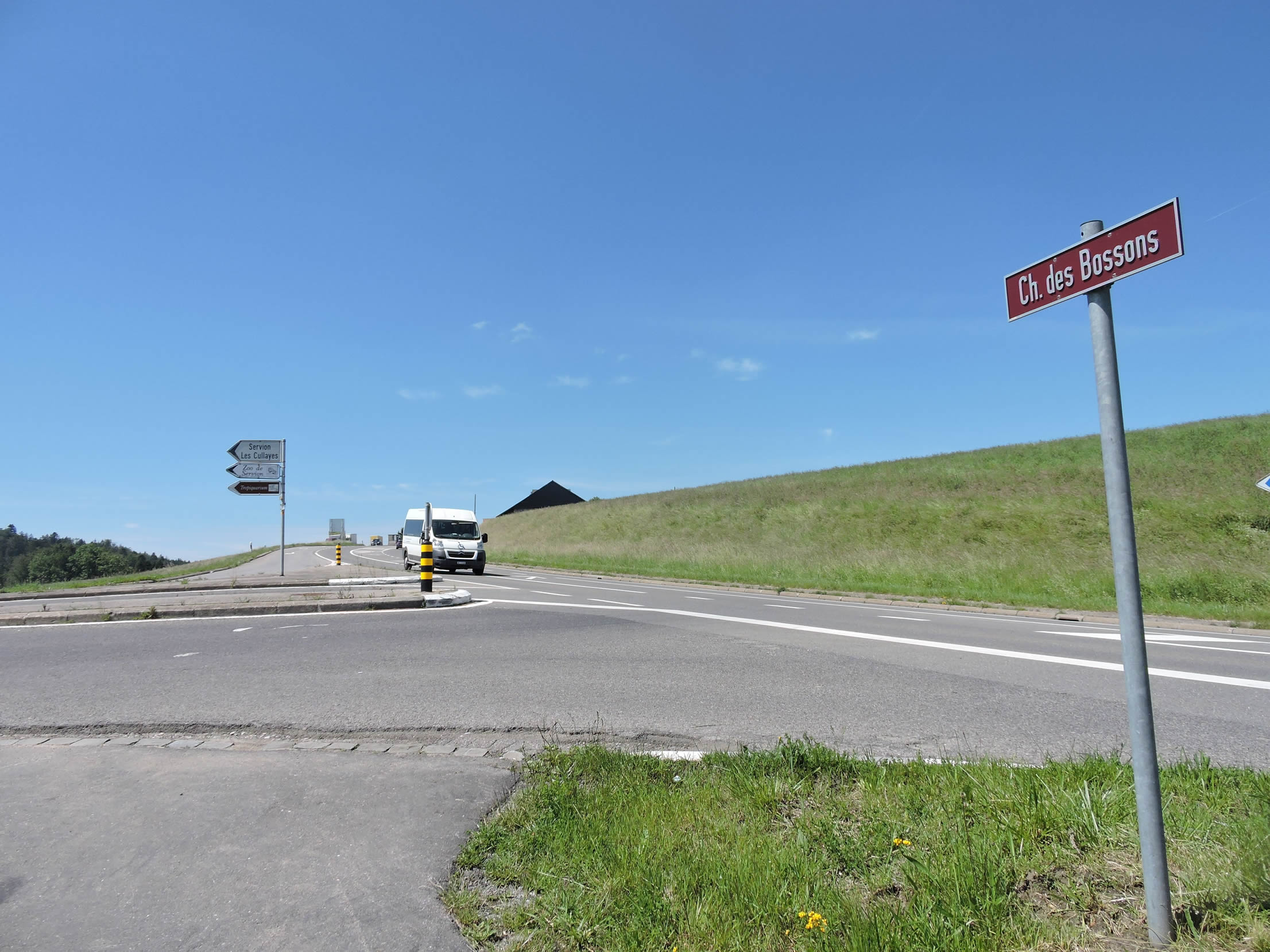 |
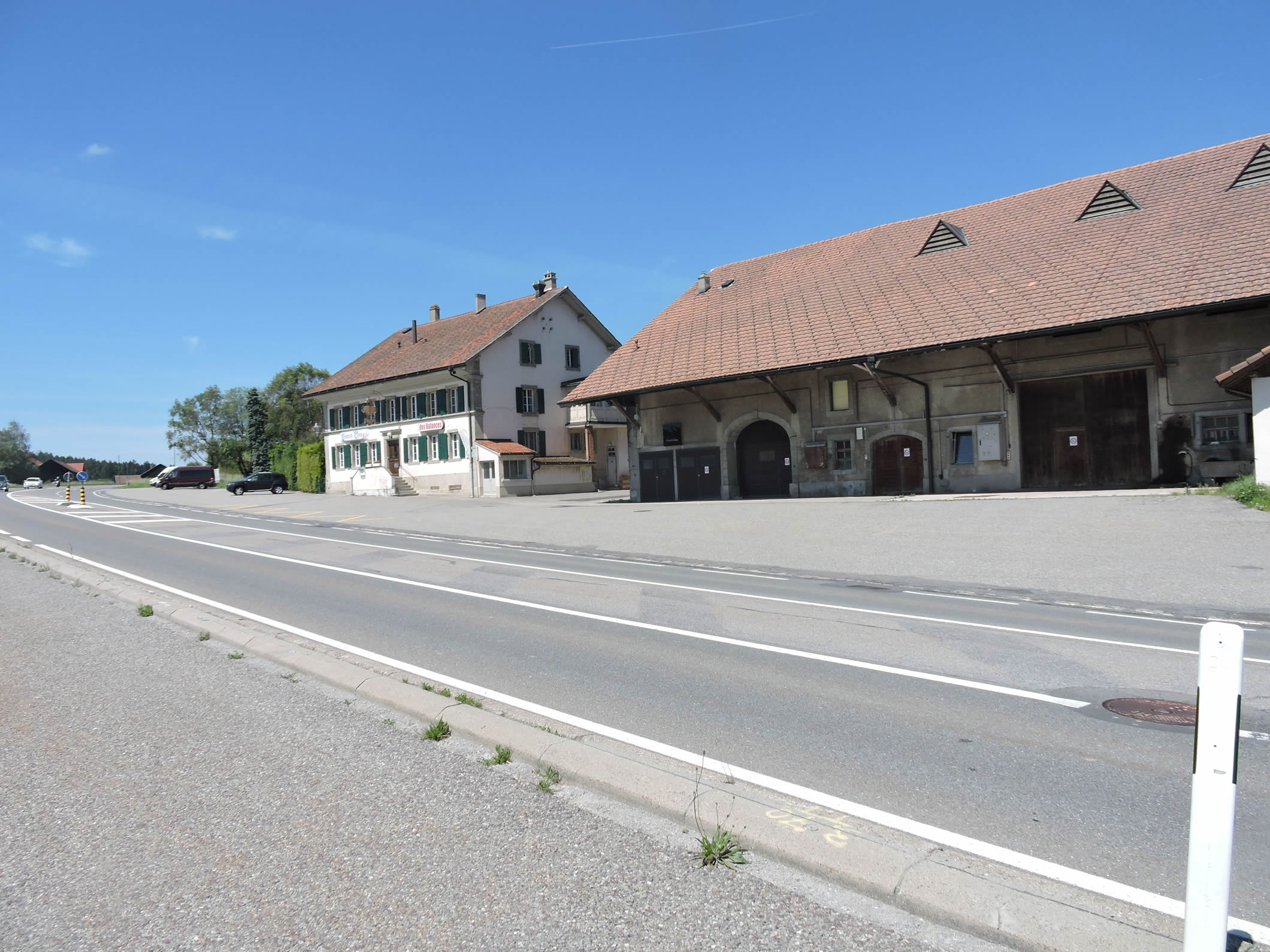 |
| Further up, in this ascent towards the hidden horizon, your route forsakes the solemnity of the tarmac to blend into the intimacy of a wide dirt path, plunging like an explorer into the secret heart of the forest. |
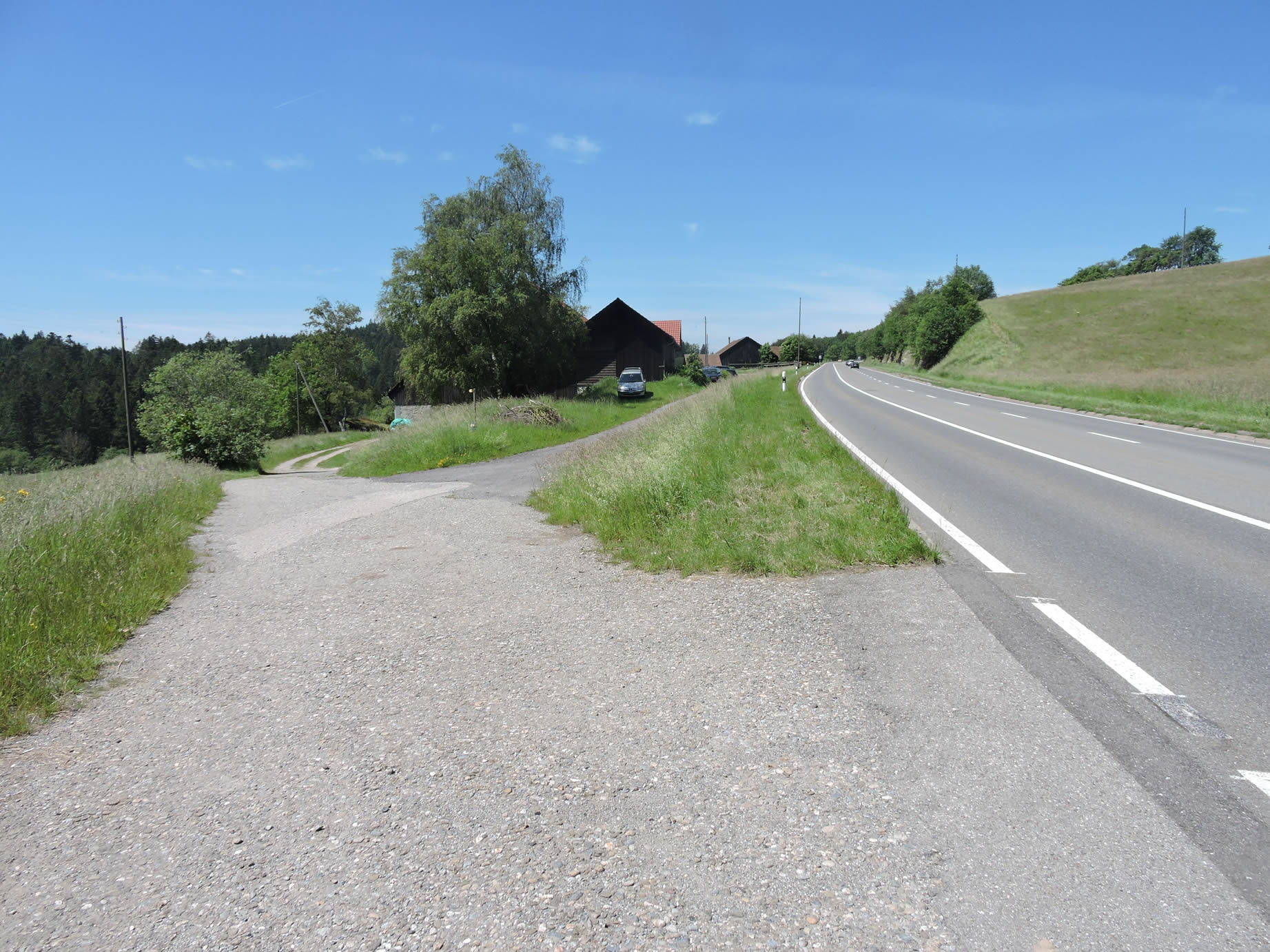 |
 |
| The forest welcomes you with open arms, its whispers enveloping you in a symphony of shadows and light. Nestled in the valley, the Bressonne, in its uninterrupted dance, sings nature’s eternal melody, filling the air with its soothing music. |
 |
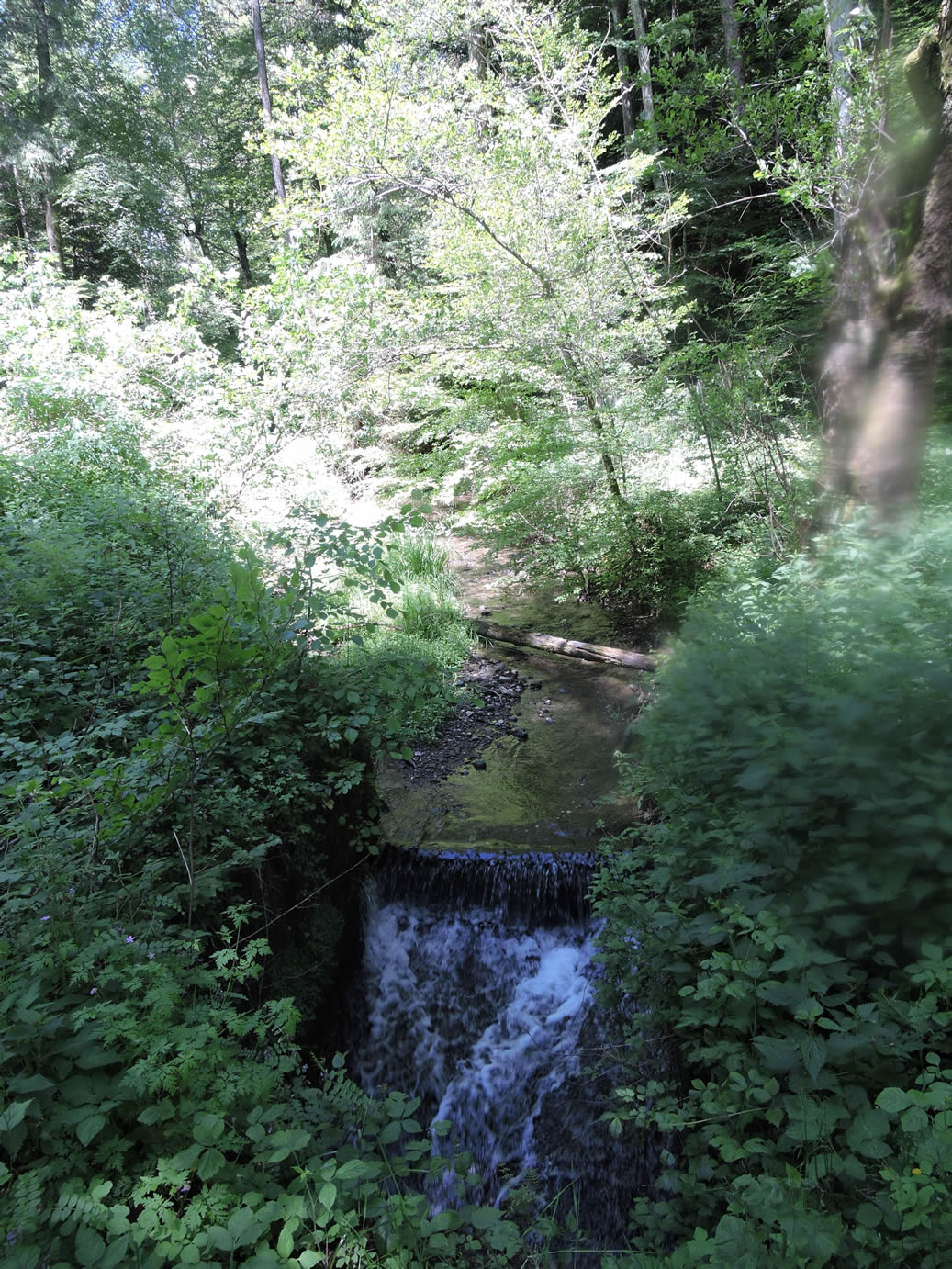 |
| An enchanting path then snakes between majestic trees, in a silent ballet where deciduous and coniferous trees marry in celestial harmony. Towering spruces stand alongside ancient beeches and flamboyant maples, while a few rare white firs and Douglas firs dot the landscape with their discreet presence. You are still in the Jorat -Woods, but this time on the other side of the Berne-Lausanne Road. |
 |
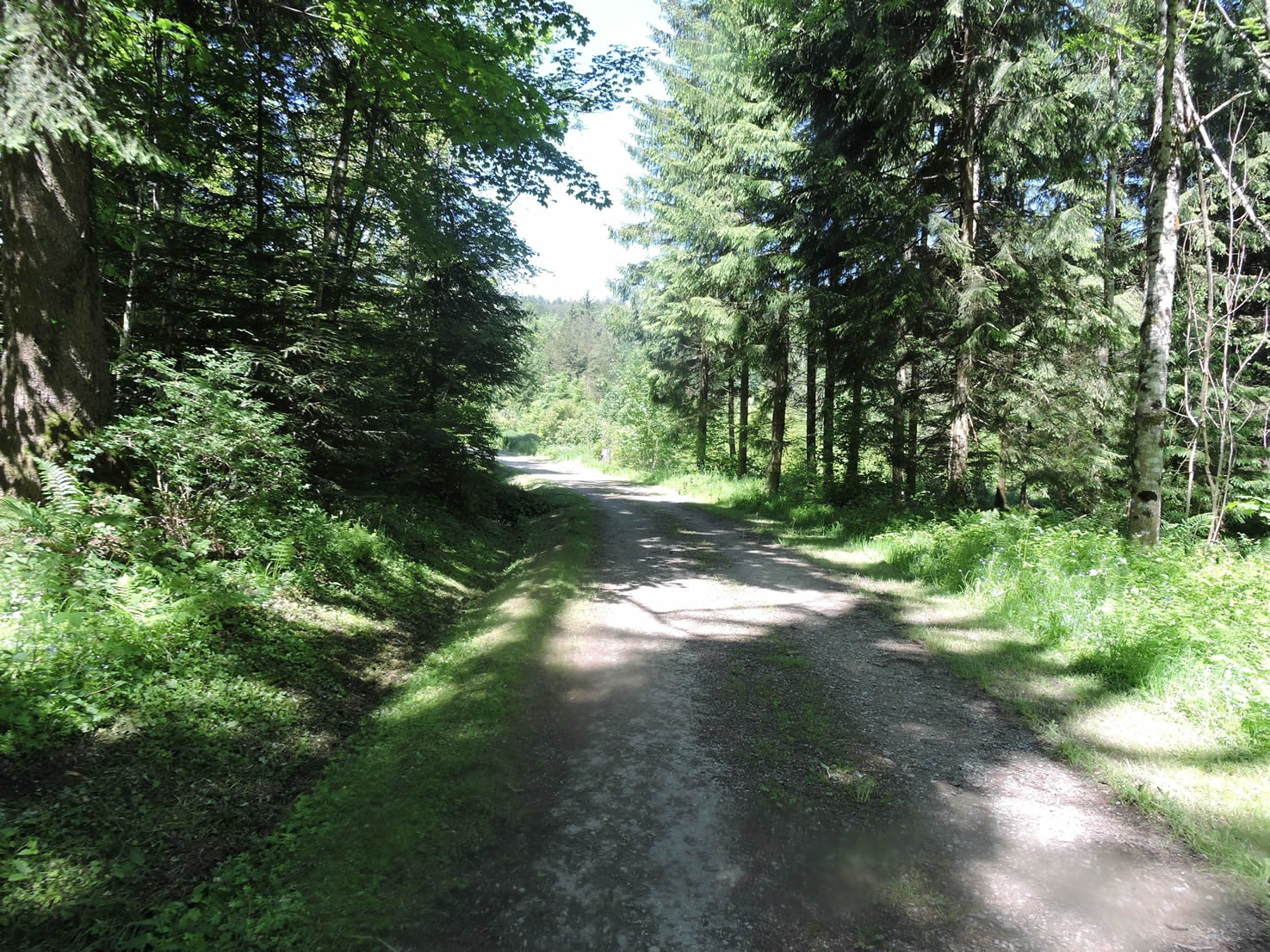 |
| When the path finally veers away from the murmurs of the Bressonne, dirt gives way to asphalt, like a link between the earth and the civilized world. Beneath your feet, the paved road climbs determinedly through the woods, inexorably drawing you closer to the SPA refuge, where the barking of dogs echoes like a welcome fanfare. |
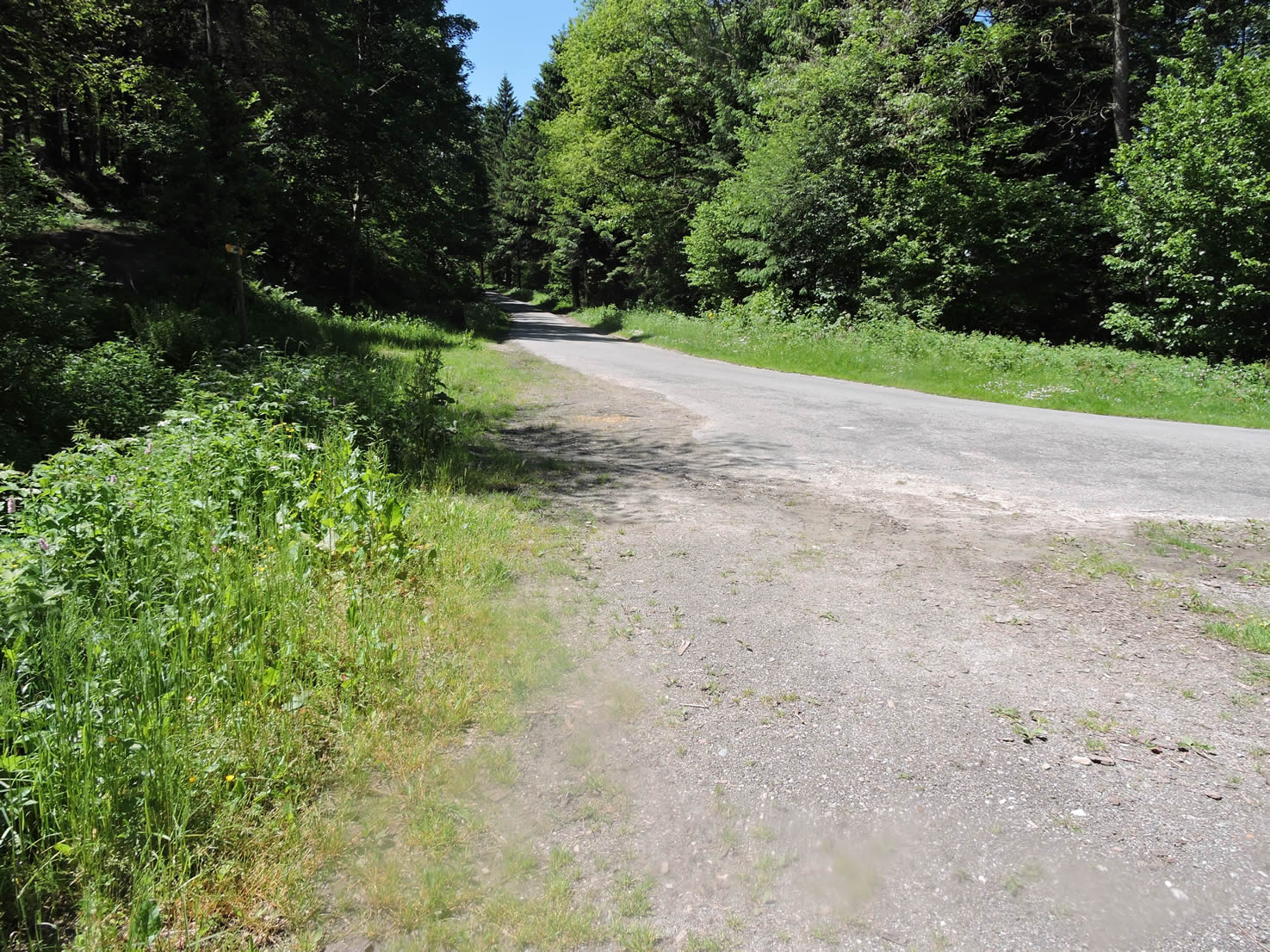 |
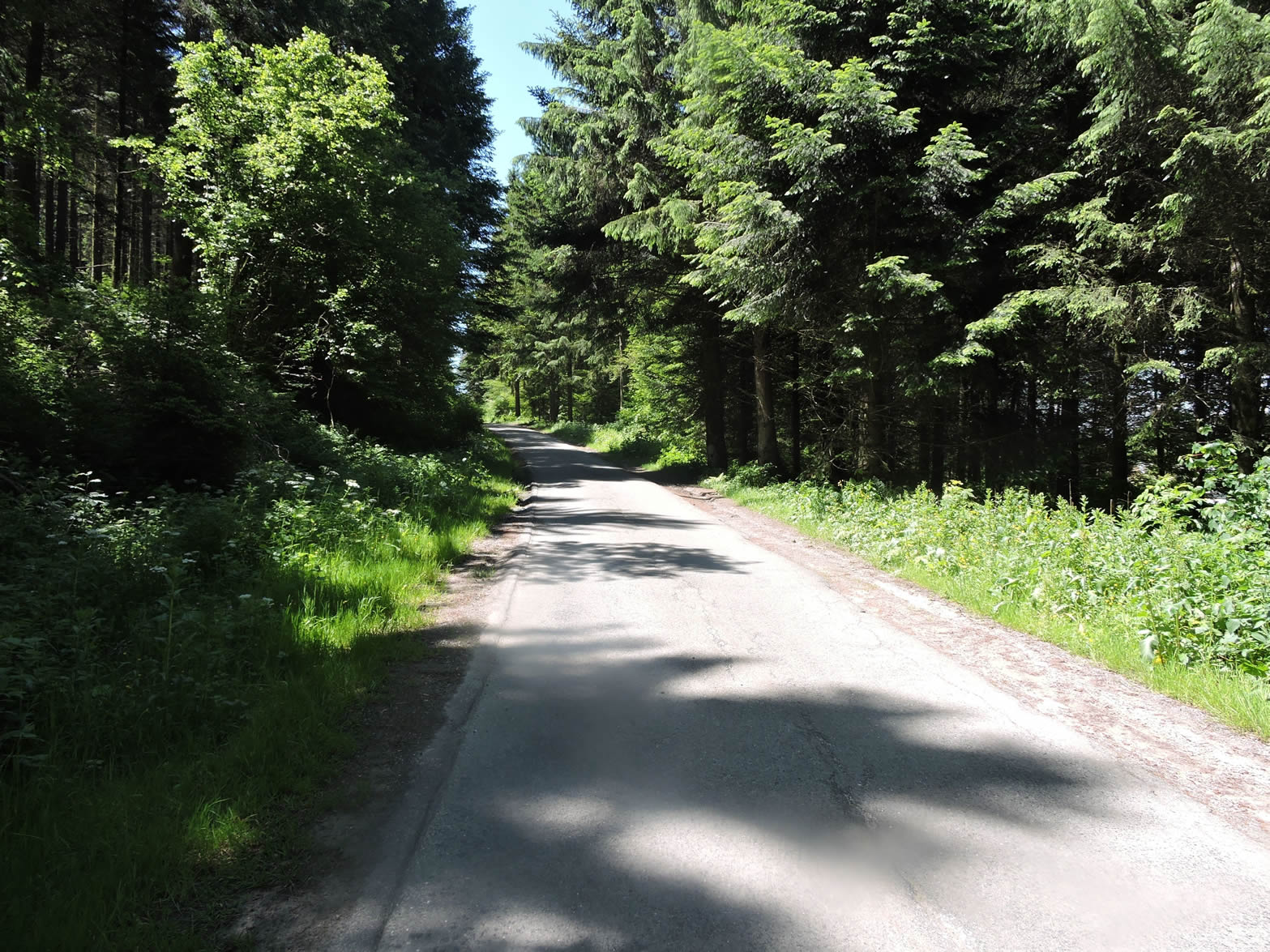 |
| Even higher, the small road merges into another road, one that leads to Moille Margot. But your destiny leads you in the opposite direction, towards the main road from Lausanne to Berne, where each turn reveals new horizons to explore. |
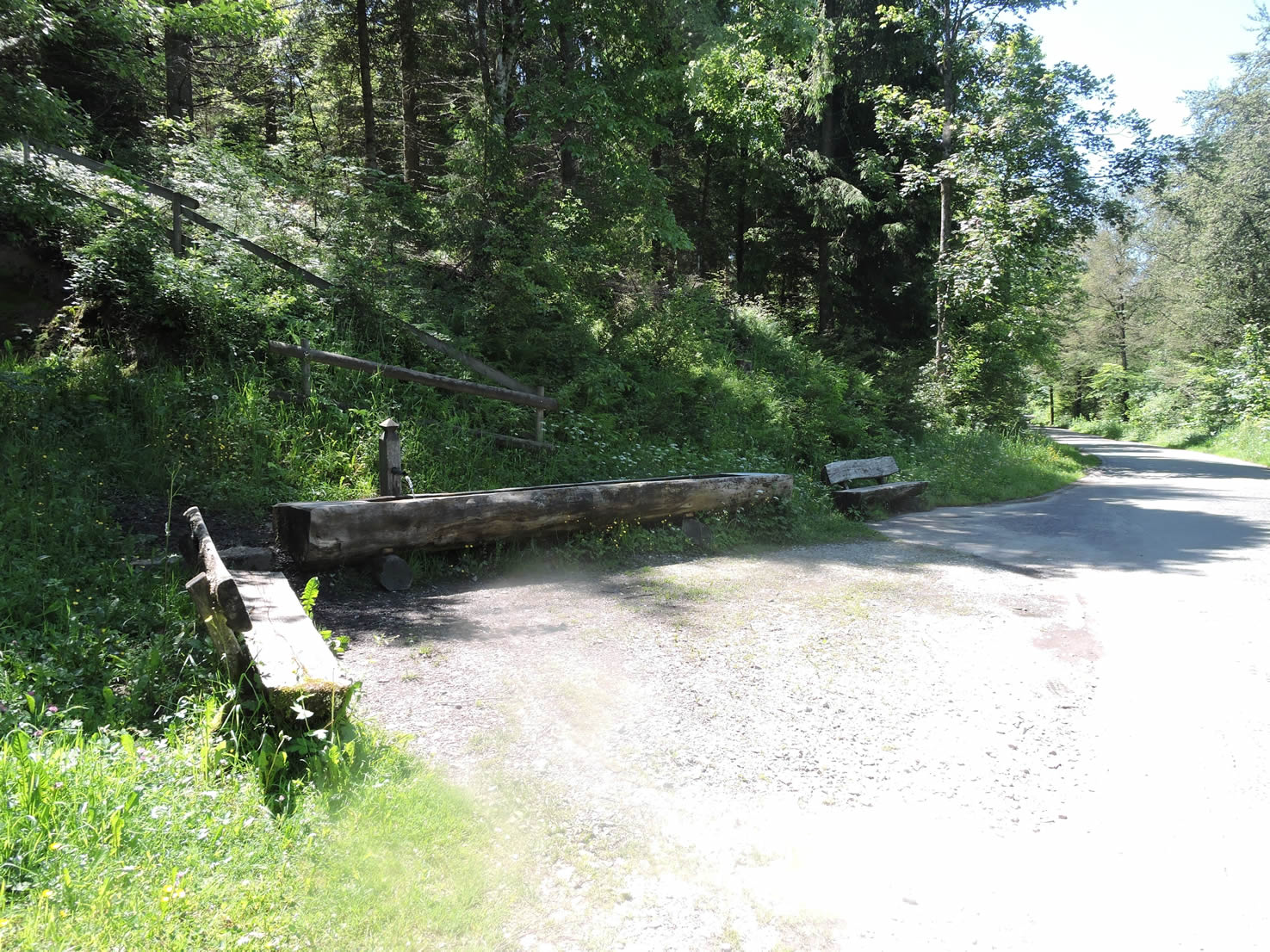 |
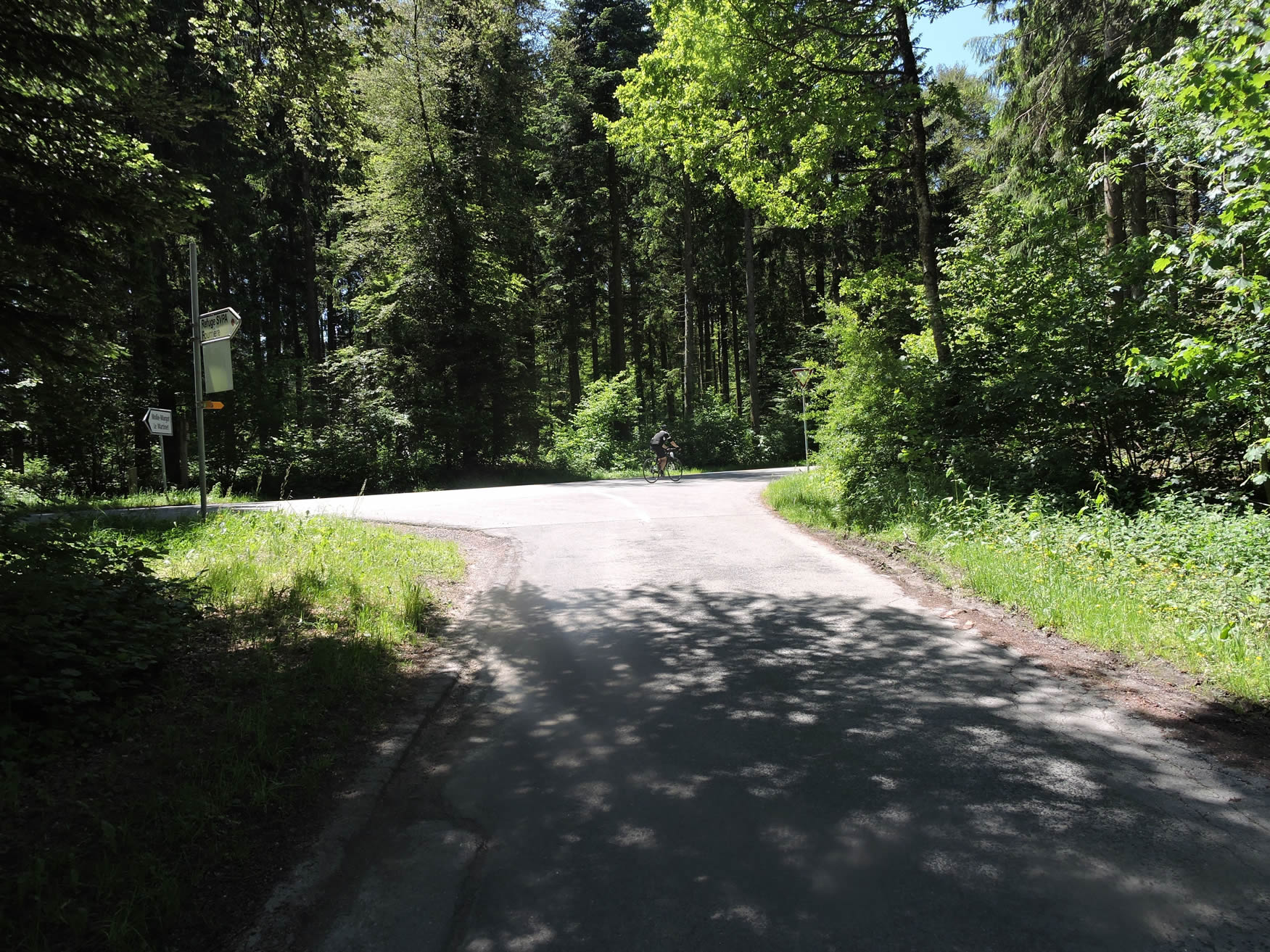 |
| Around the bend in the road, a vast equestrian center suddenly appears. Equestrian centers flourish like mushrooms after rain on the heights of Lausanne. Here, it’s appreciated to know that one is on the Camino de Santiago, even if it’s no longer the right one. But what does it matter! And to tell you the truth, we hardly encountered any scallop shells in German-speaking Switzerland. |
 |
 |
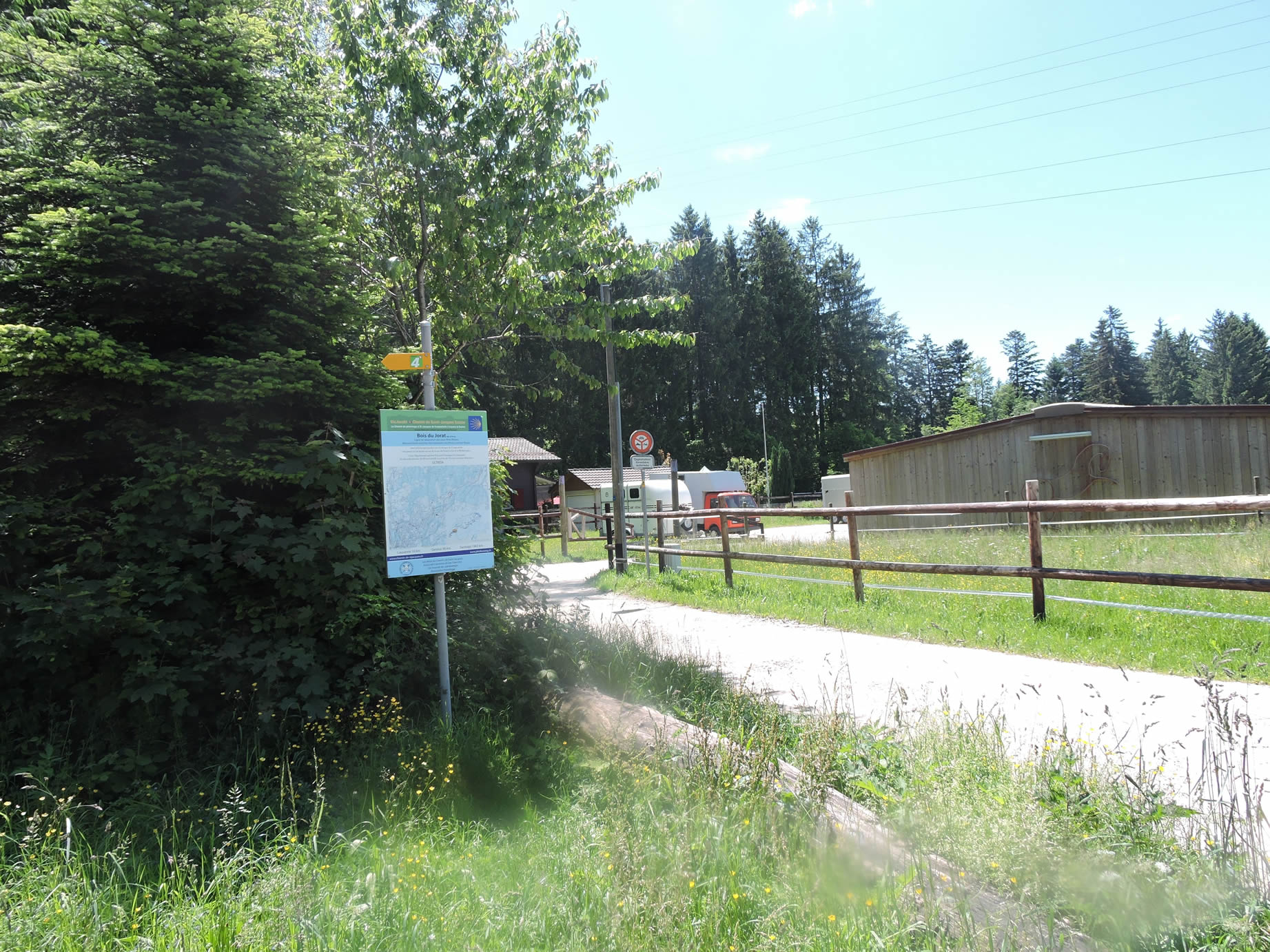
Section 2: In the beautiful forests of Chalet-à-Gobet and Vers-Chez-Les Blanc.

Overview of the route’s difficulties: an easy course.
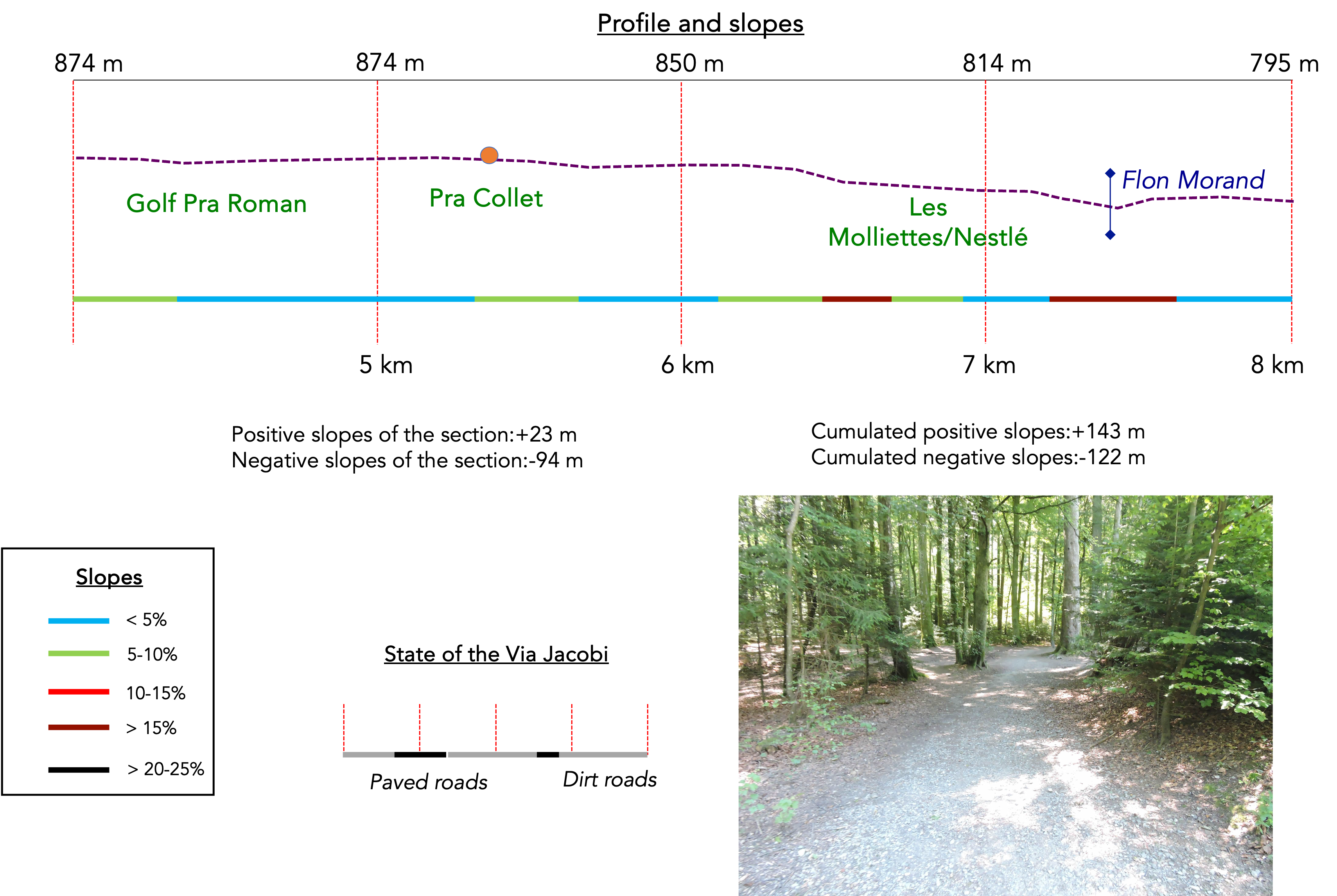
A wide dirt path unfolds majestically through the lush density of the forest, like a nurturing vein of nature. At this precise point, where every step resonates with a silent symphony of life, there is a fork that suggests crucial choices. It’s an hour and a half from Croisettes and another three hours from Lausanne city center, a place where time is measured by the gentle rhythm of footsteps on beaten earth.

| The path confidently plunges into the dense woods. In rainy weather, it sometimes gets muddy under the canopy of deciduous and coniferous trees, as if absorbing the tears of the sky. |
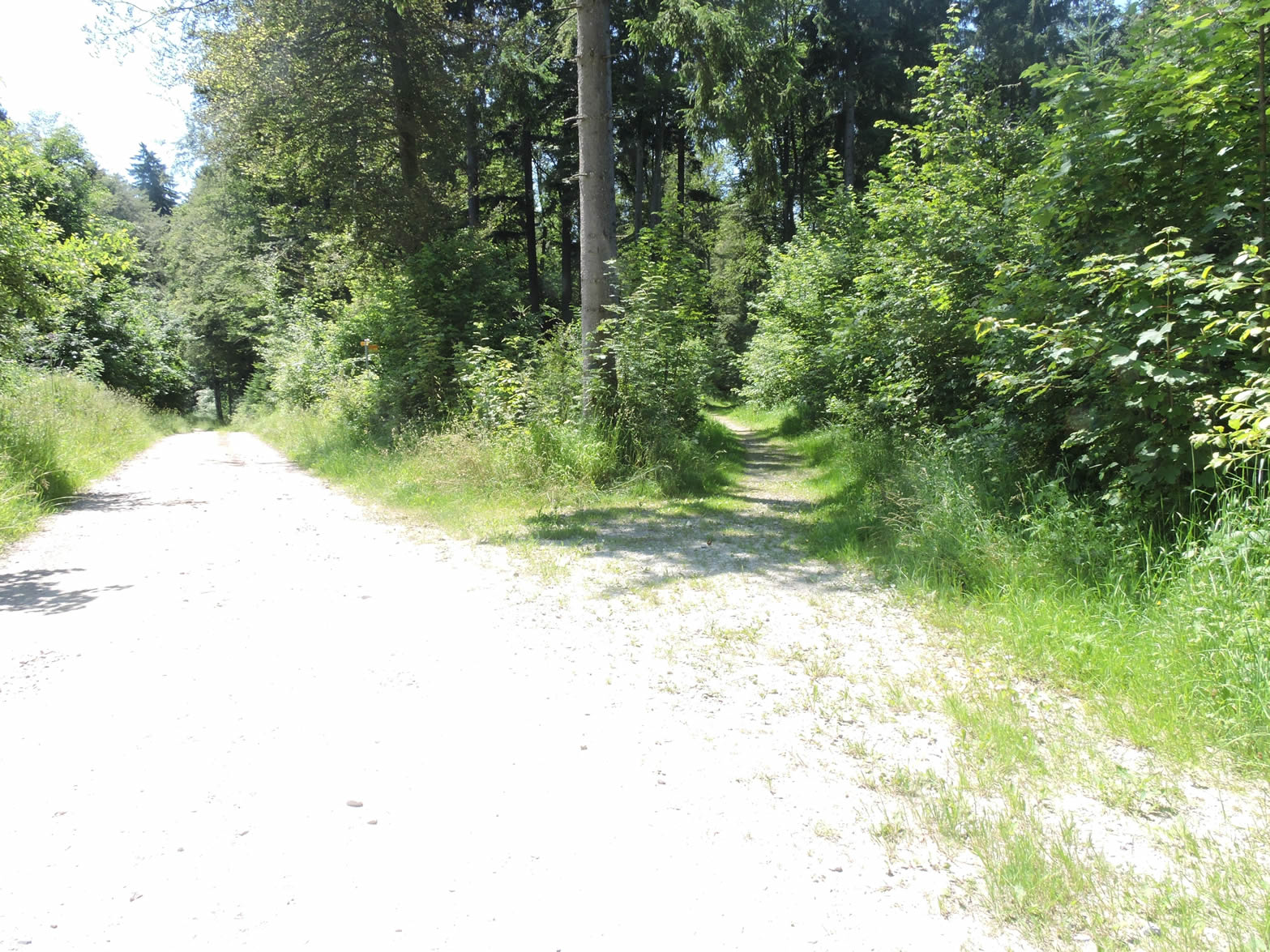 |
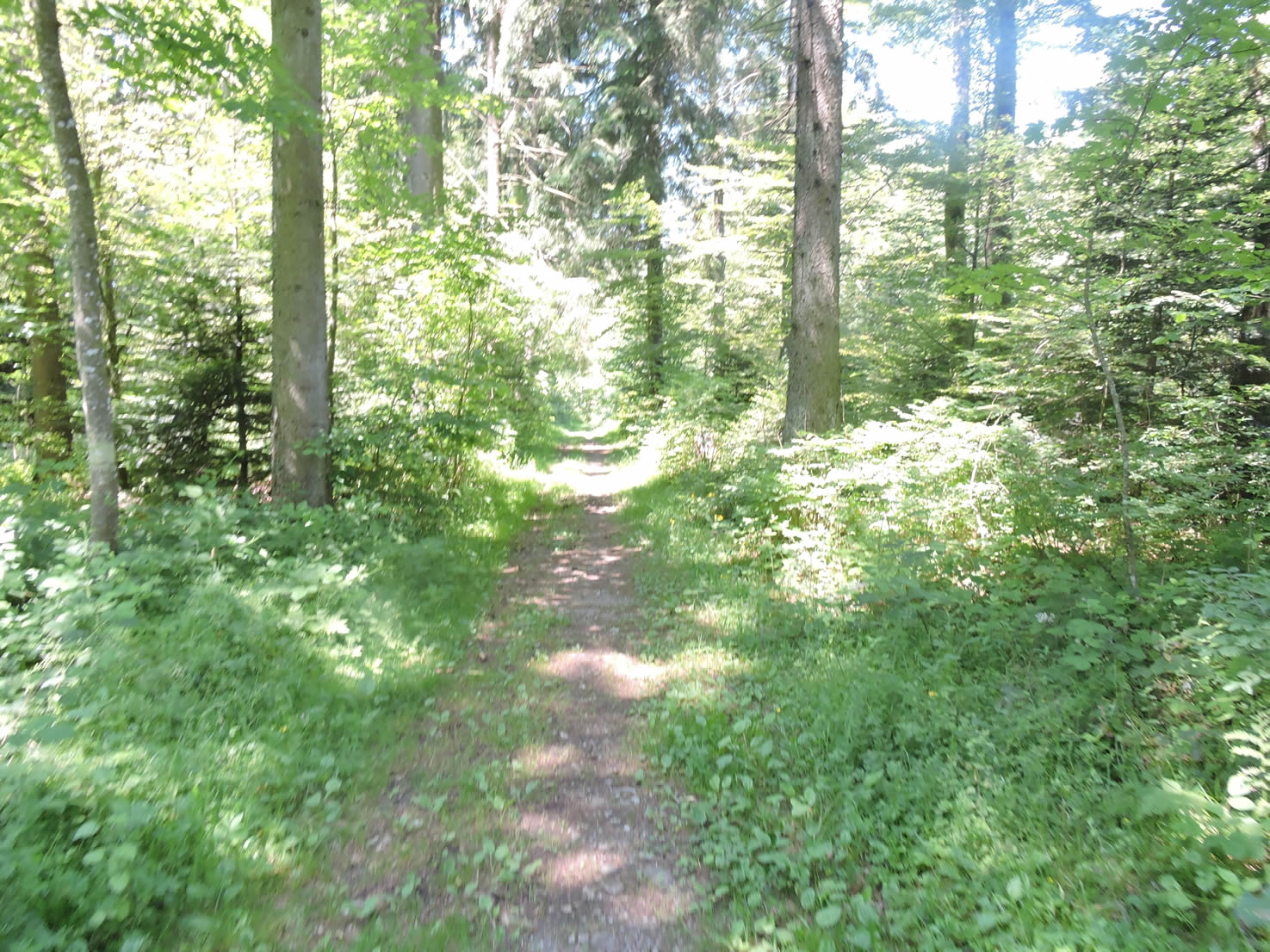 |
| A humble yet solemn bridge suddenly looms, gracefully spanning a murmuring stream, inviting the traveler to cross an invisible boundary between two worlds. Emerging from the wooded shade, the trail reveals an unexpected view, a foretaste of the diversity that awaits the walker. |
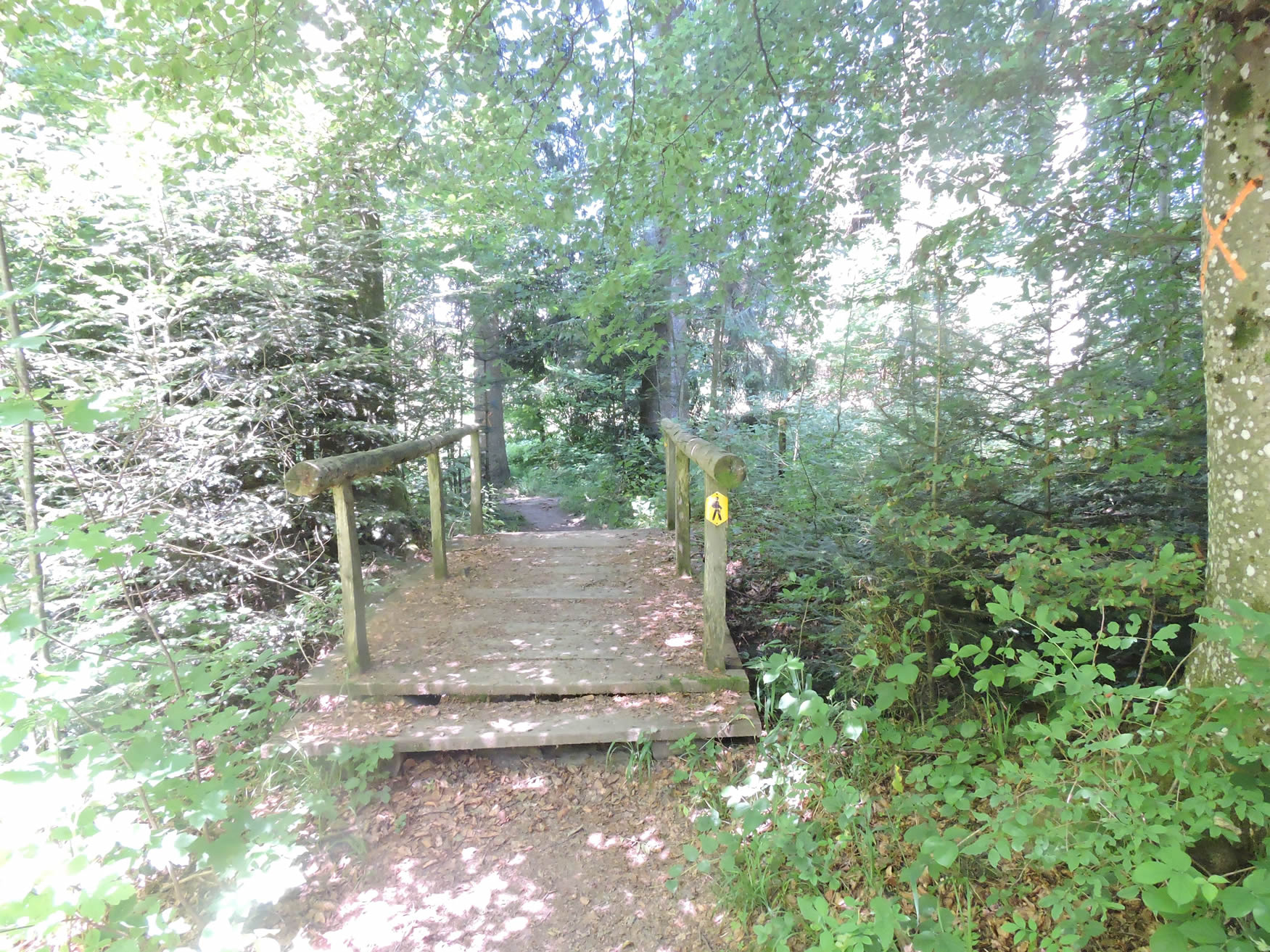 |
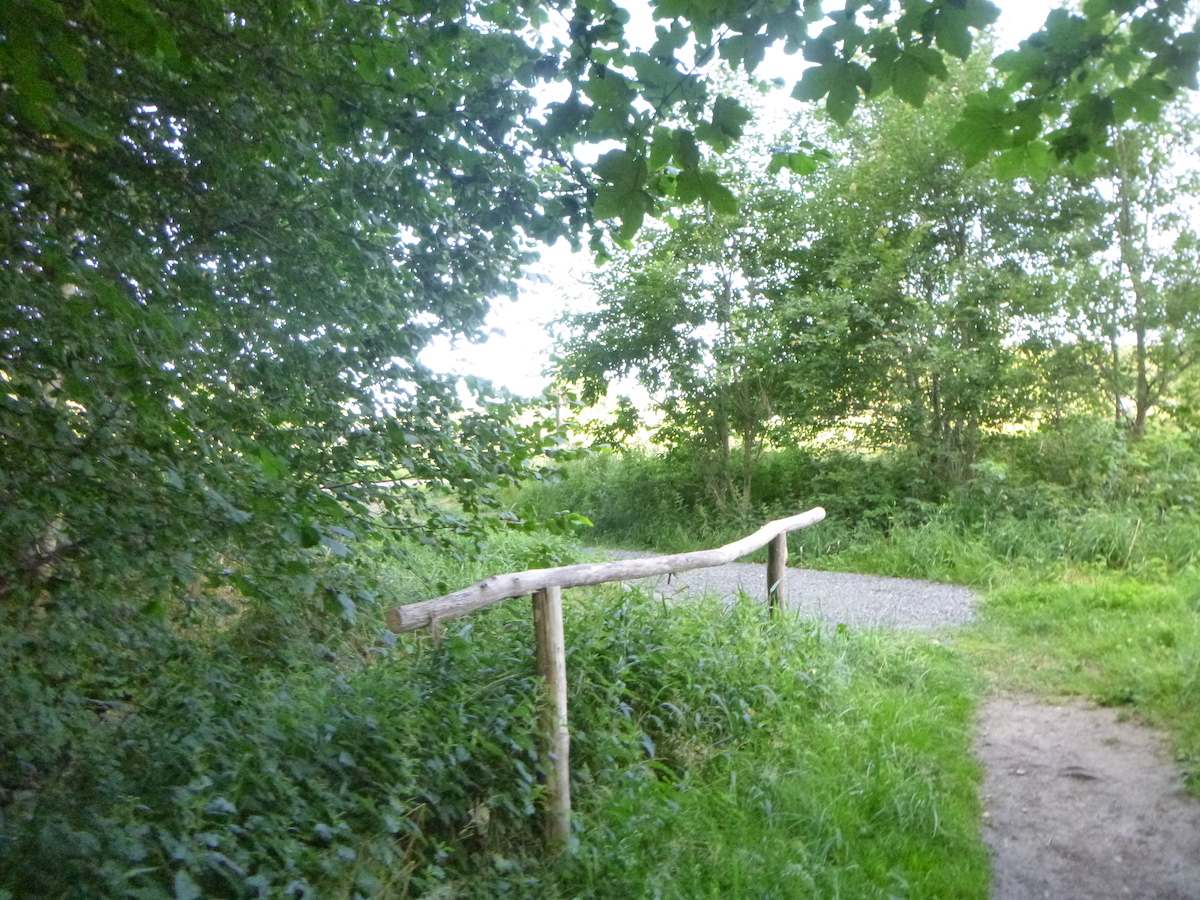 |
| It elegantly skirts the perimeter of the Pra Roman golf course, a green carpet laid by the skillful hands of men. Pra Roman Golf Course, the smaller of the two golf courses in Epalinges, both perched on the heights. It underscores the discreet magic of this region. |
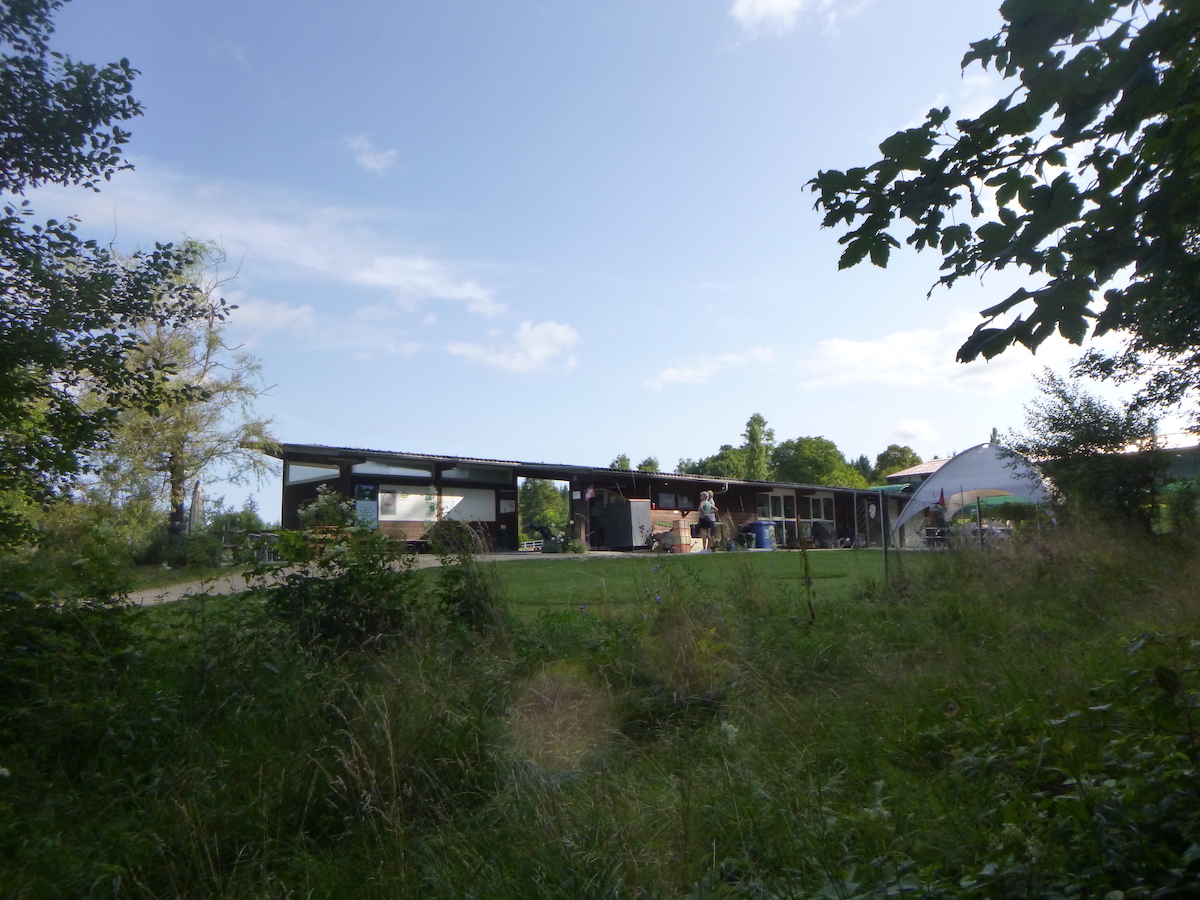 |
 |
| Then, the path transforms again, adorning itself with the ochre robe of beaten earth, like a dancer changing costume for a new scene. |
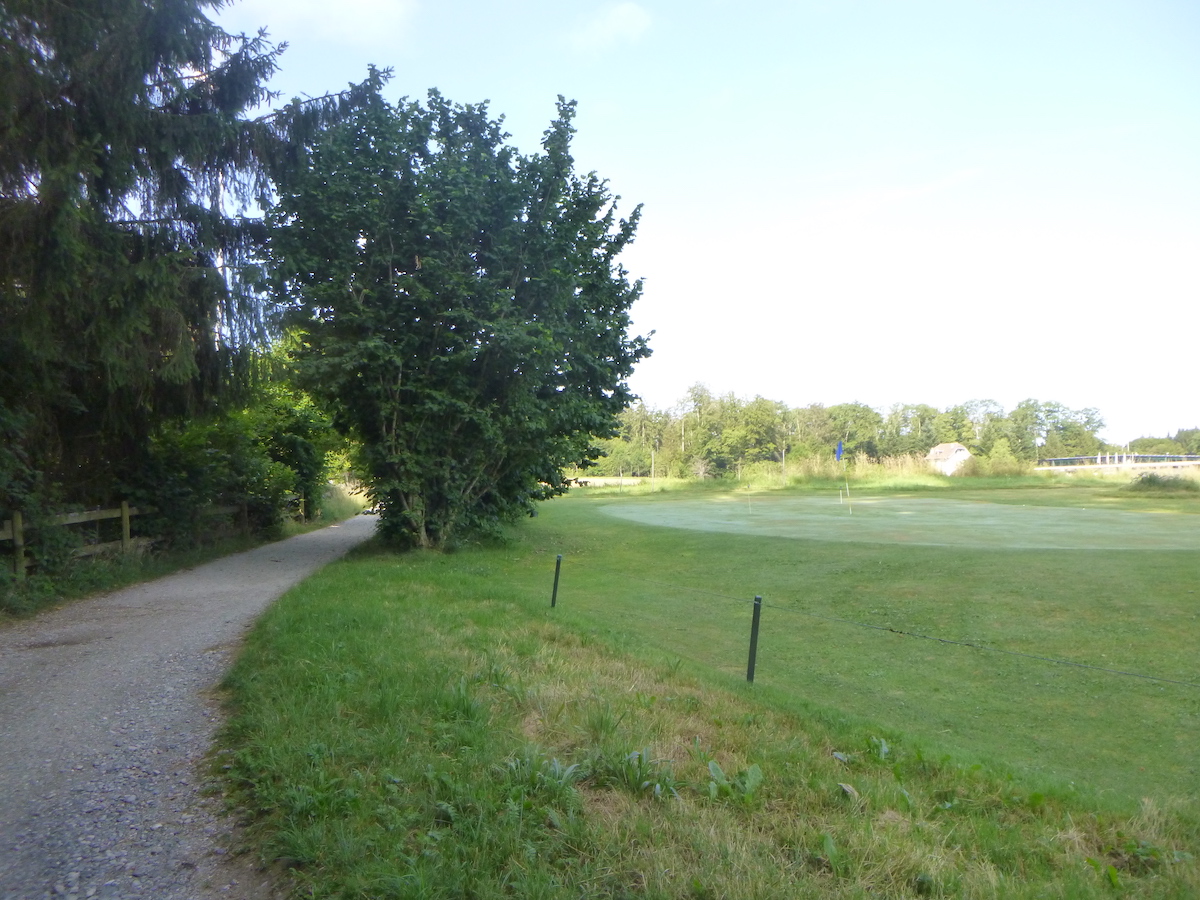 |
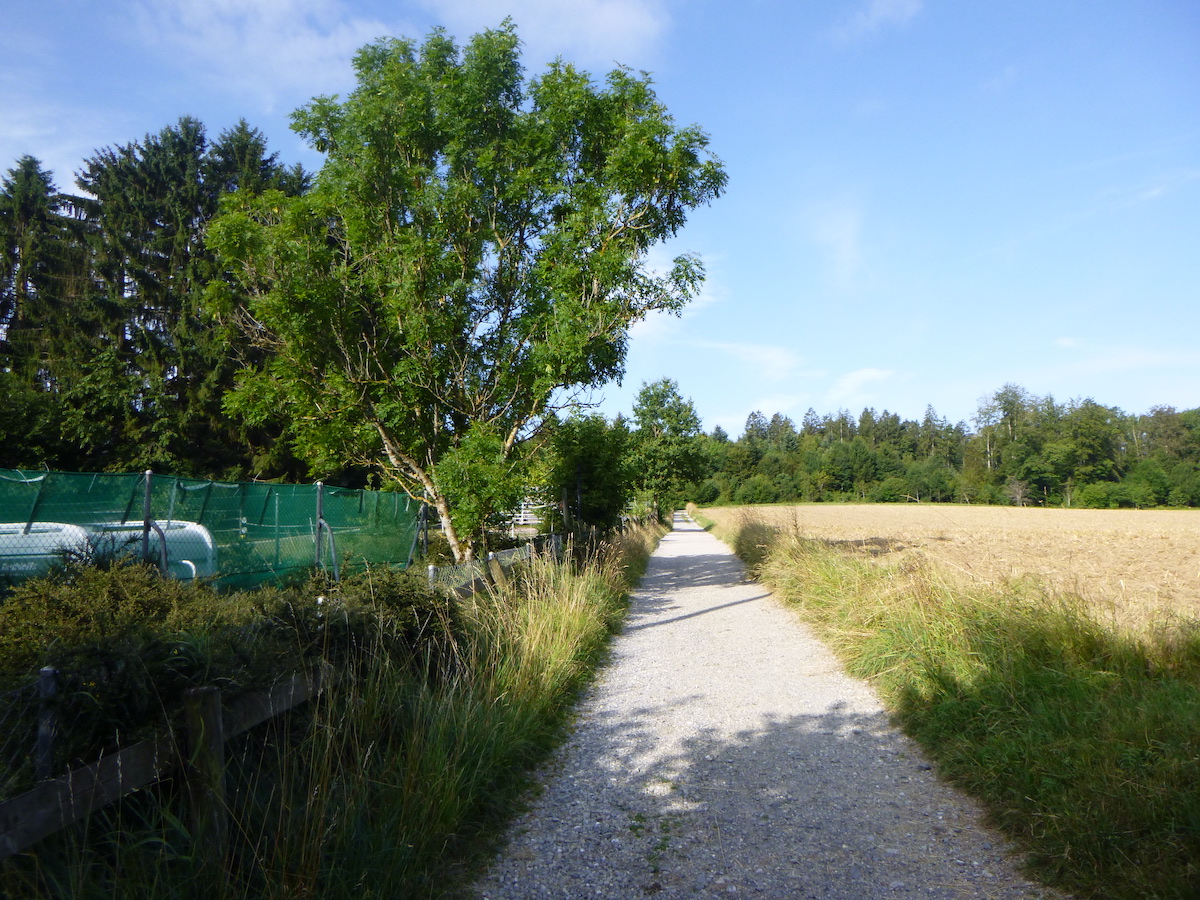 |
| In this region, riding arenas are as numerous as stars in a cloudless sky, witnesses to a shared passion for equine grace. |
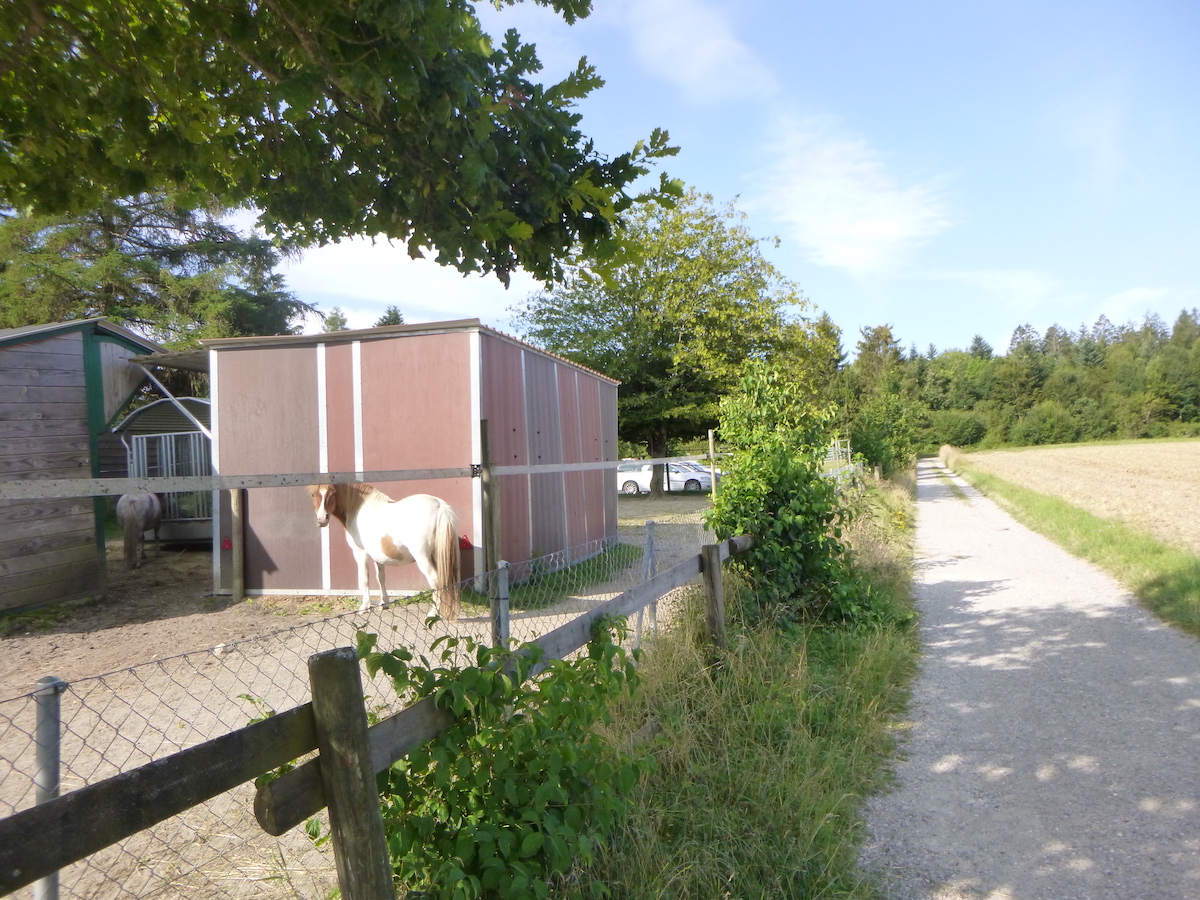 |
 |
| Then, like an adventurer returning to the main path after an escapade, the route rejoins the tarmac at the entrance to Vers Chez les Blanc. |
 |
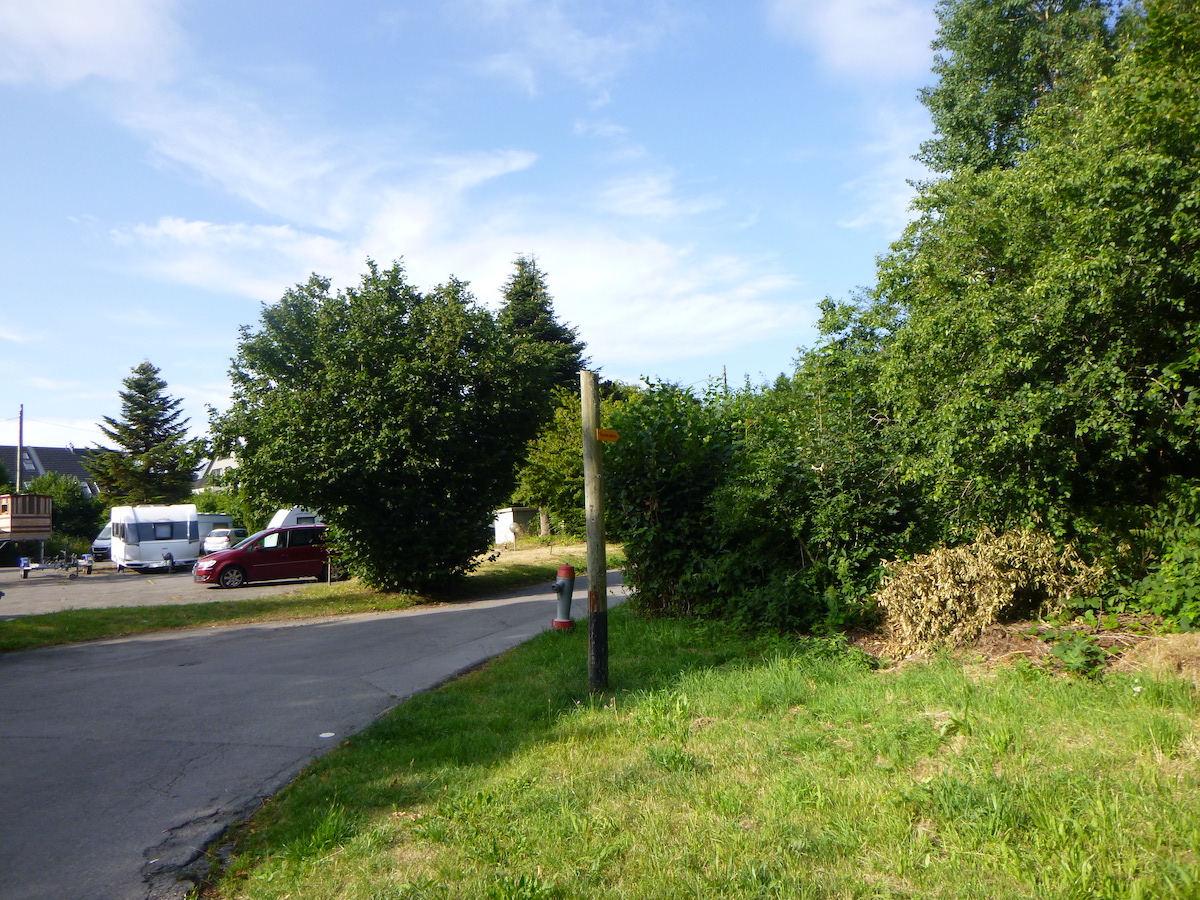 |
| You are then approaching the northern suburbs of Epalinges, a coveted jewel for the region’s inhabitants, nestled between the majestic Jorat-Woods. Housing developments sprout like flowers in a well-kept garden, offering a haven of peace to those who aspire to serenity. The road stretches to the Carillère restaurant, resembling a silver thread unwound in a green setting. |
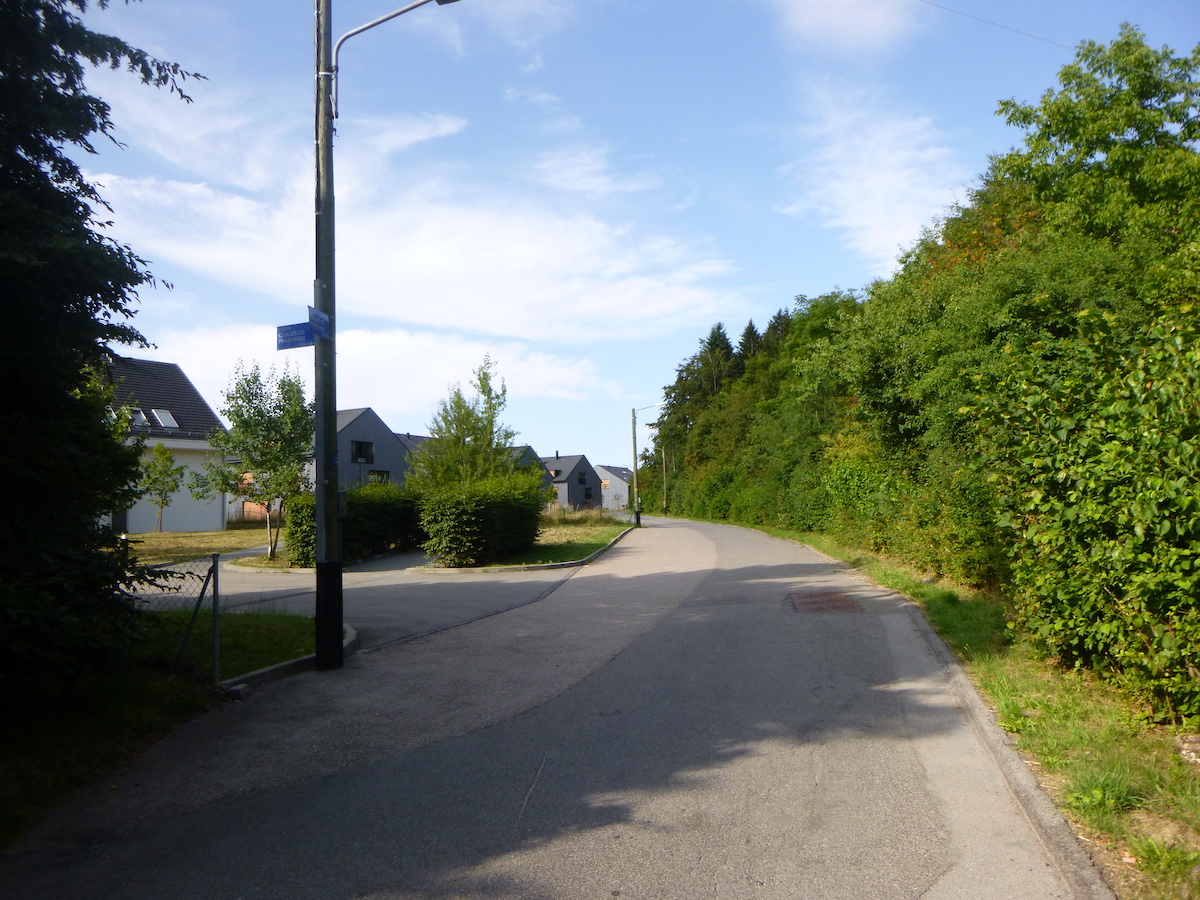 |
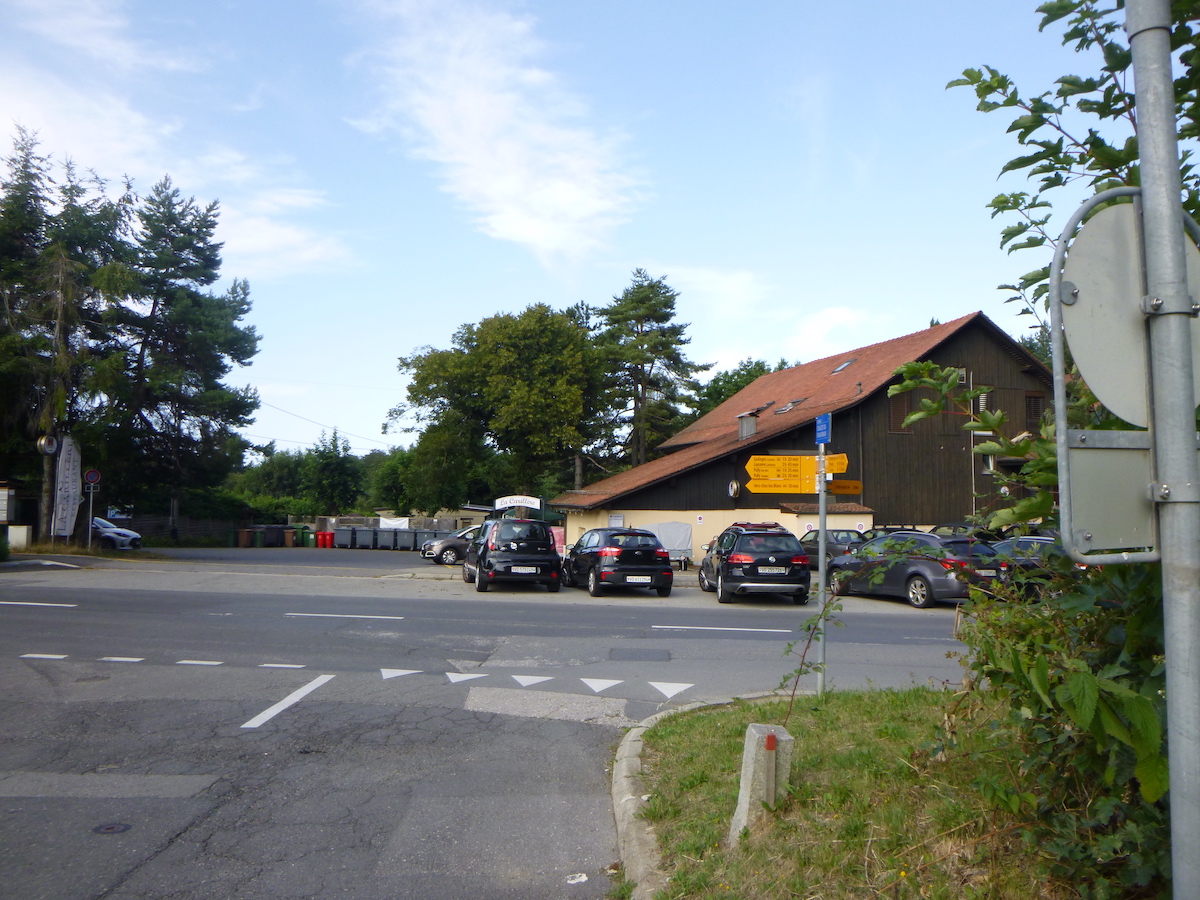 |
At two hours forty-five from the center of Lausanne, a stone’s throw from the bustling heart of Vers Chez-les Blanc, you find yourself at the crossroads, ready to immerse yourself in this living tapestry of landscapes and diverse possibilities.
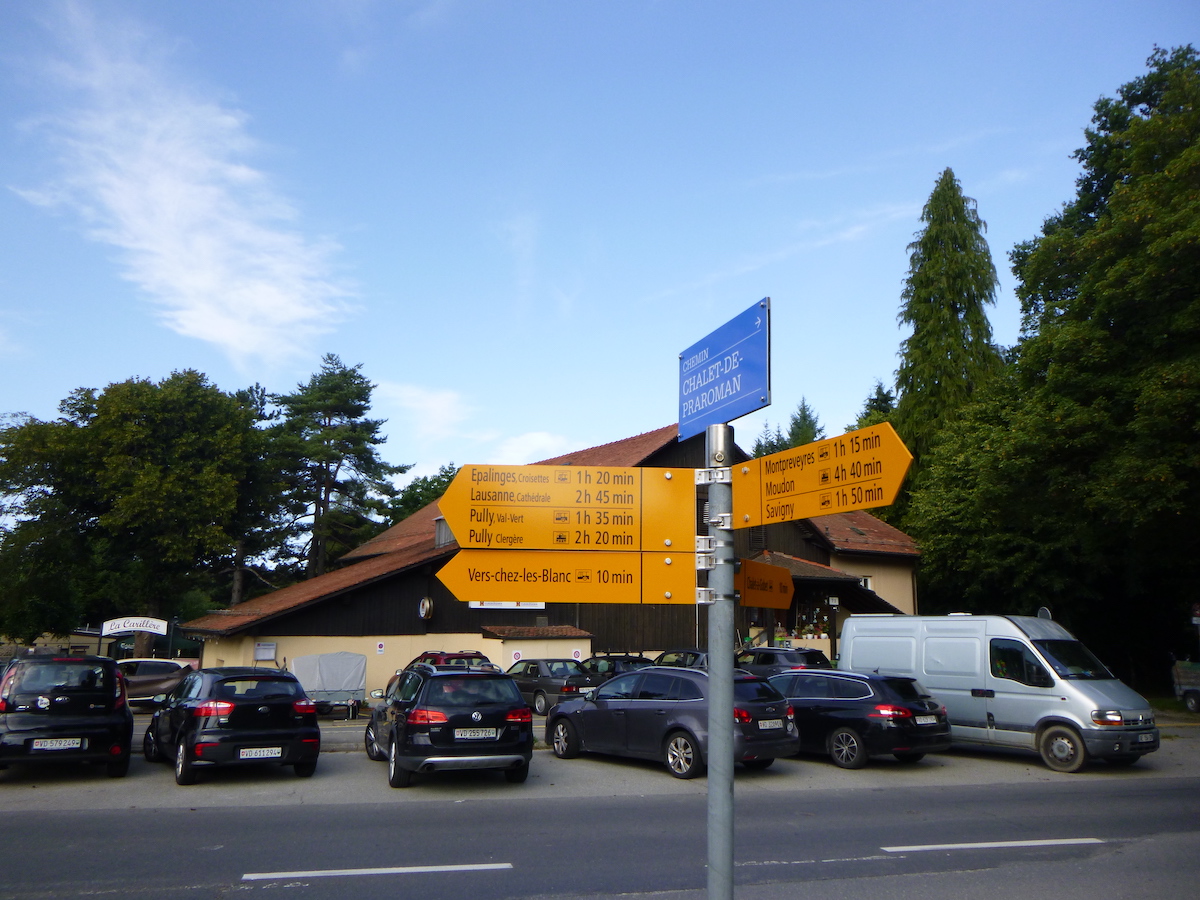
| The route then follows the road, like an ephemeral dance, to the Pra Collet campsite, where nature does not reveal itself in all its splendor. |
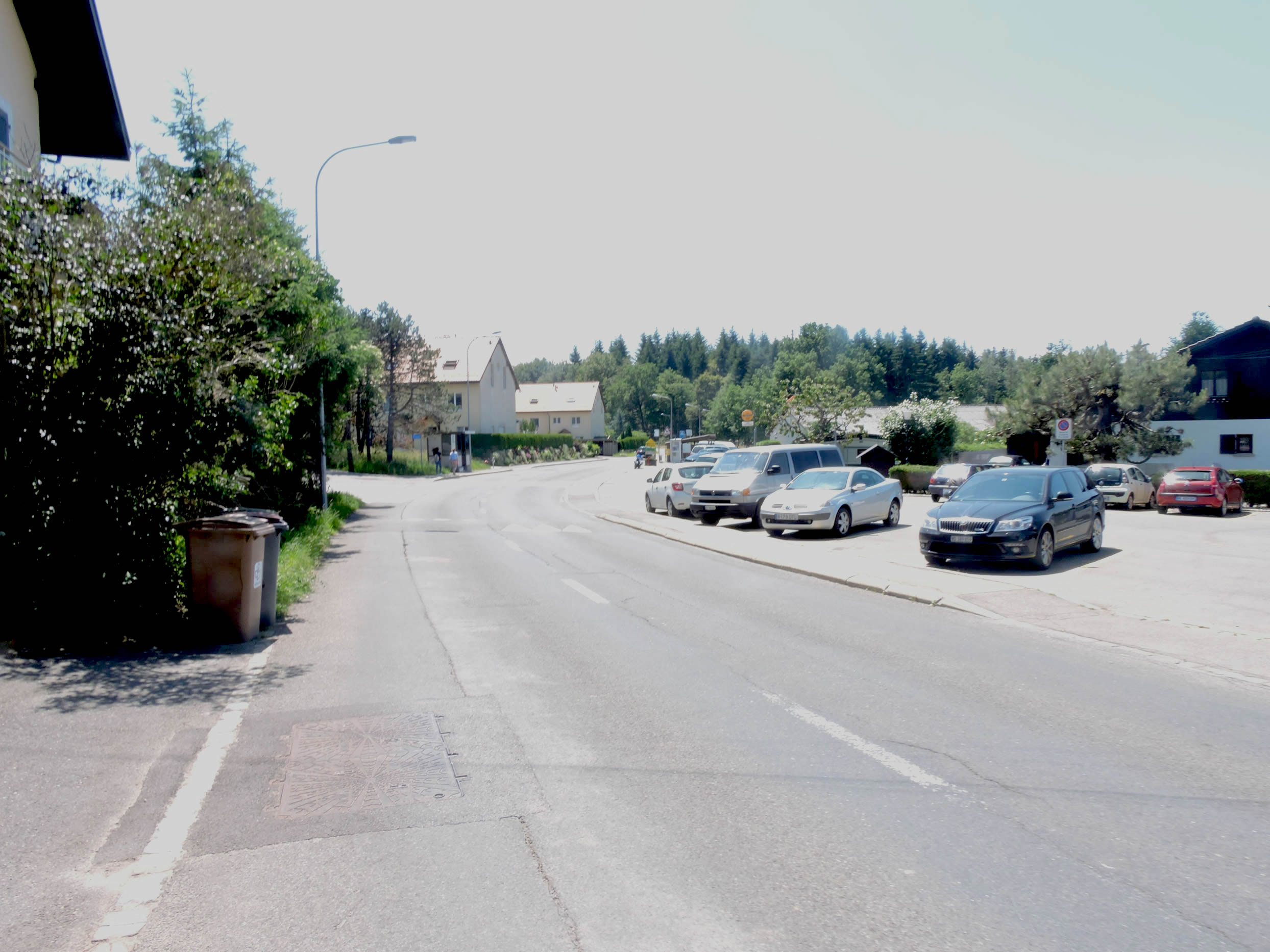 |
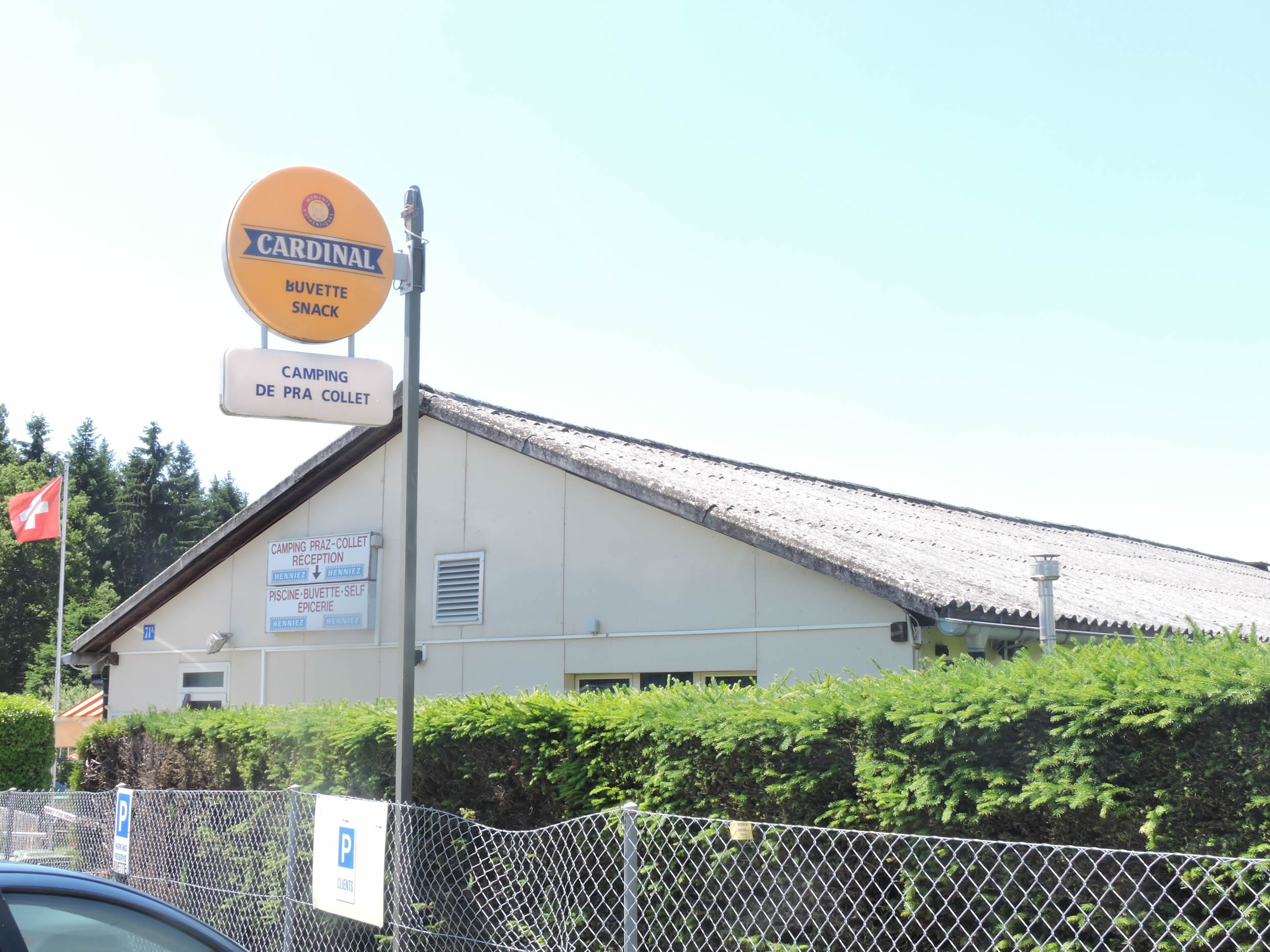 |
| Shortly after the campsite, the adventure takes a new turn as the path veers into the forest, offering intrepid souls a mountain biking trail fraught with obstacles. Four kilometers of adrenaline across three difficulty levels, a true symphony for bike enthusiasts. |
 |
 |
| This forest, the Peccau-Wood, is a living work of art, a moving tableau where each step reveals a new perspective. It offers cyclists and walkers an infinite playground, where the scents of the earth mingle with the murmur of dancing leaves. Just follow the yellow markings, like a guiding star in the night, to immerse yourself in this oasis of tranquility. |
 |
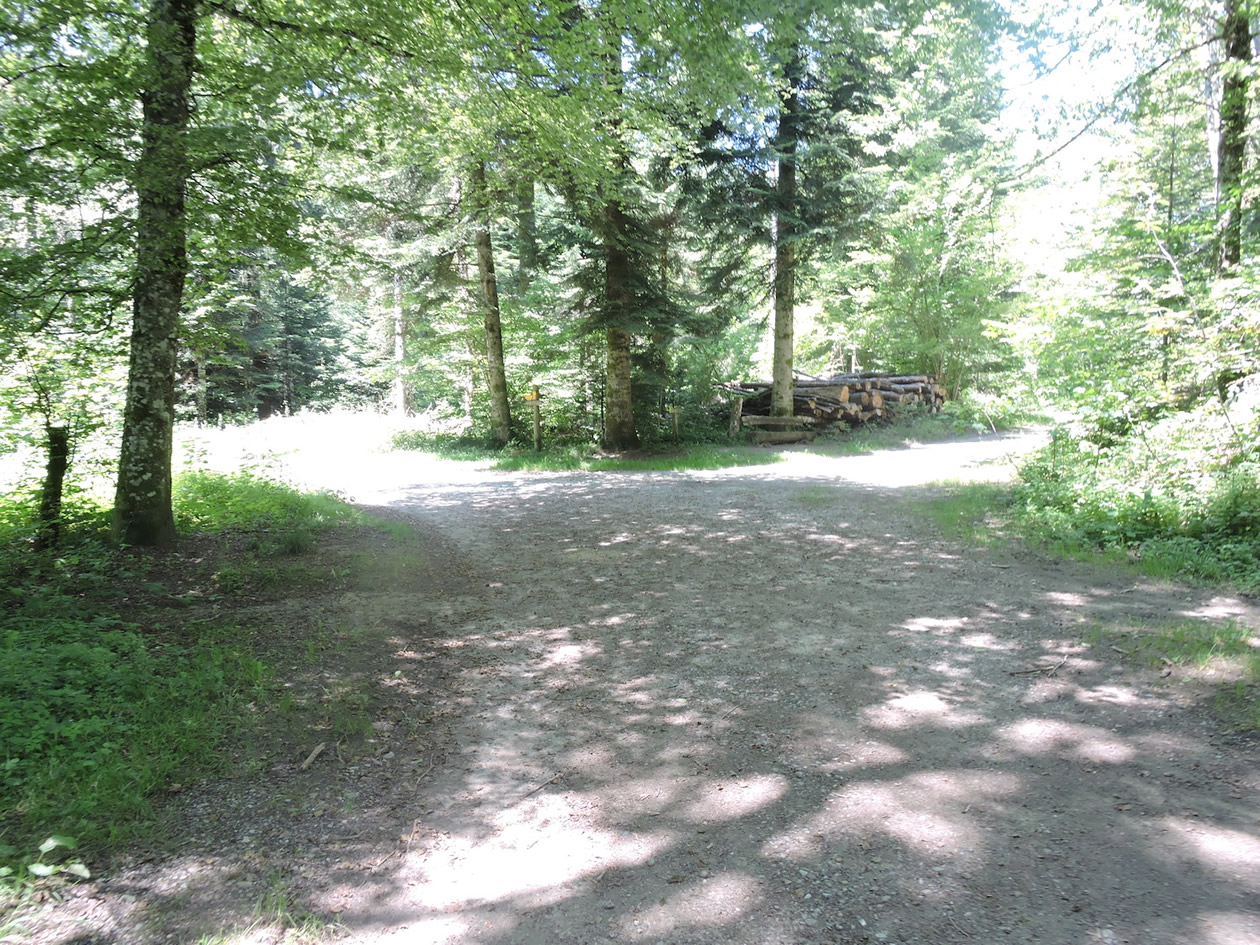 |
| The gentle slope, as tender as a caress under the majestic beech trees, guides the traveler’s steps into the unknown, while piles of cut wood lined up like silent sentinels bear witness to the passage of time. Hikers’ and cyclists’ paths sometimes intersect in a harmonious ballet where each encounter is a chance to discover another aspect of this natural jewel. |
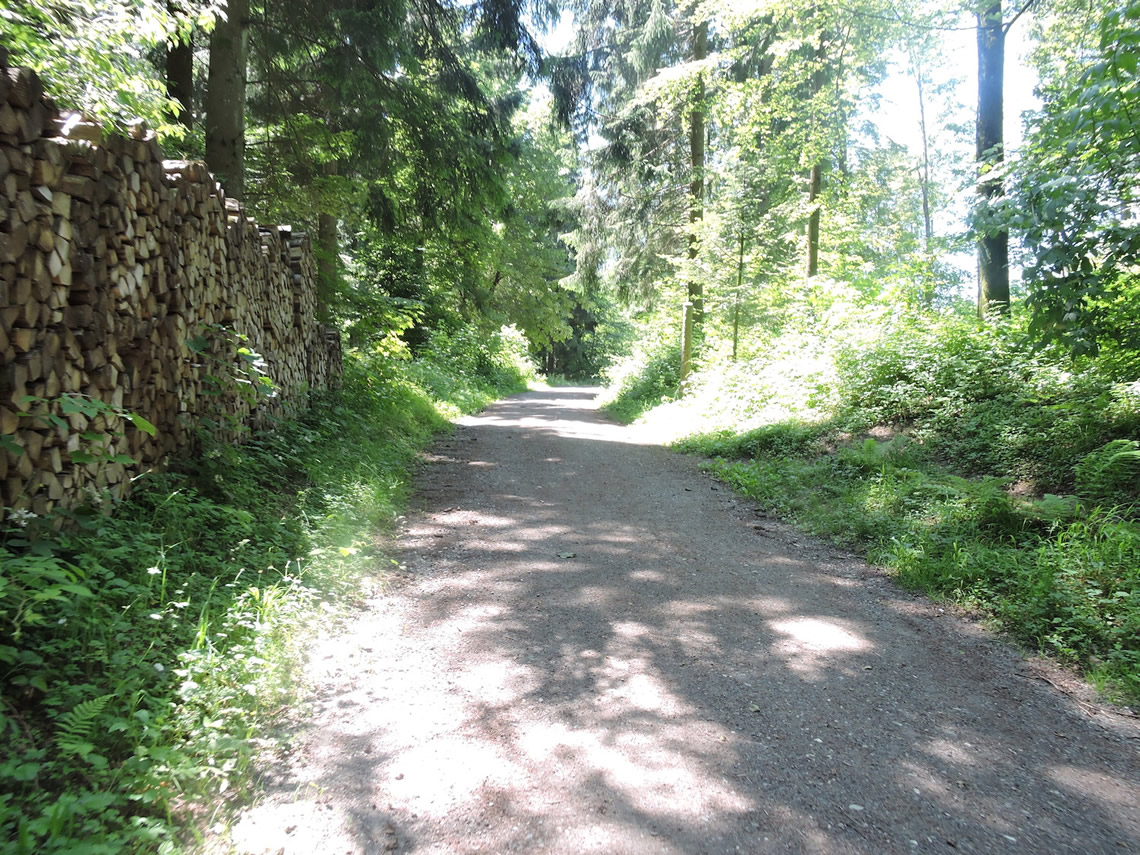 |
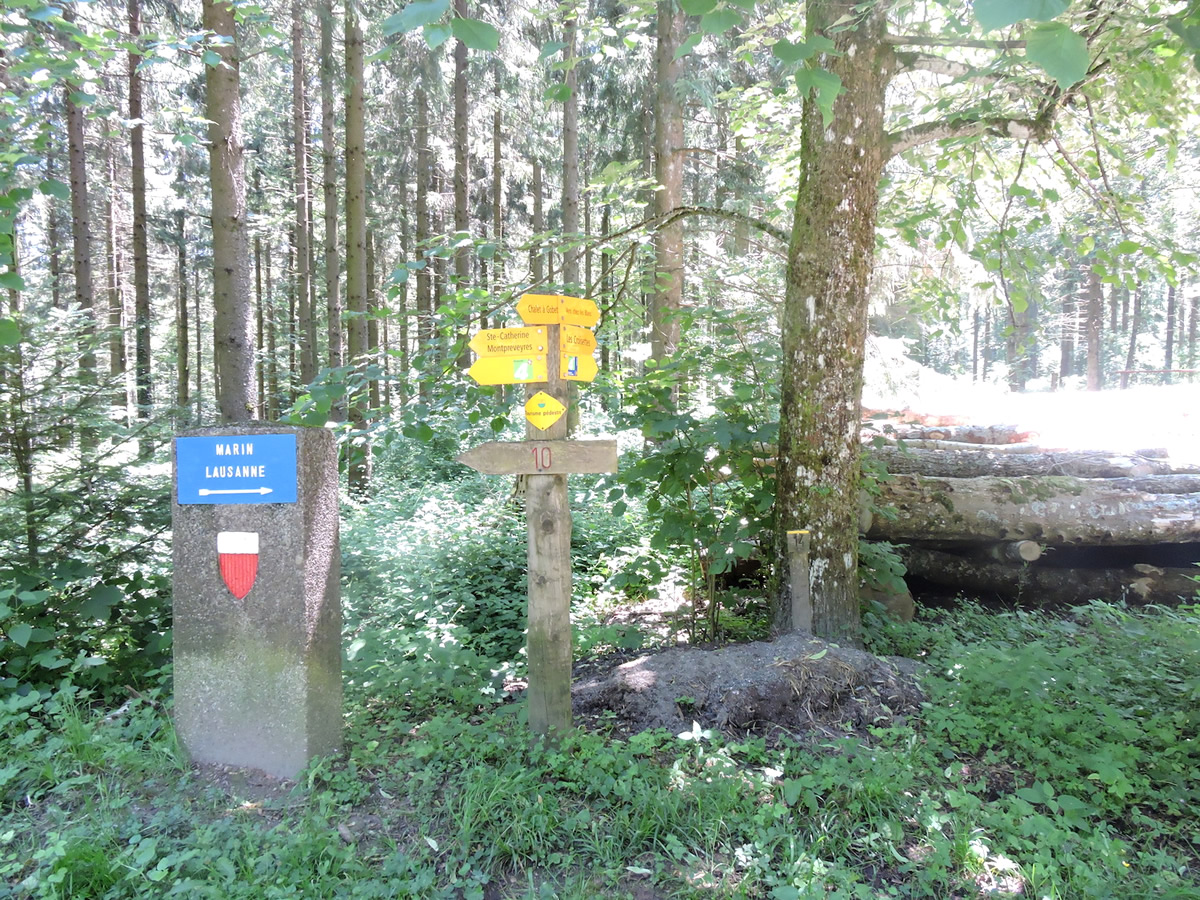 |
| Towards the end of the forest, the path reveals itself in all its splendor, descending steeply to a small road that leads to Vers-chez-les-Blanc. It is here that the magic of this place is fully felt, where each step is an invitation to wonder. |
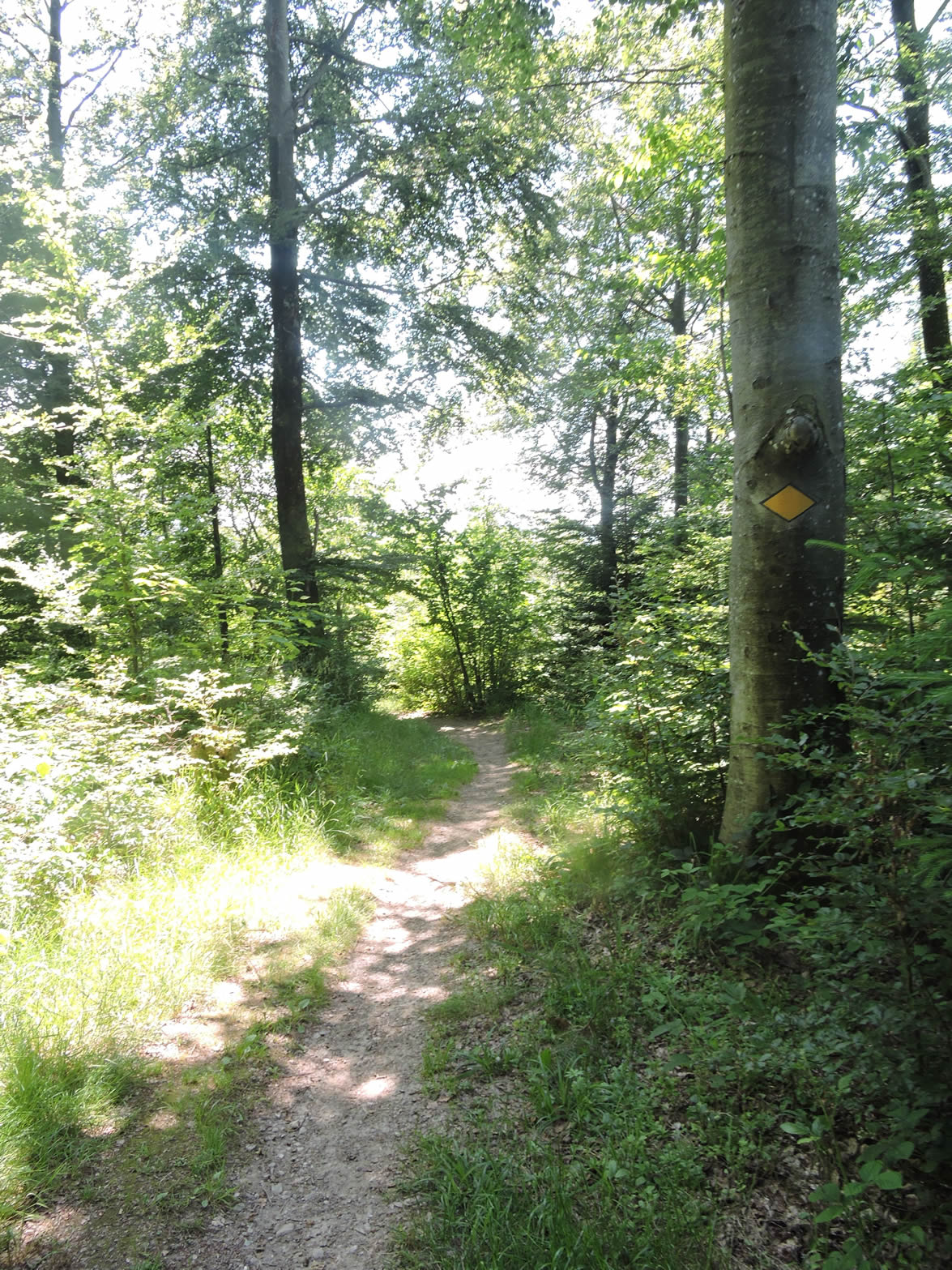 |
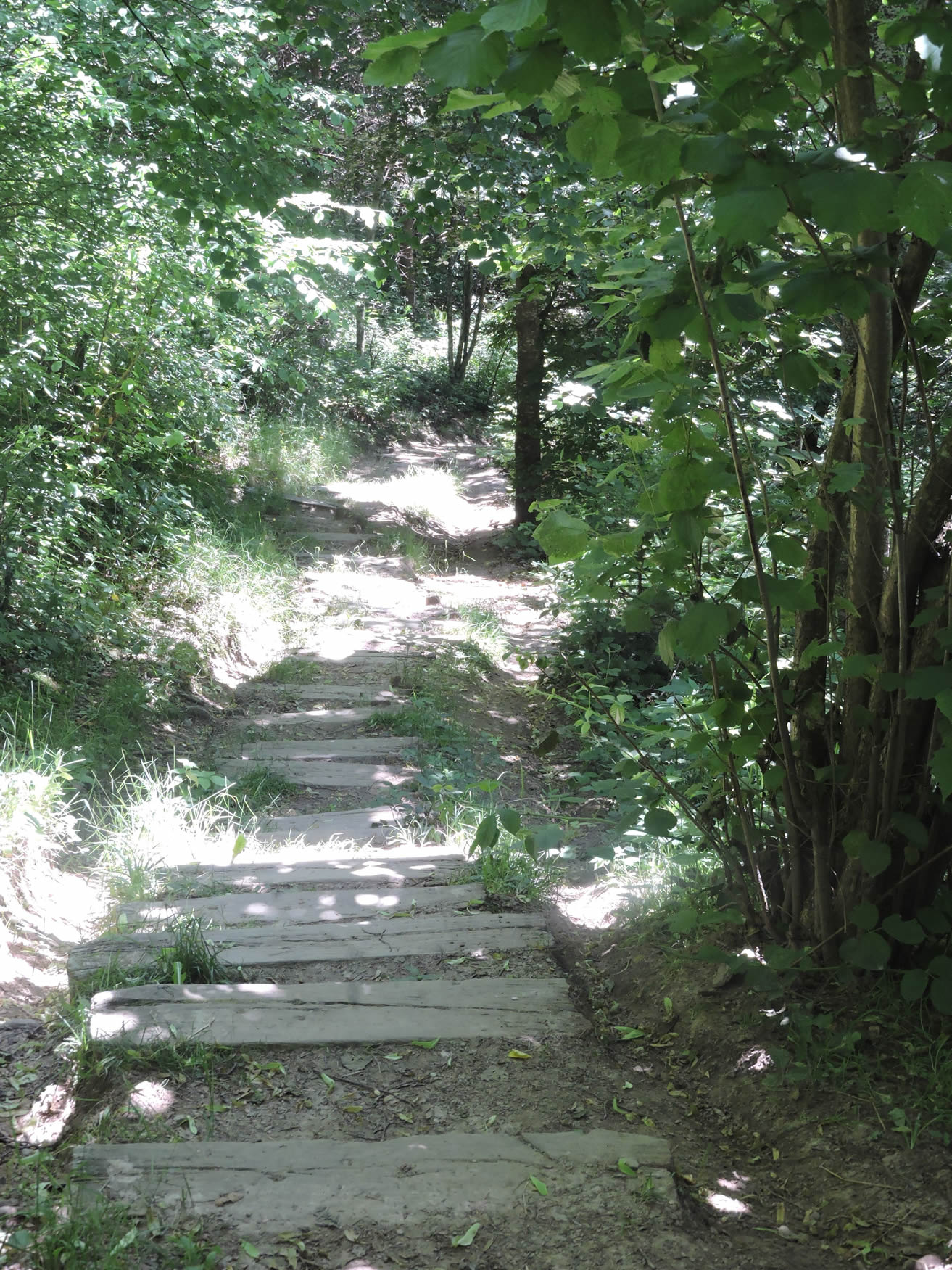 |
| You have arrived at Les Moliettes, just a few steps from Vers-chez-les-Blanc, as if time itself had slowed down to allow you to savor the present moment. |
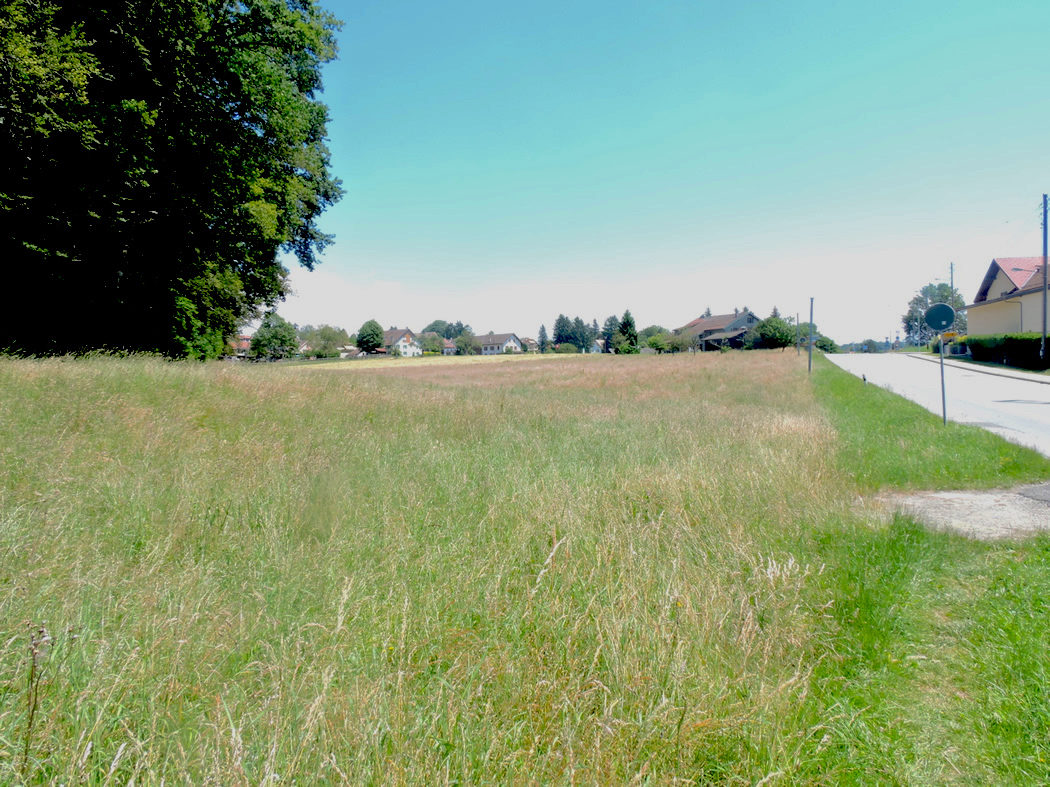 |
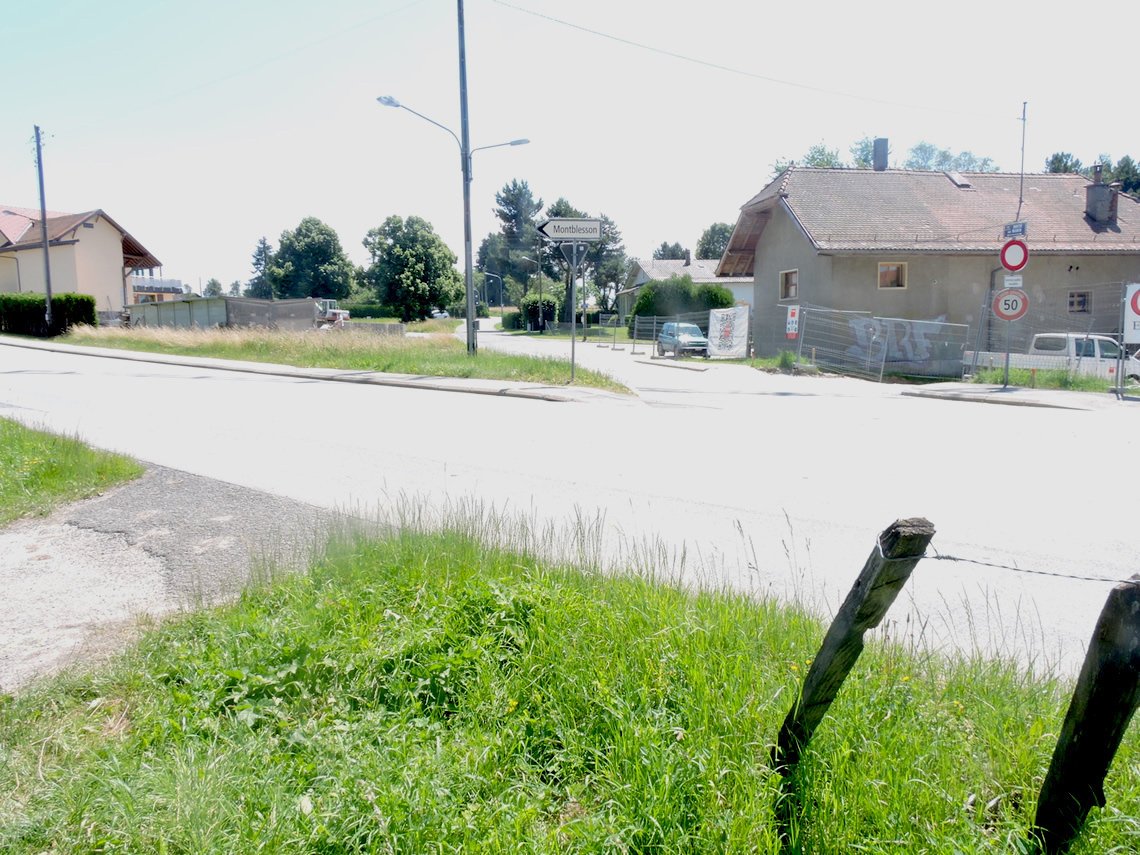 |
| The route then crosses the road and cuts at right angles through a semi-industrial area, towards the Nestlé research center. |
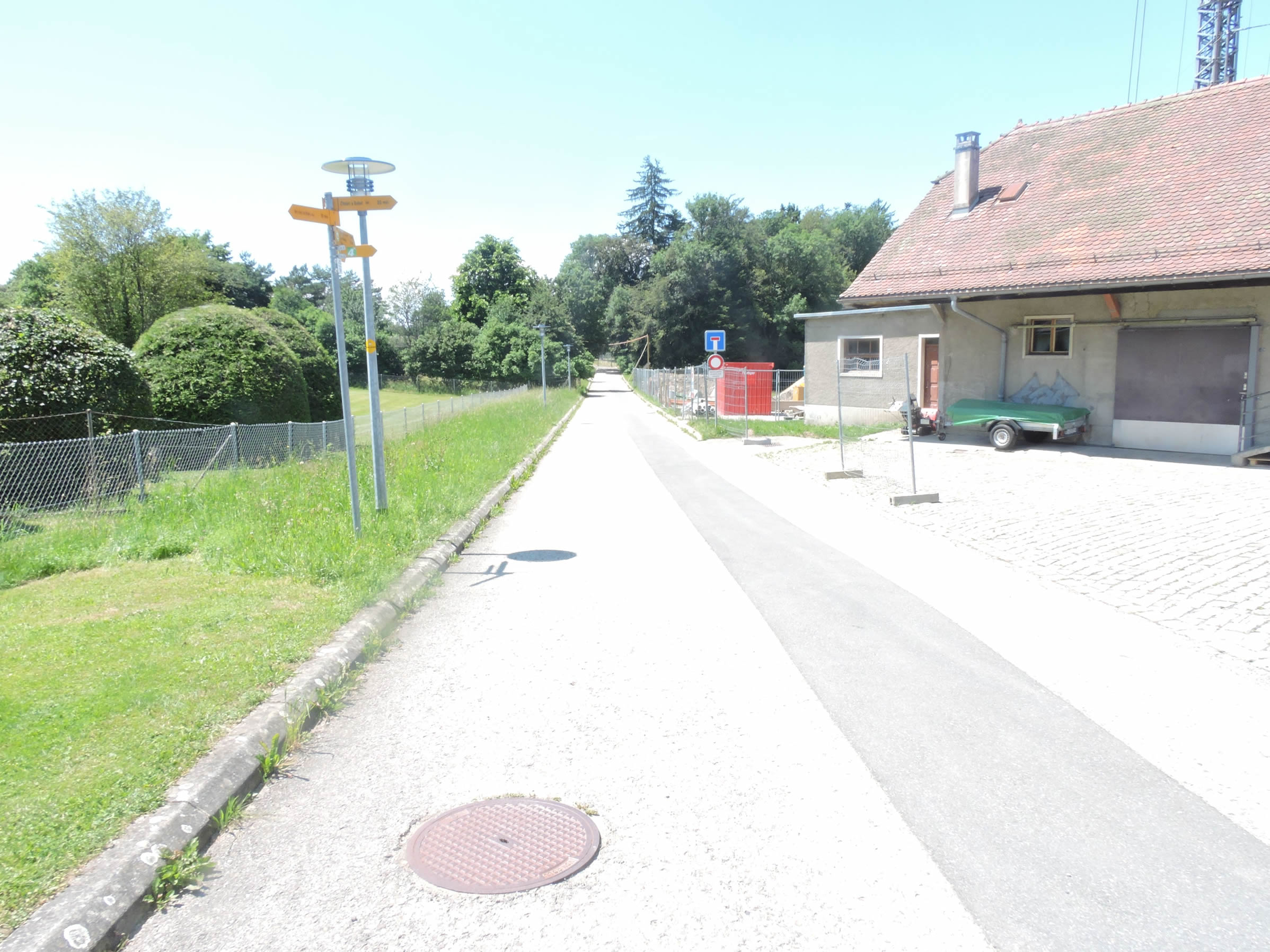 |
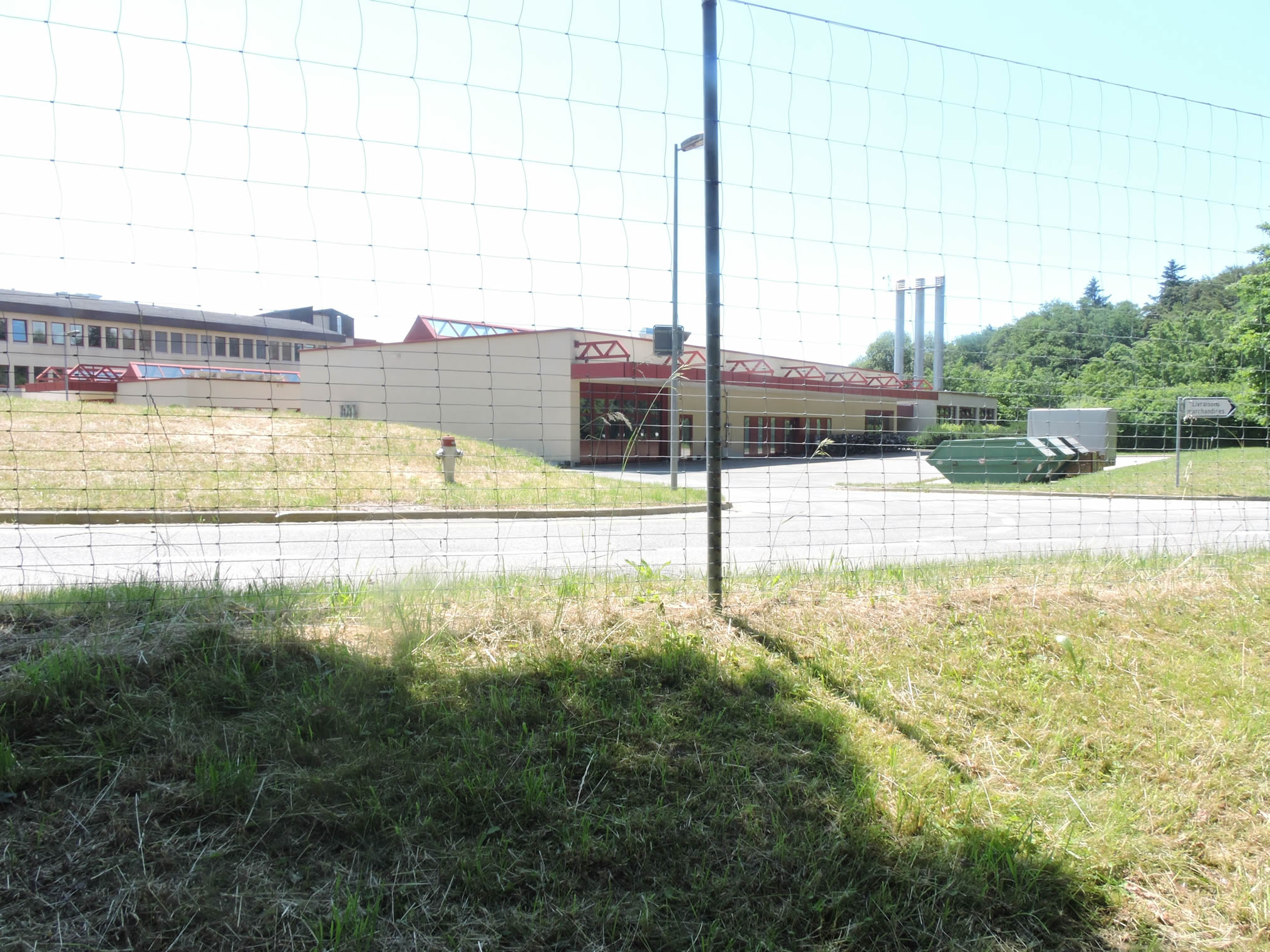 |
Section 3: Amidst wilderness and civilization.

Overview of the route’s difficulties: It’s quite a demanding journey, mostly downhill.

| The winding journey unfolds its twists and turns around the Nestlé research center before delving once more into the woods. The majestic heights of Epalinges harbor within them an uninterrupted succession of forests, a living tableau where foliage weaves together in a symphony of vibrant greenery. |
 |
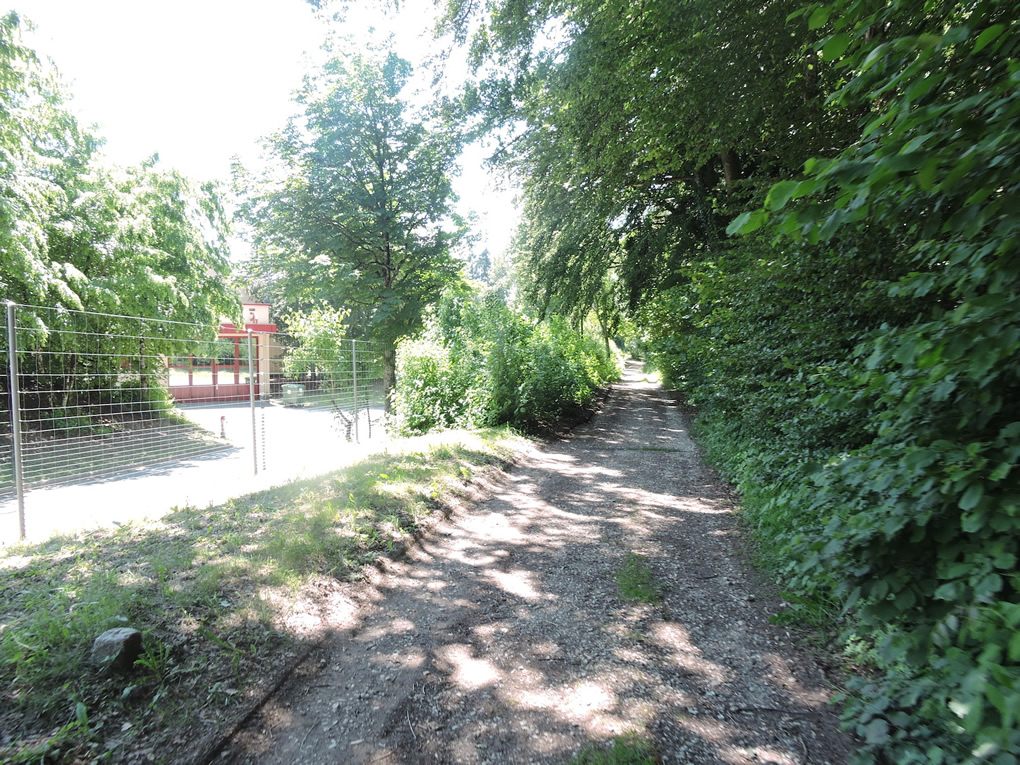 |
| Here, a broad and welcoming dirt path gracefully descends into a charming valley where the Flon Morand, akin to a silvery ribbon, meanders amidst stones and roots. The steep slope, perfectly challenging, dares any attempt to ascend its flanks, rising at over 15%, plunging the valley into deep and mysterious shadows. |
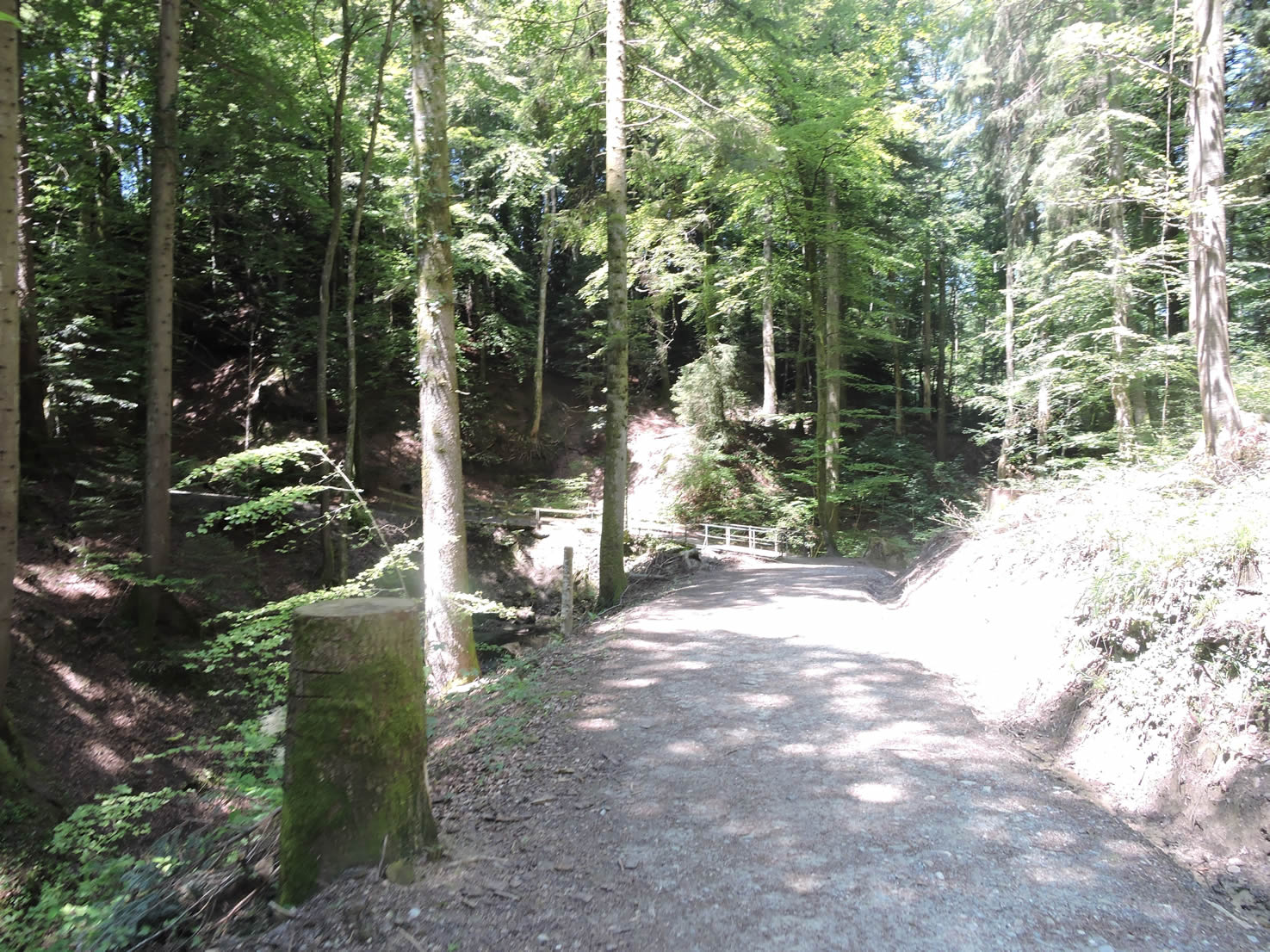 |
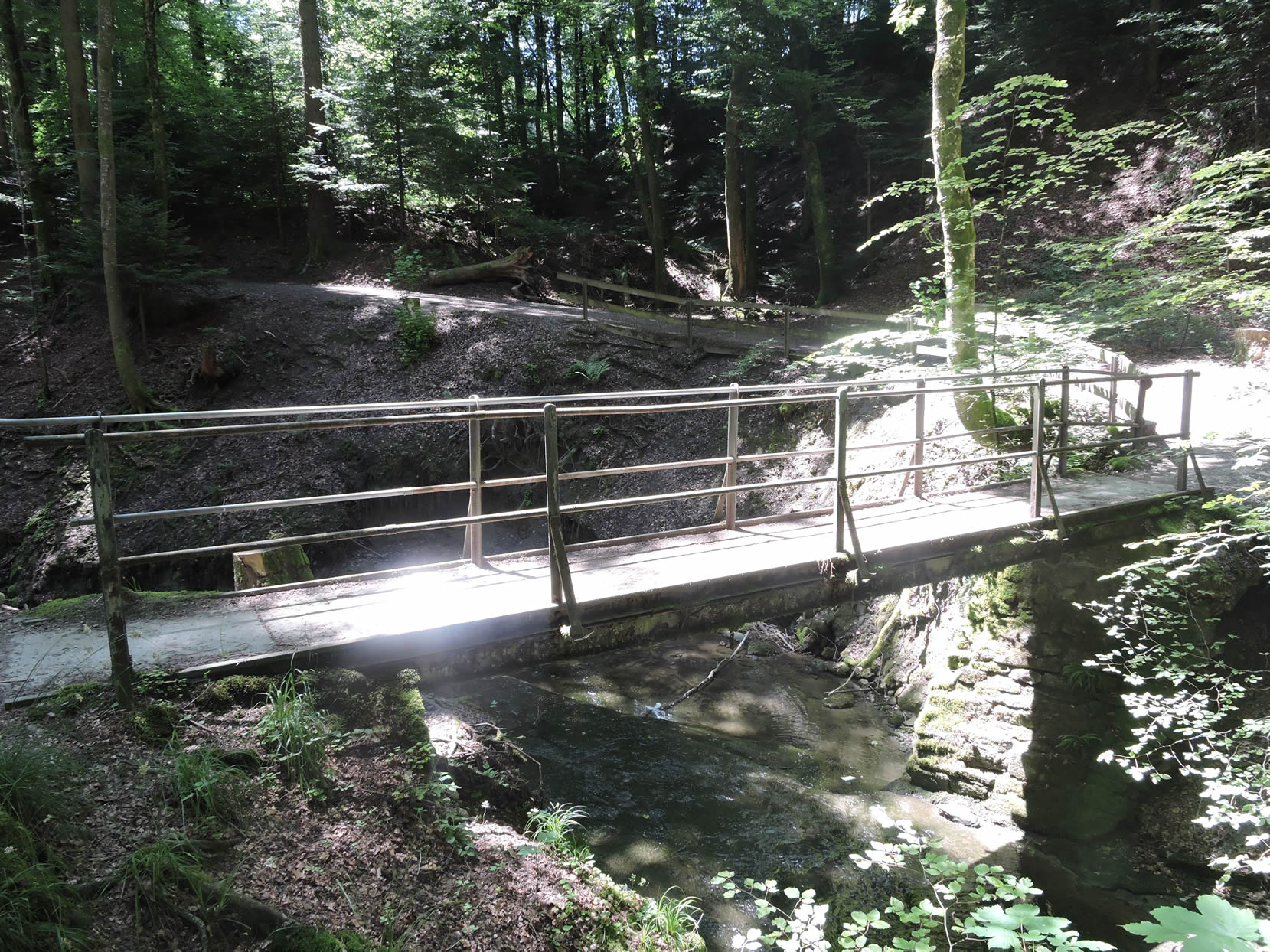 |
| The astonishment is perpetual, constantly renewed, facing the preservation of these wild places, where pristine nature thrives, untouched despite the proximity of sprawling cities below. |
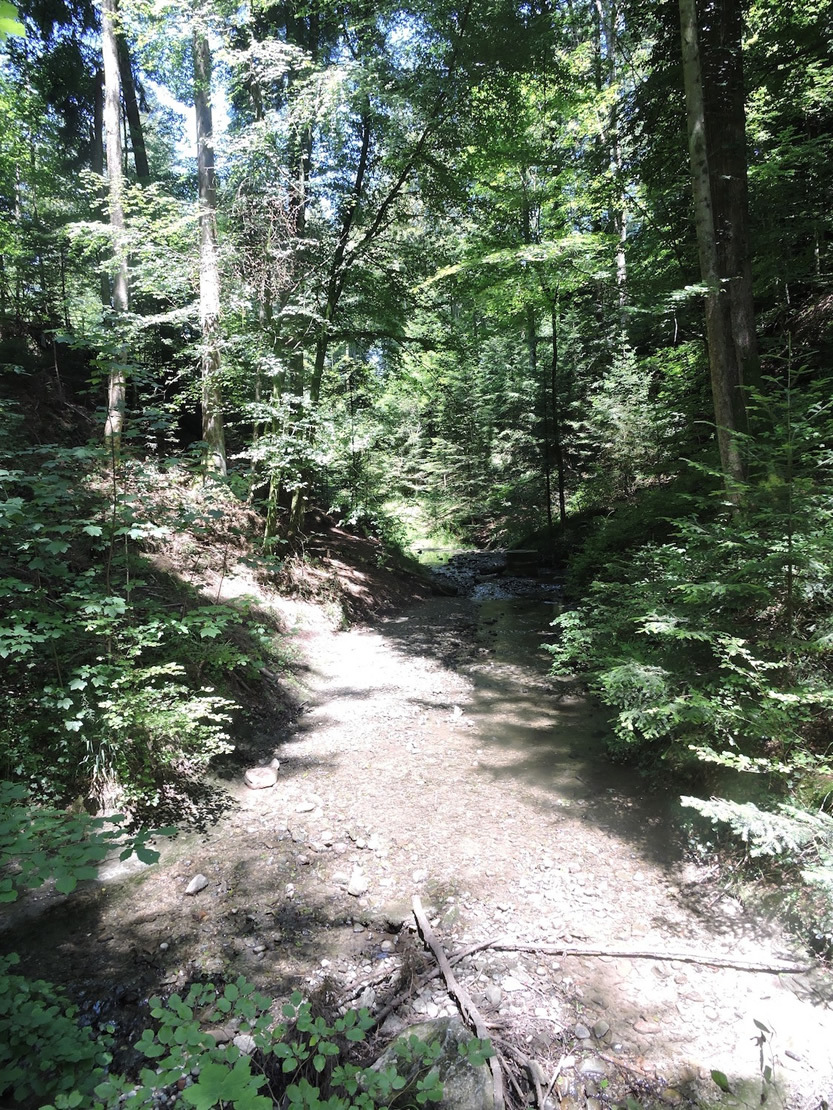 |
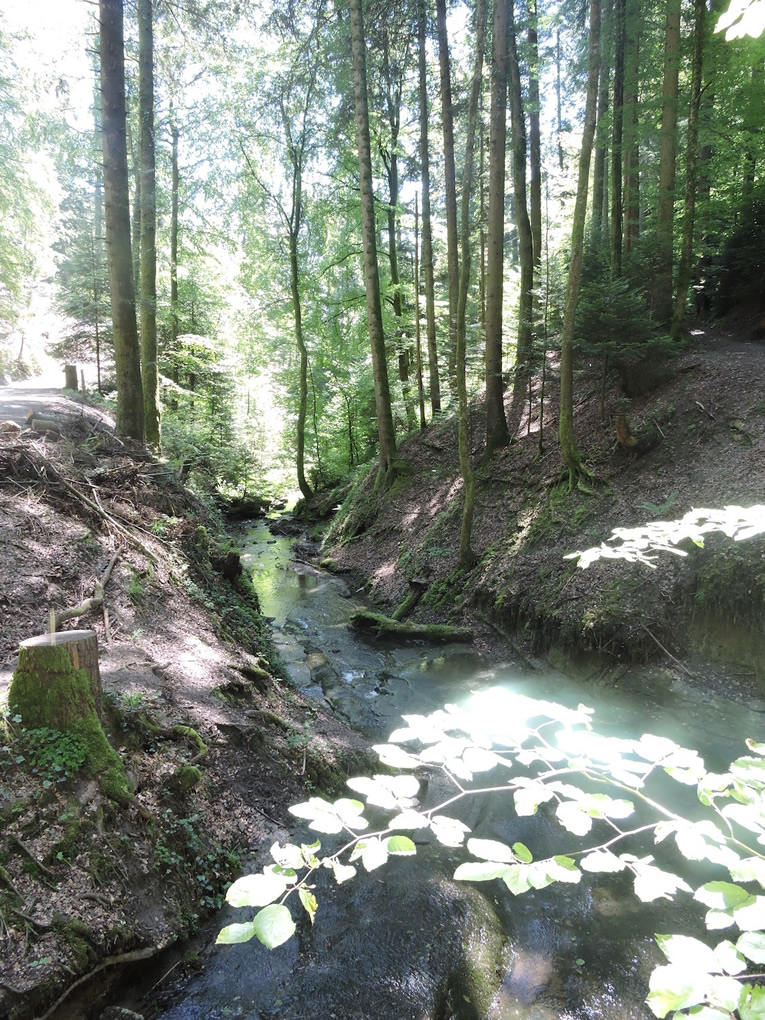 |
| Nestled in the dale, after confidently crossing the meandering course of the river, the path initiates a similarly vigorous ascent, albeit brief. |
 |
 |
| Under the protective canopy of majestic beeches and tall ashes, it intersects with a modest tributary of the Flon Morand, a playful stream that adds its melody to the symphony of nature. |
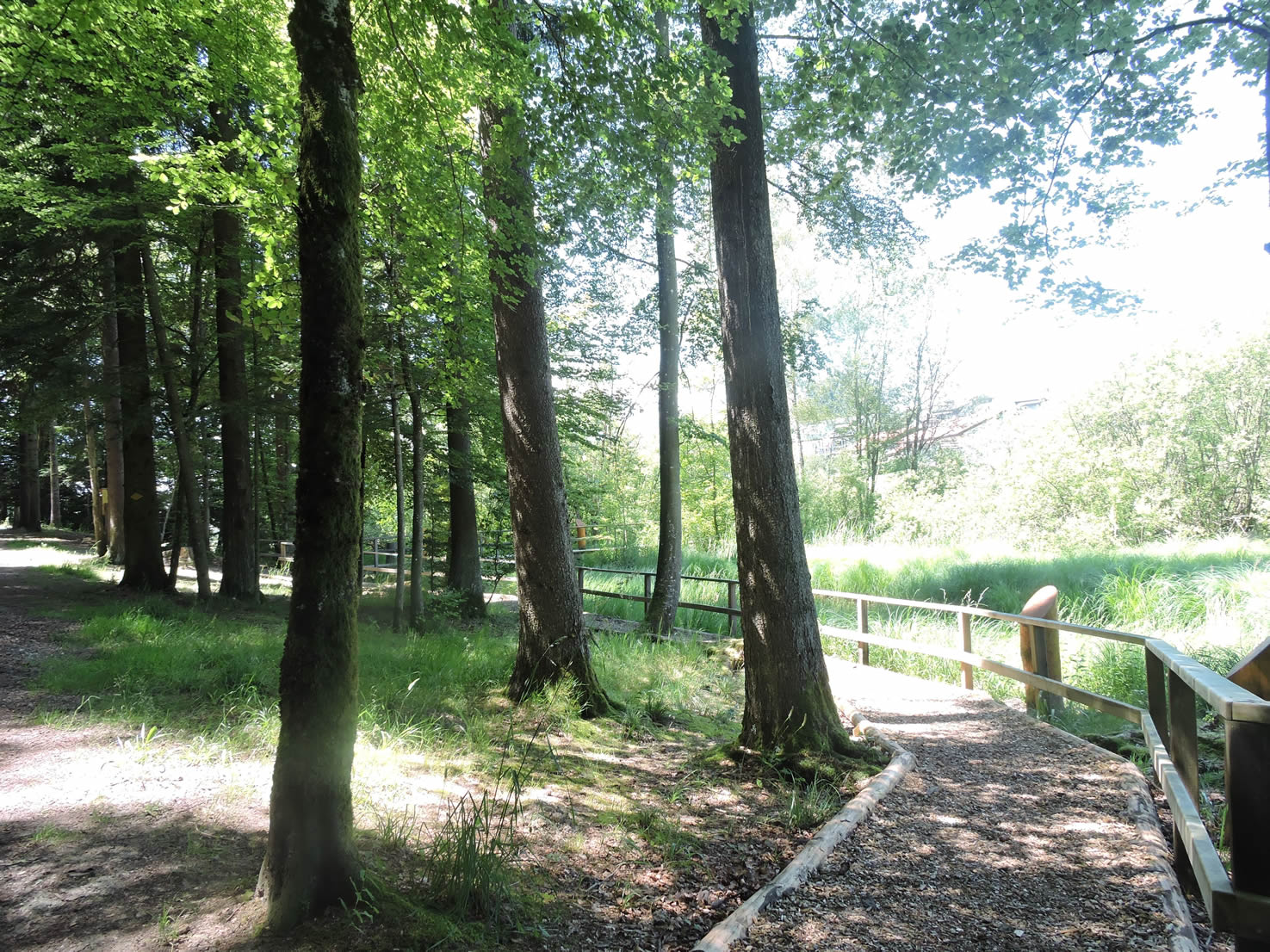 |
 |
| Then, in a final embrace with the forest, the path emerges from its green cocoon to meet the tarmac, guiding steps towards the heights of Epalinges, not far from the waste disposal site, where human activity leaves its mark, contrasting with sylvan tranquility. |
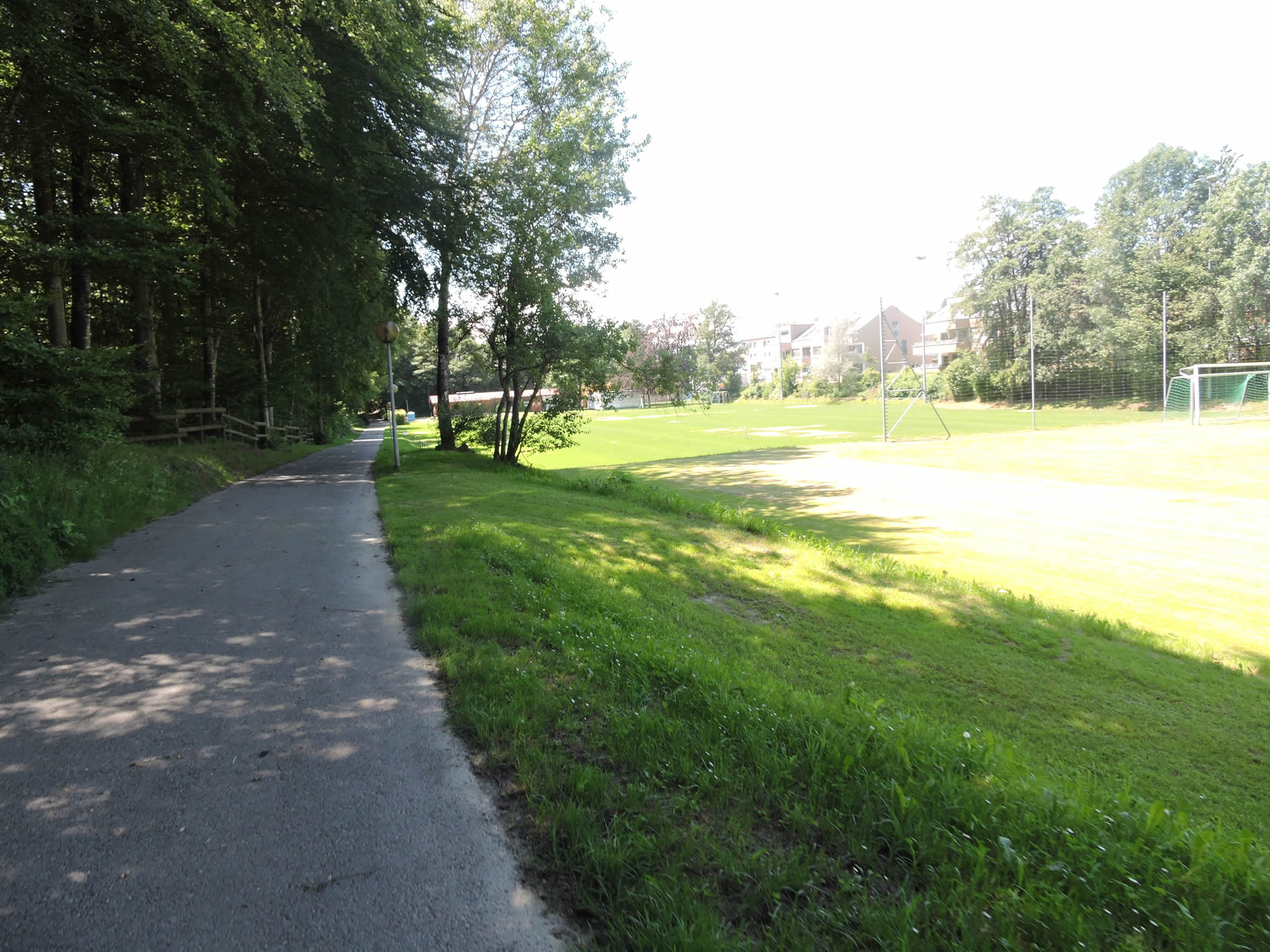 |
 |
| Further on, the trajectory sets course towards the Sylvana hospital, a geriatric sanctuary perched on the heights, akin to a benevolent beacon watching over the valley. |
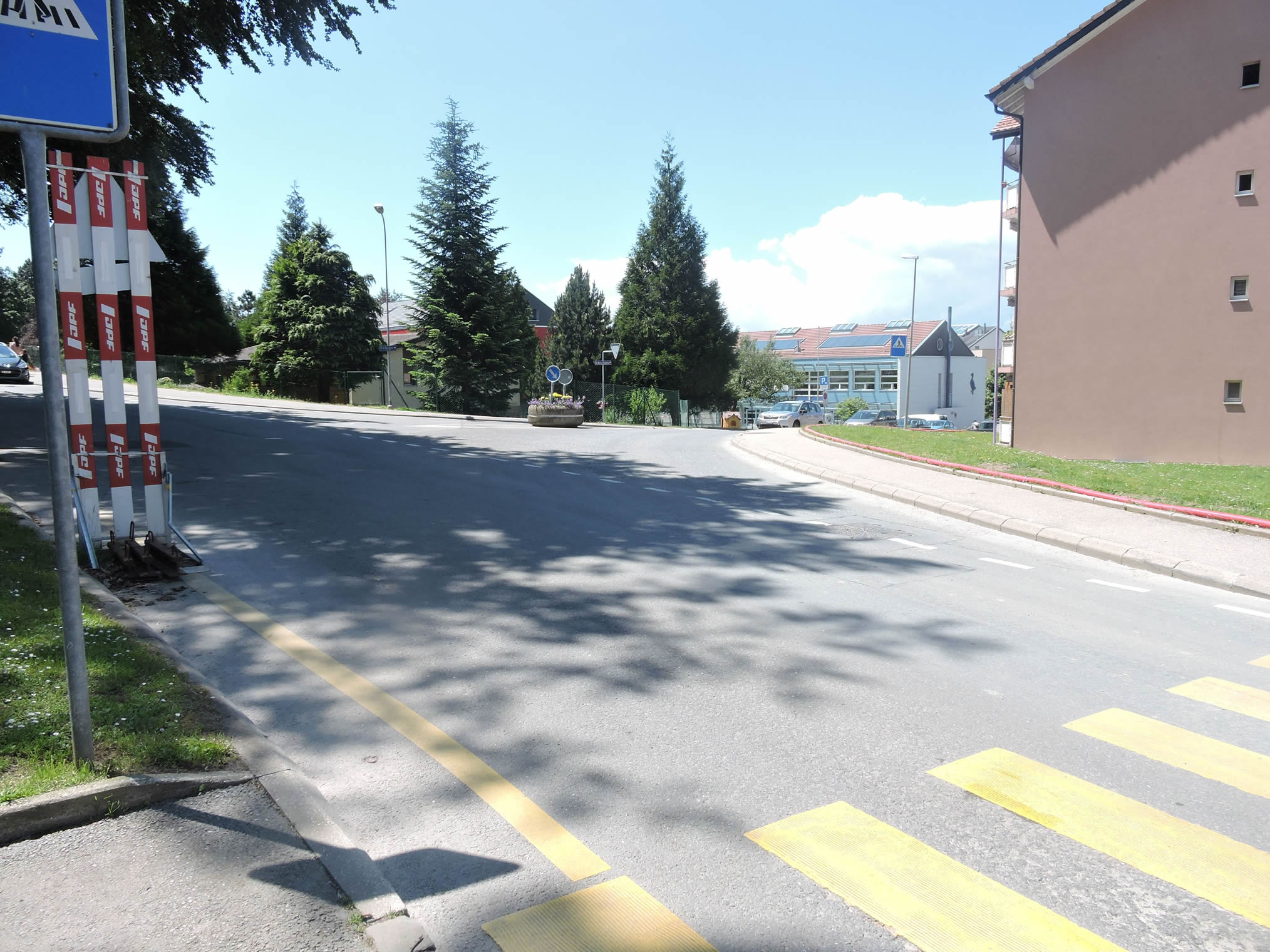 |
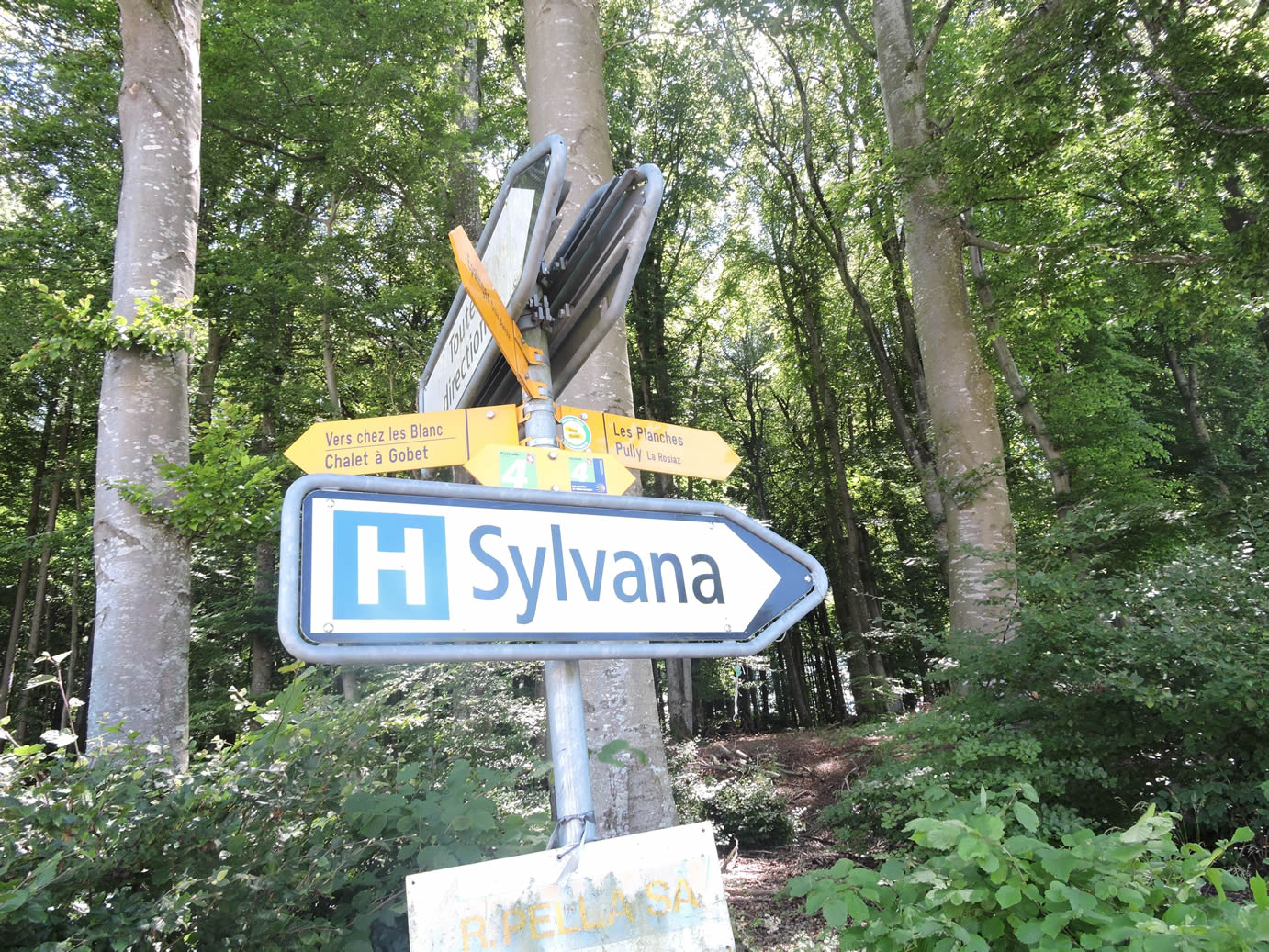 |
| Traversing the flank of a verdant hill, a road winds alongside the cemetery, ascending towards the hospital without delving into it. |
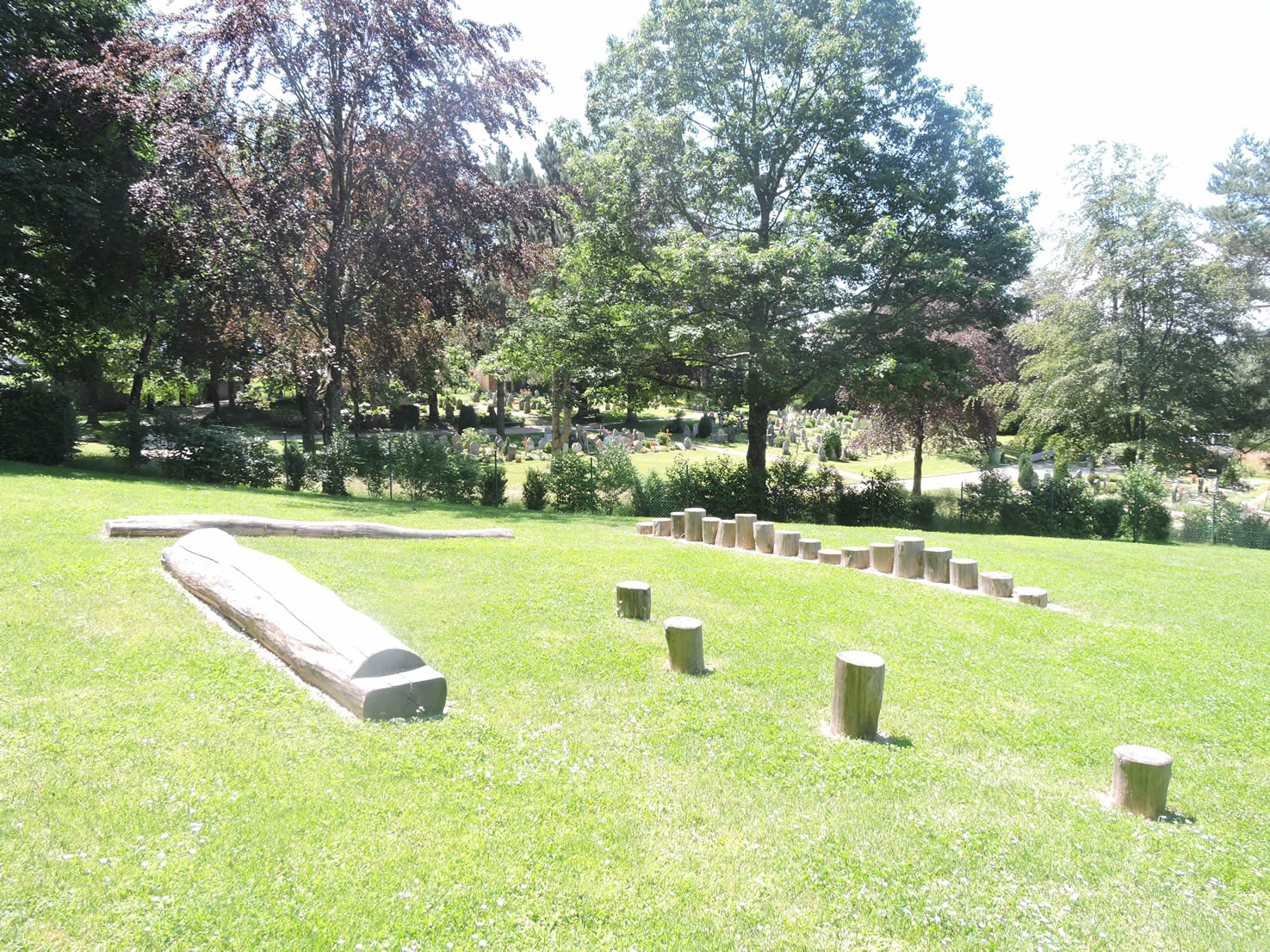 |
 |
| Then the road departs from the meadows to reach the Epalinges temple perched on the hill overlooking the cemetery. |
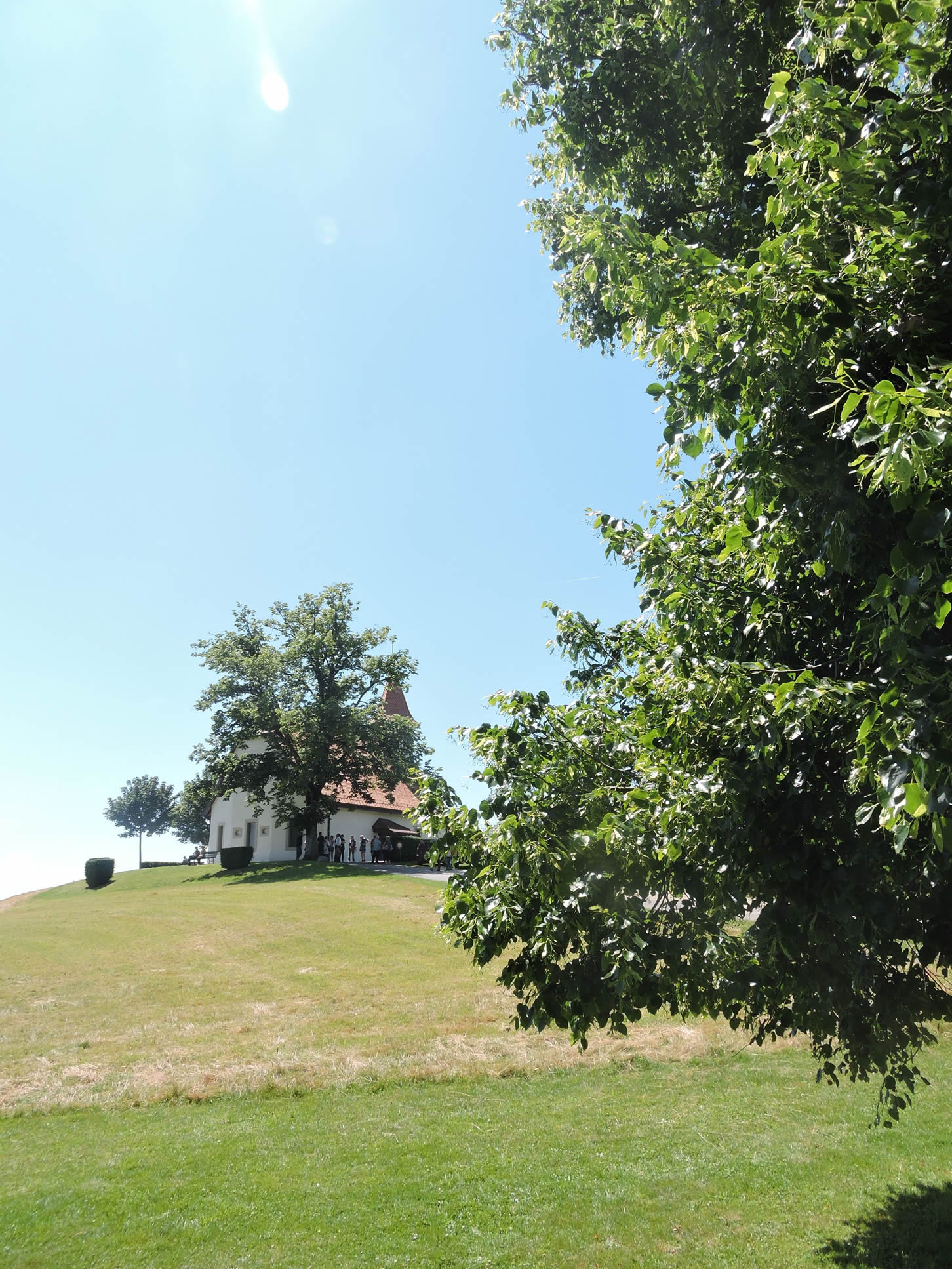 |
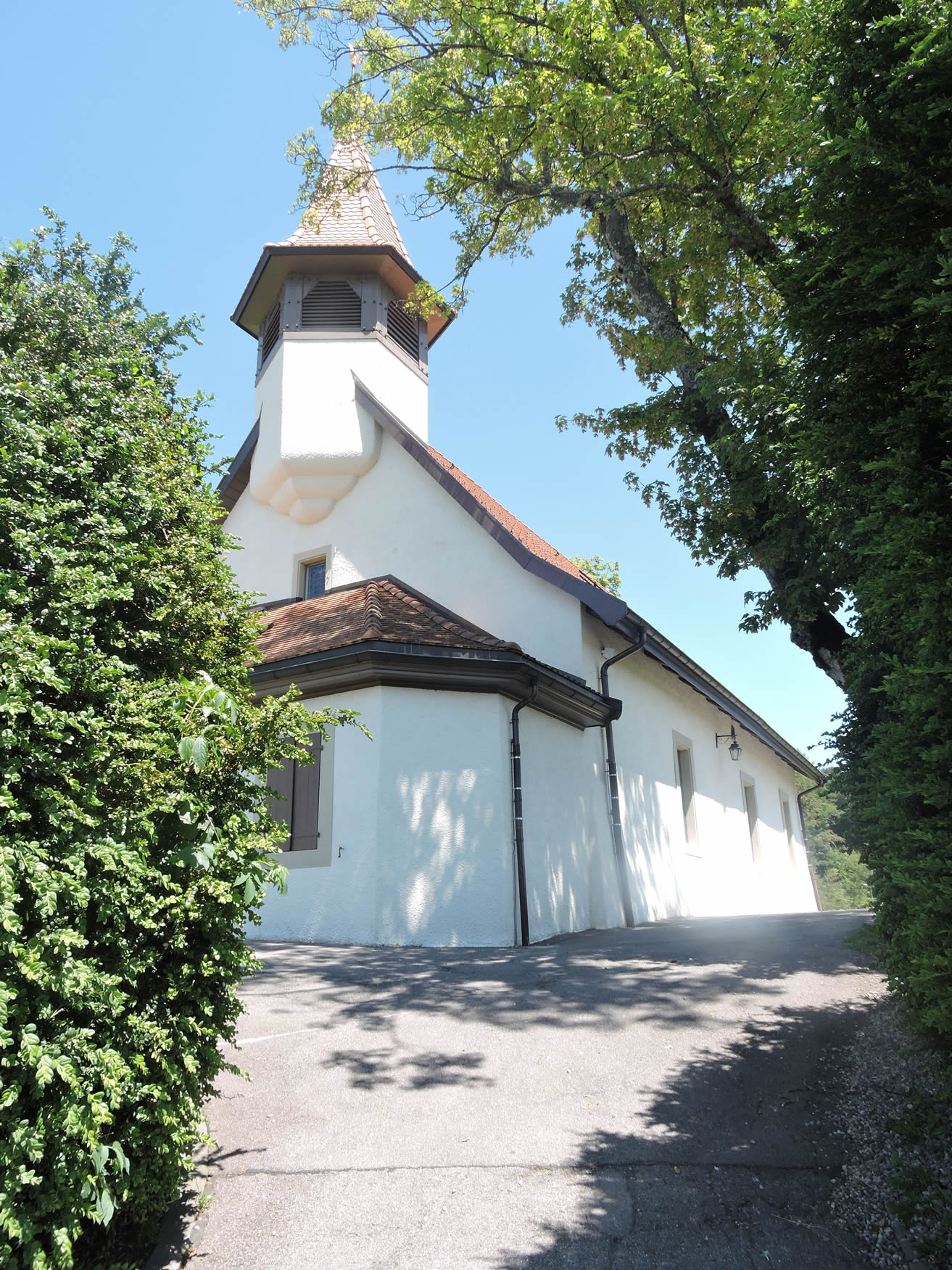 |
| The road, in its steep descent down the hill, prepares to traverse in a slow and solemn procession the Church Road, then the Pré-d’Yverdon Road, where homes extend, adorned with their discreet elegance, bearing witness to the bourgeois charm that permeates Epalinges’ lands. |
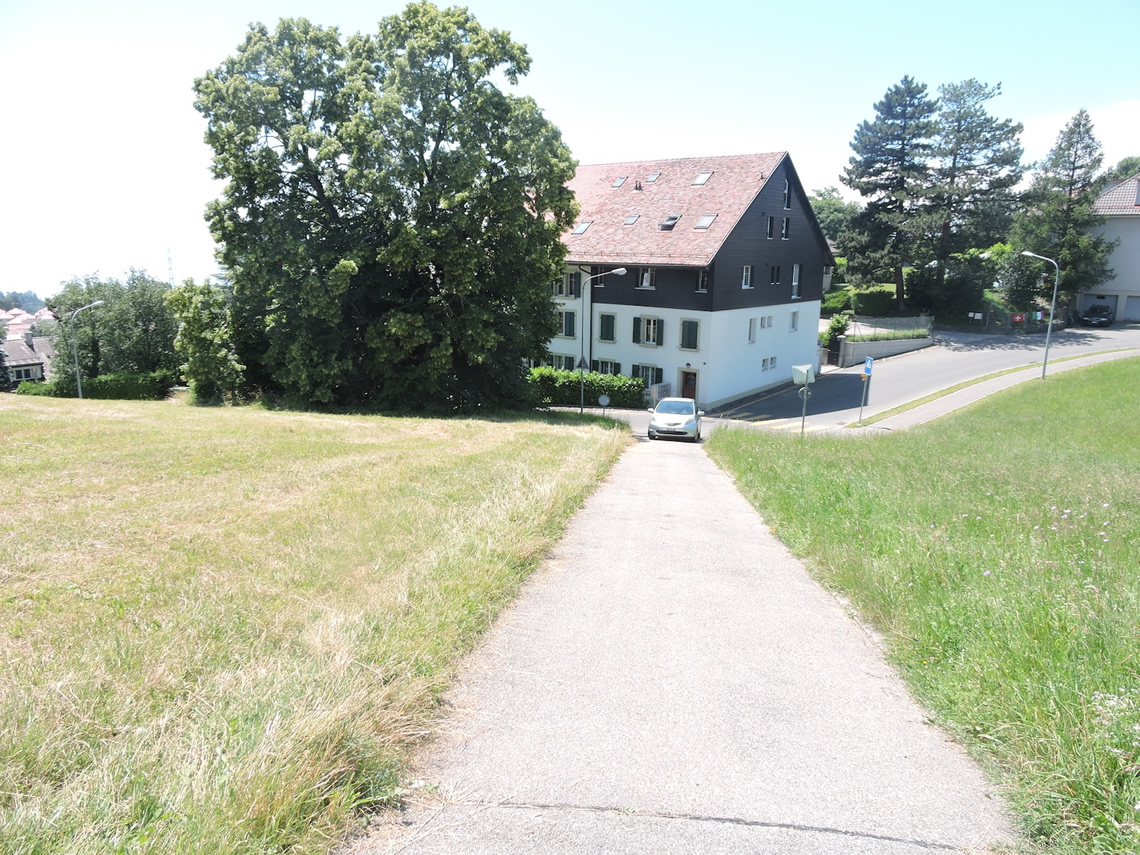 |
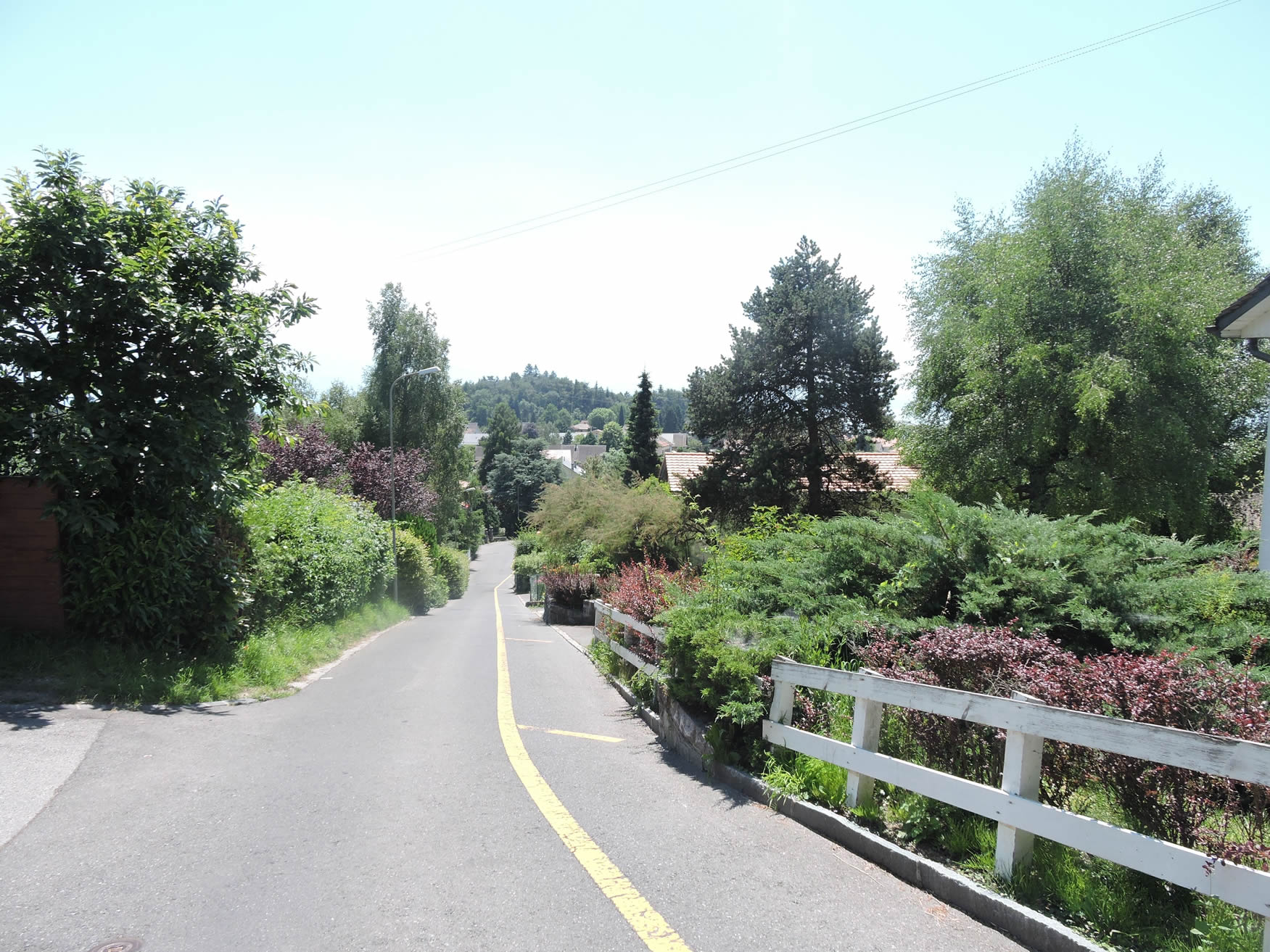 |
At the bottom of the descent, where the hills seem to bow before the majesty of nature, nestles the modestly renowned locality Le Raidillon, aptly named given the steepness of the road.

| At the level of Le Raidillon, the road gracefully veers to the right, following the Route des Planches amidst opulent villas. |
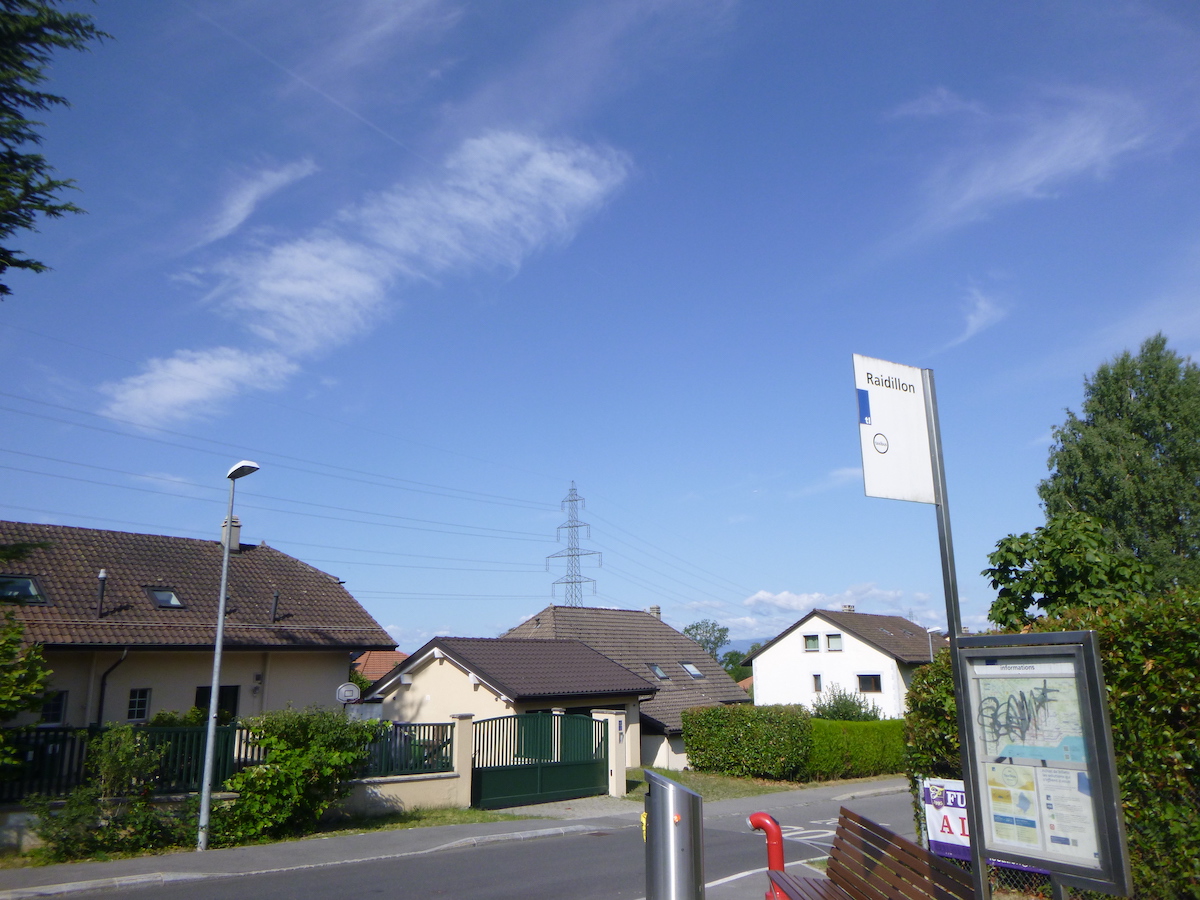 |
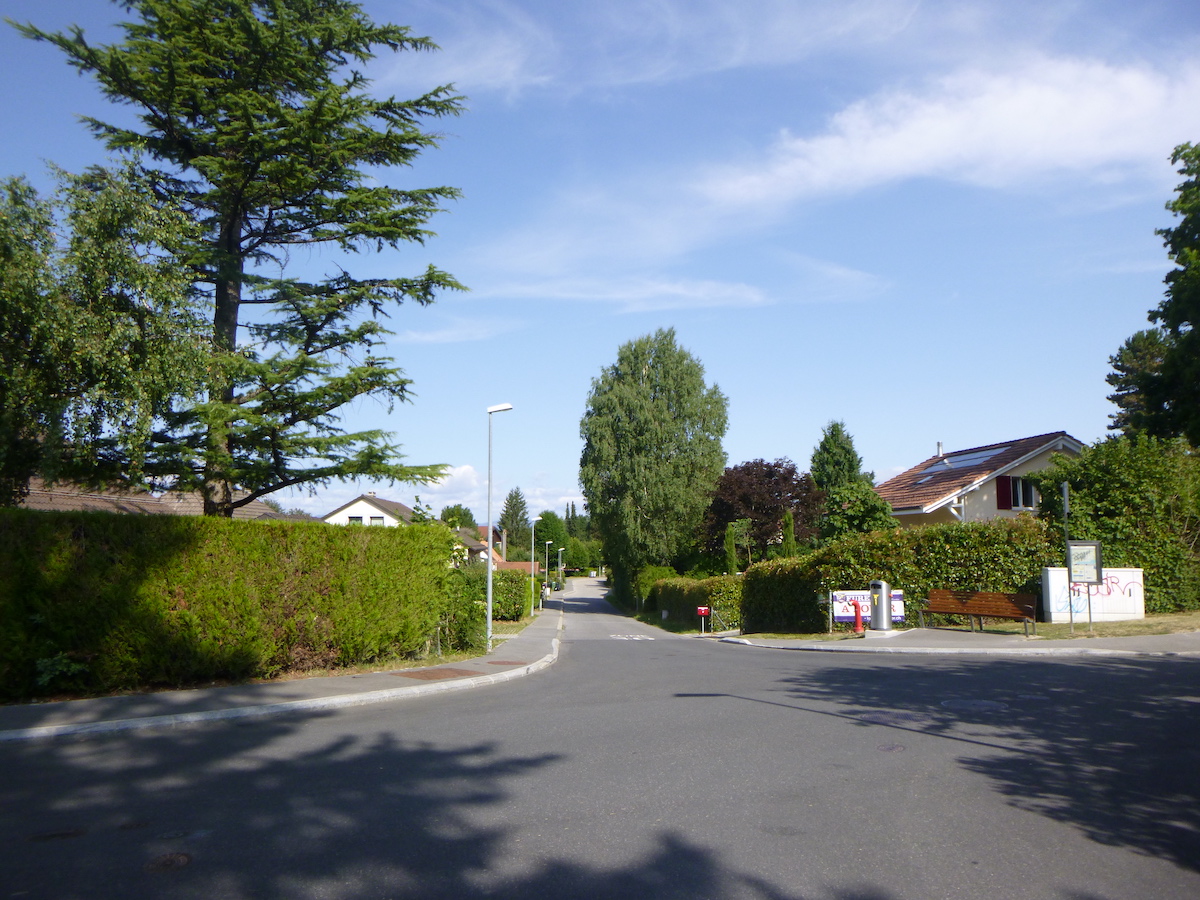 |
| Shortly after, the route leaves the Route des Planches. But you may as well stay on that road until you reach the main road from Lausanne to Berne at Les Croisettes. However, taking the path is preferable. The distance is the same, and the journey is more enjoyable. |
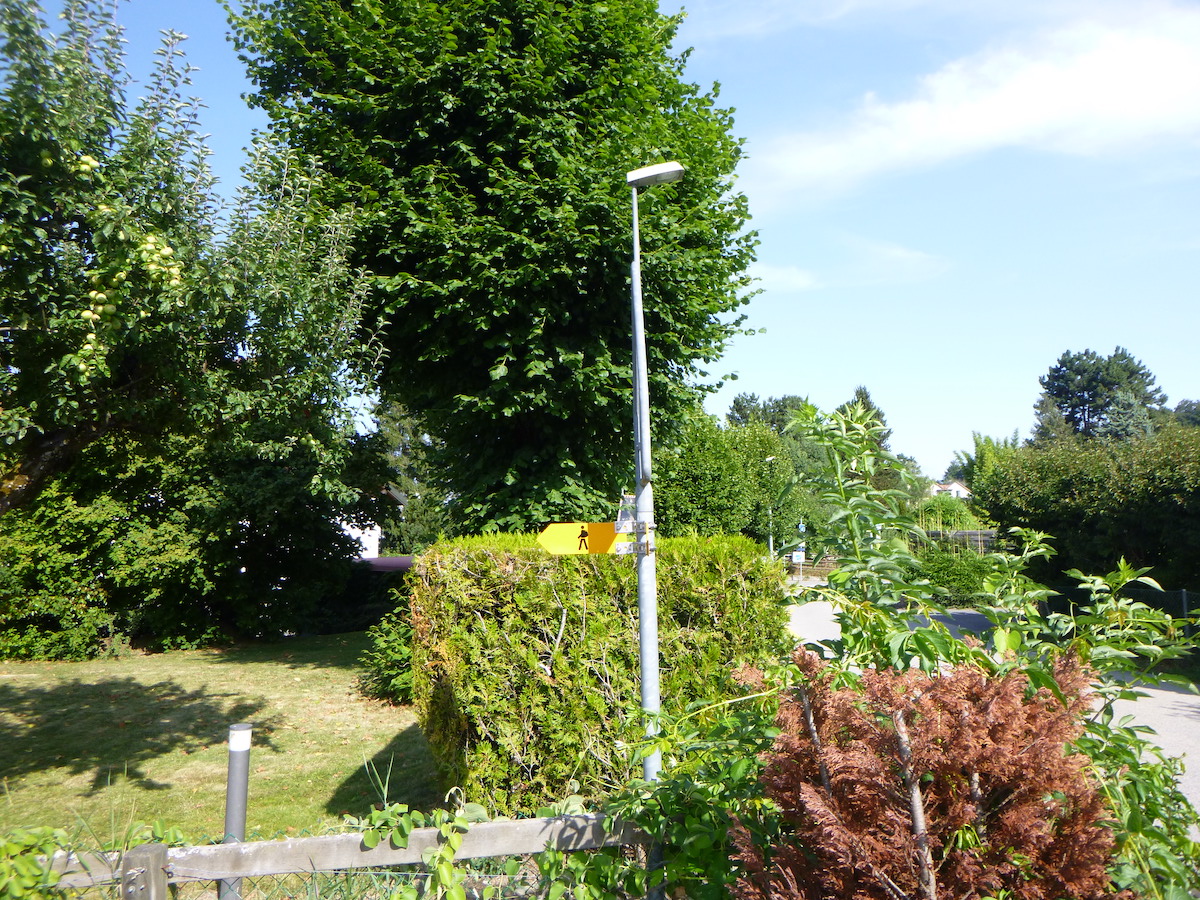 |
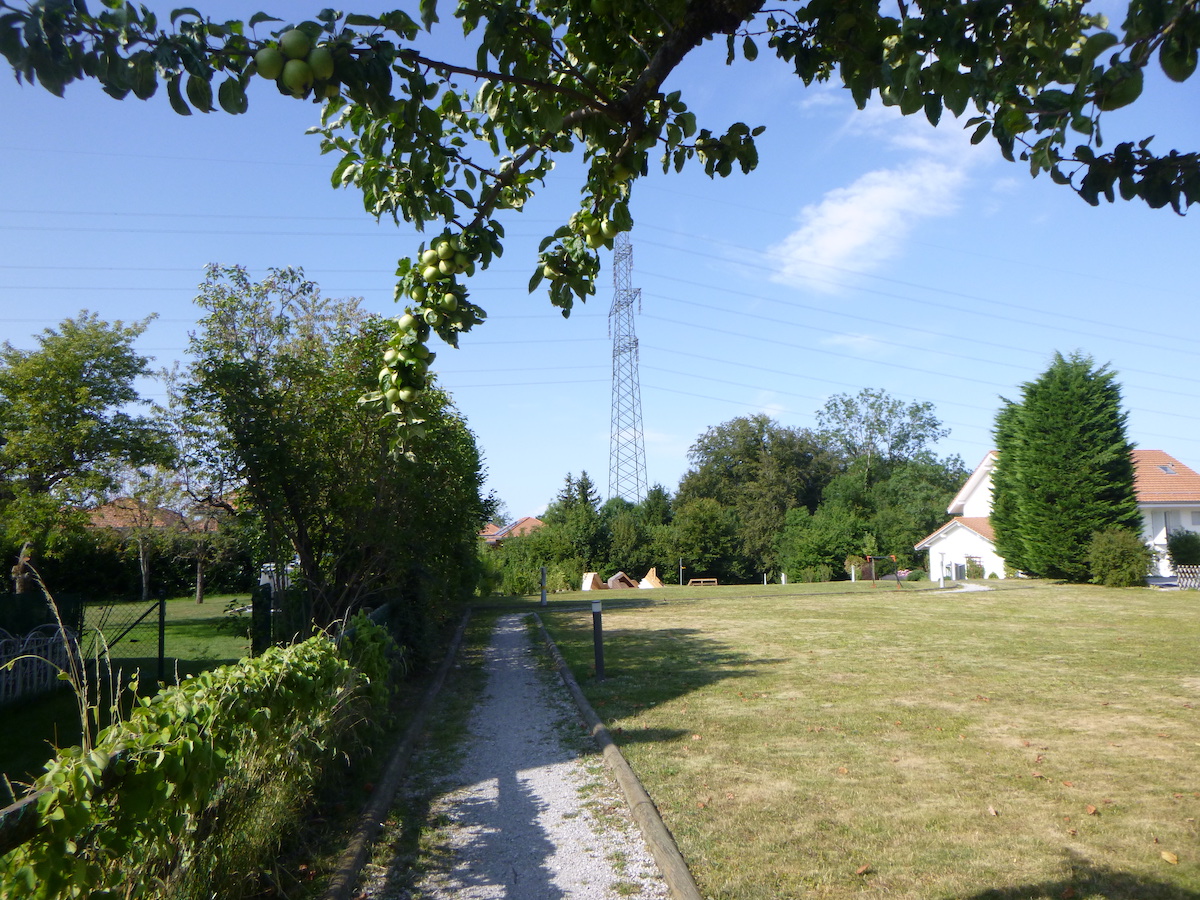 |
| At the edge of the verdant clearing, a trail ventures into the dark woods, an irresistible invitation to descend into the unknown. Each step on this rocky path is a dance with gravity, a symphony of balance between man and nature. |
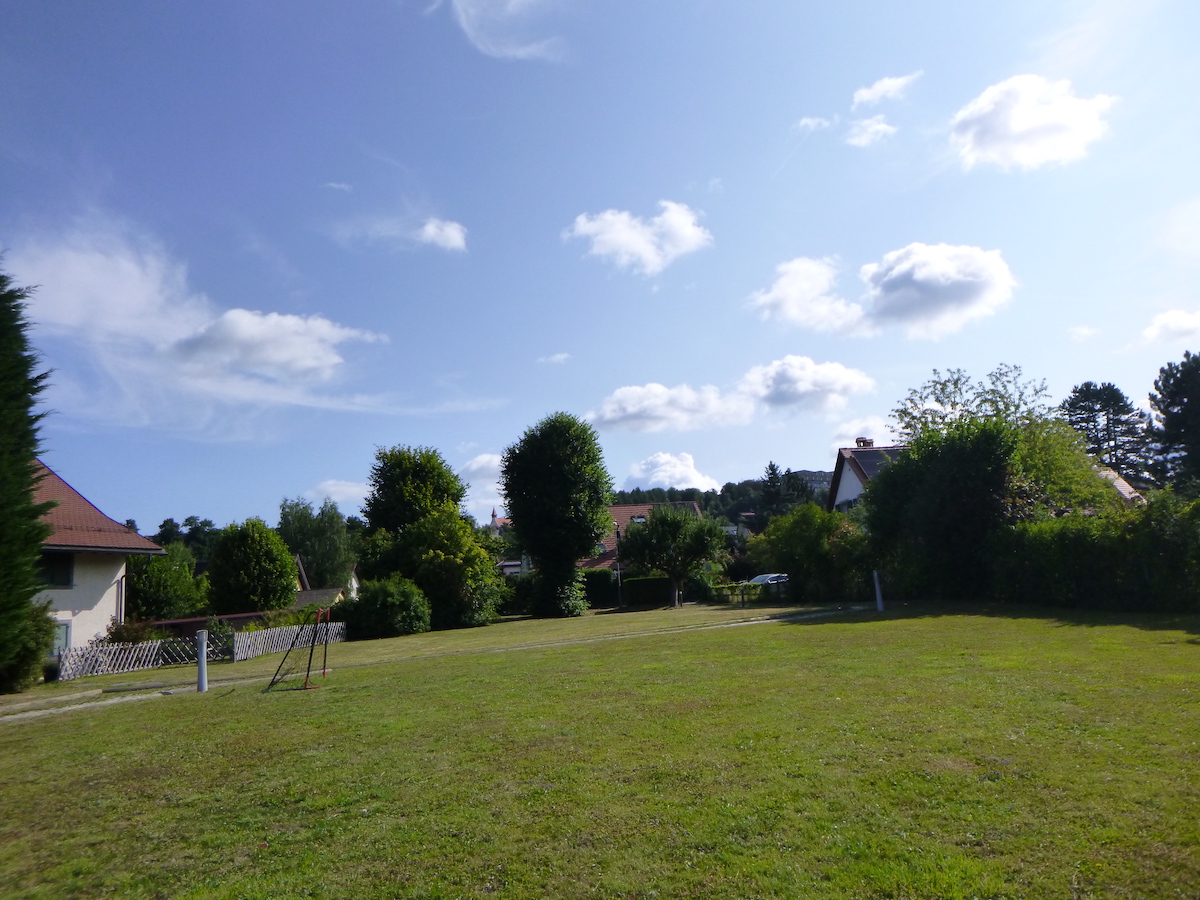 |
 |
| It’s a narrow and rocky path, shaped by man, where each turn reveals a new challenge of the severe yet stimulating slope. |
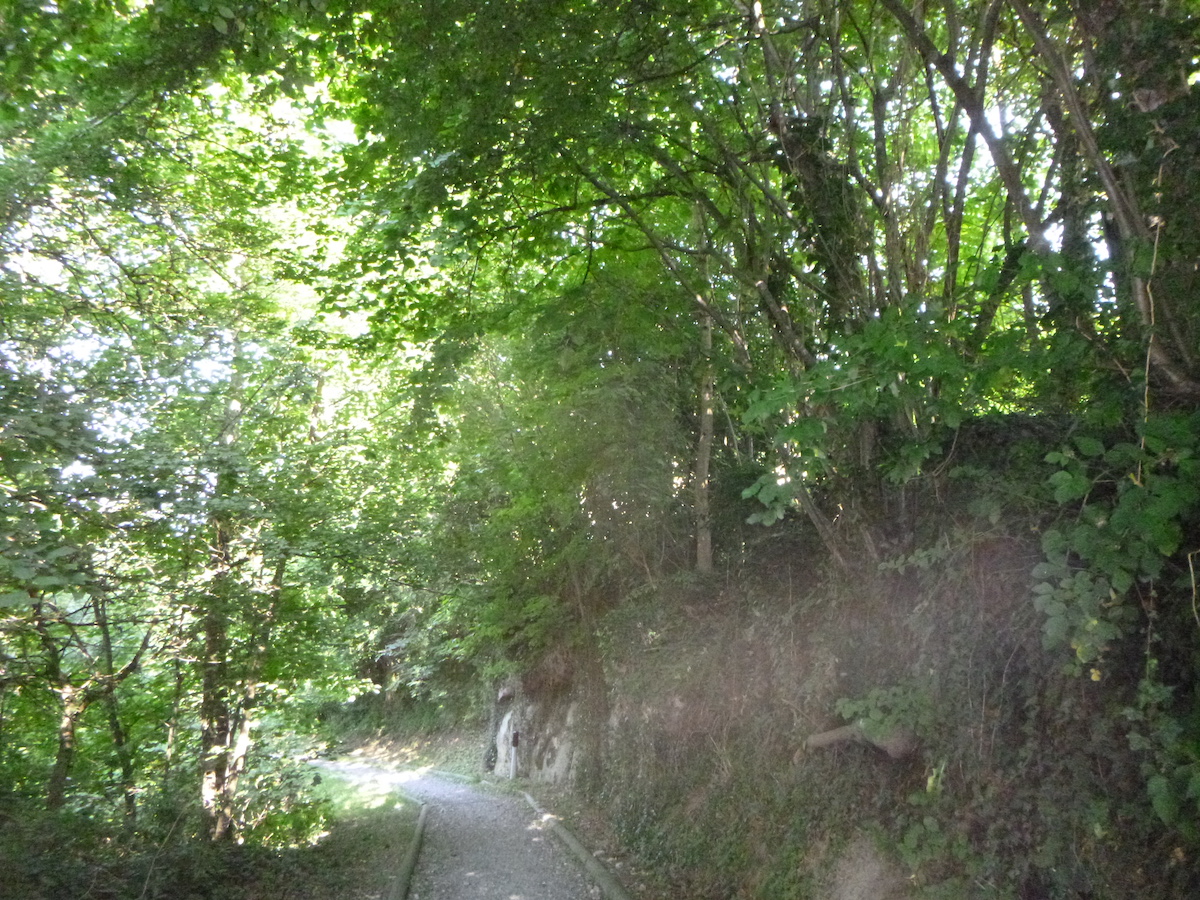 |
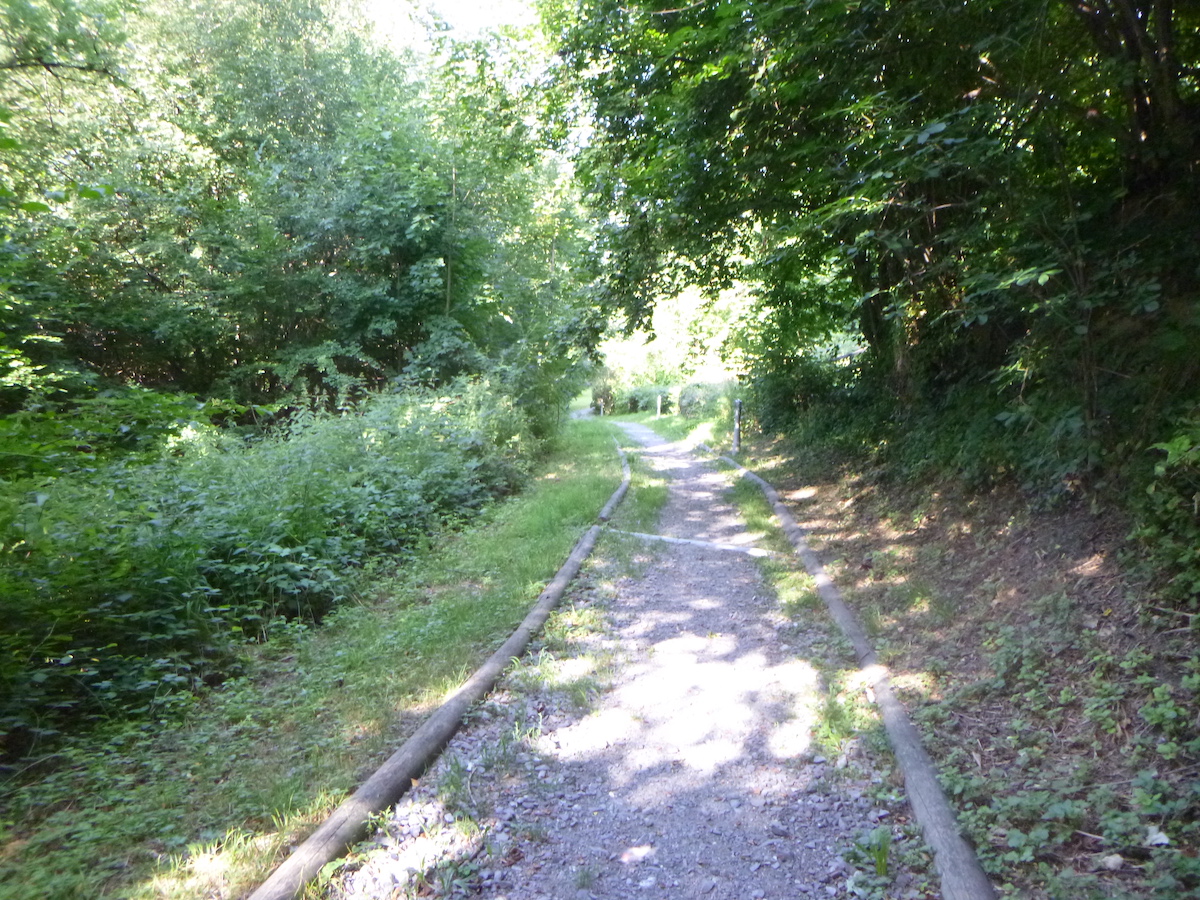 |
| The descent leads through modern neighborhoods, witnesses to the evolution of time and society. But even here, amidst contemporary houses, the spirit of nature persists. |
 |
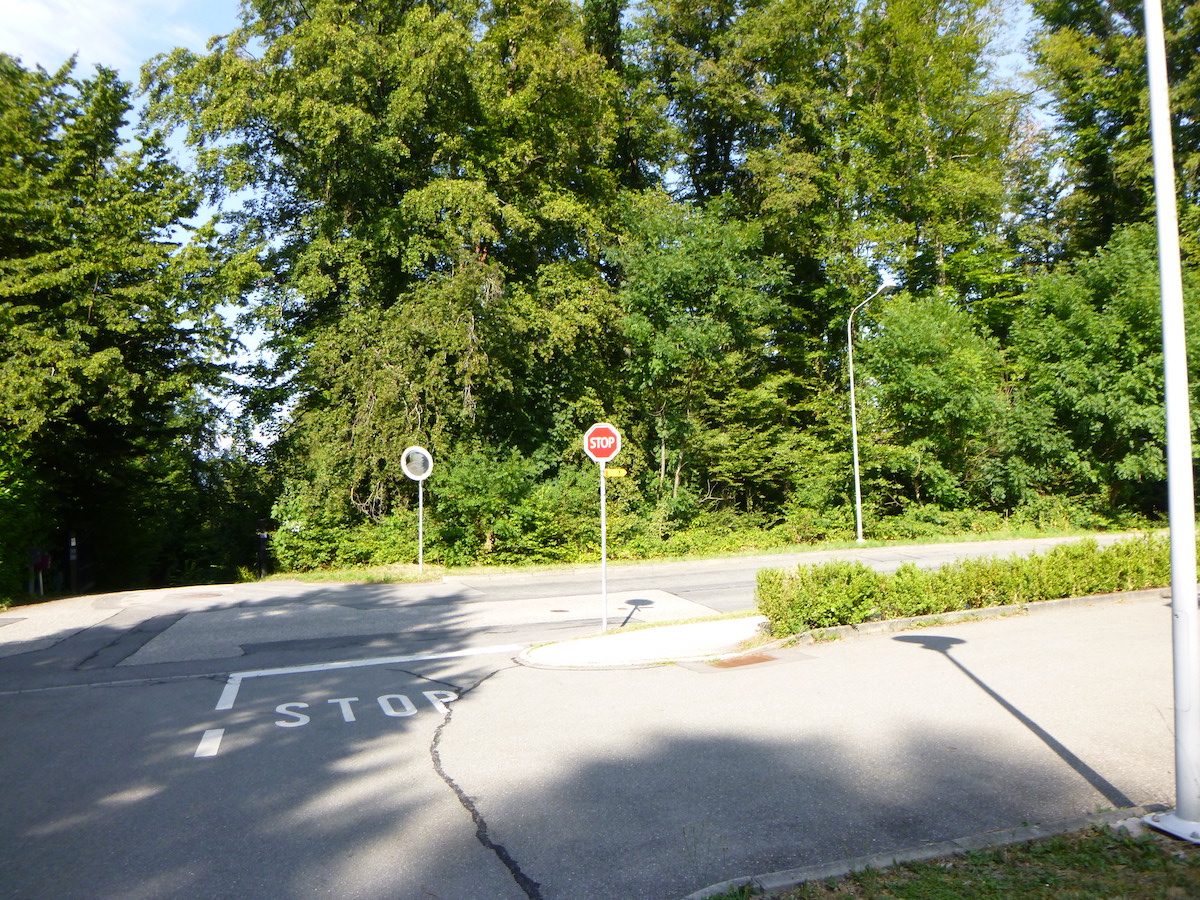 |
| Soon, a road slopes up along the Chemin des Boveresses. On the sidewalk, the road crosses the former Swiss Cancer Research Center (ISREC), where brilliant minds have shaped the future of medicine. Nobel laureates, at least one Swiss German, have trodden these cobblestones, leaving behind a legacy of knowledge and innovation. The author of these lines spent many years in these corridors. Today, the center rests peacefully on the university campus by the lake, but its spirit remains, permeating every laboratory, every research space. There are still laboratories here on the environment, and laboratories of the Cantonal Hospital. |
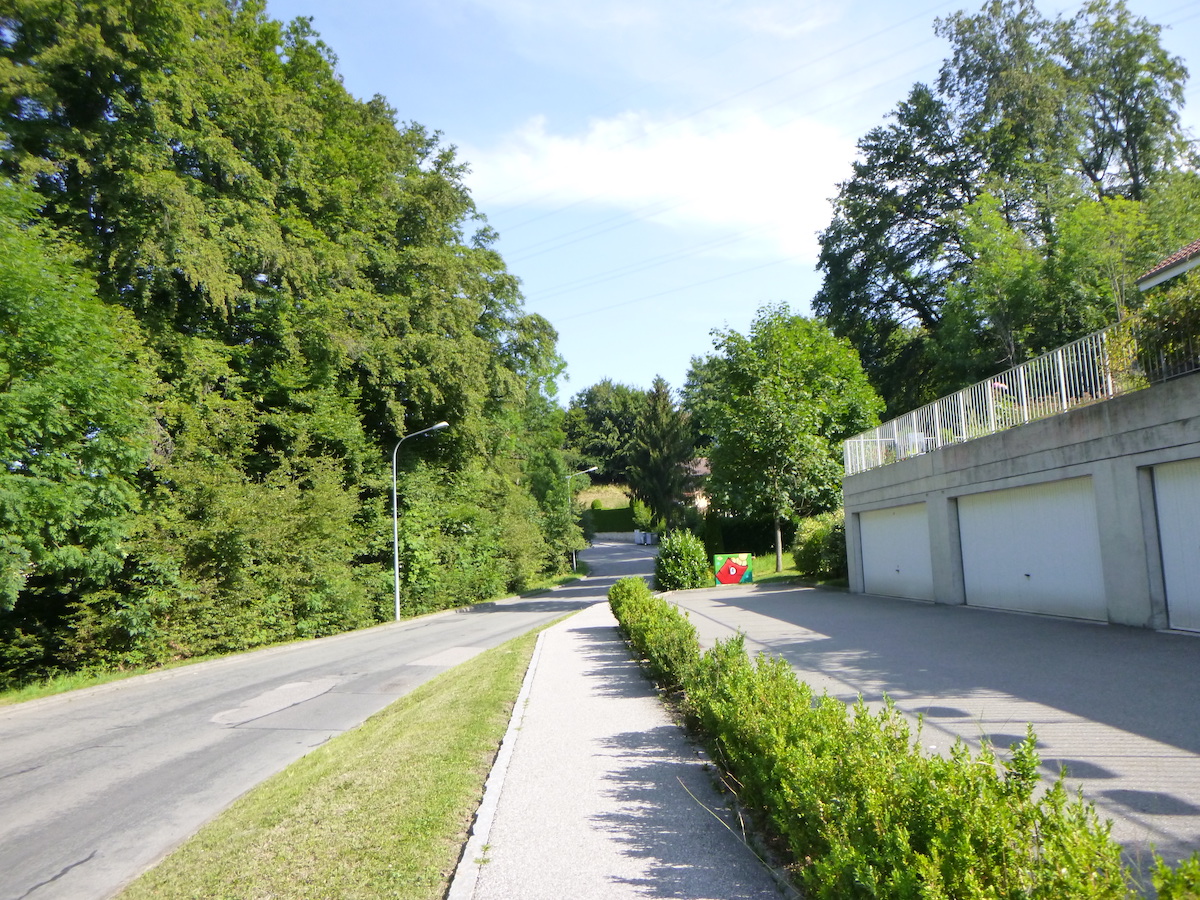 |
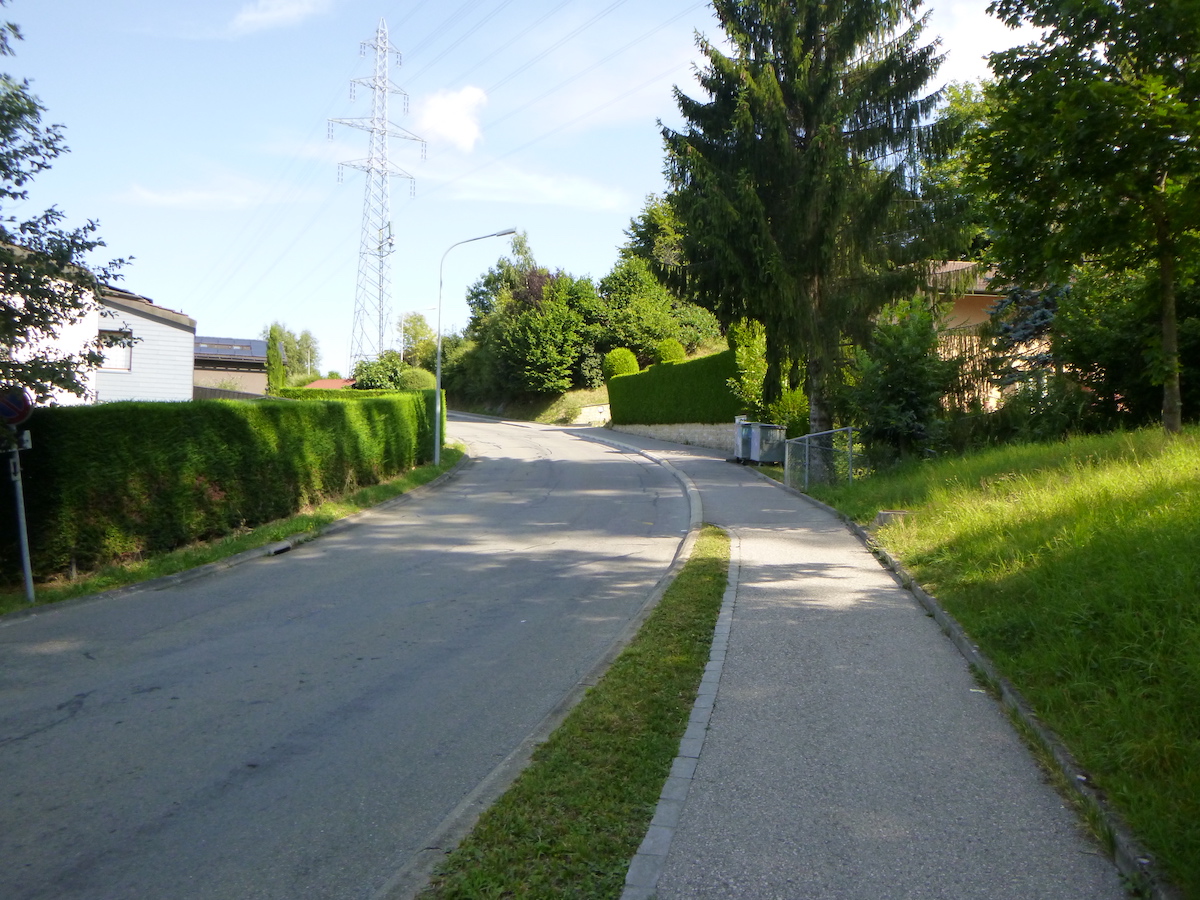 |
| Les Croisettes, an emblematic Lausanne location, stand nearby, just a stone’s throw from urban bustle. Over the past twenty years, the city has blossomed around a remarkable biopole, where laboratories and biotechnologies proliferate, forming a true scientific ecosystem. |
 |
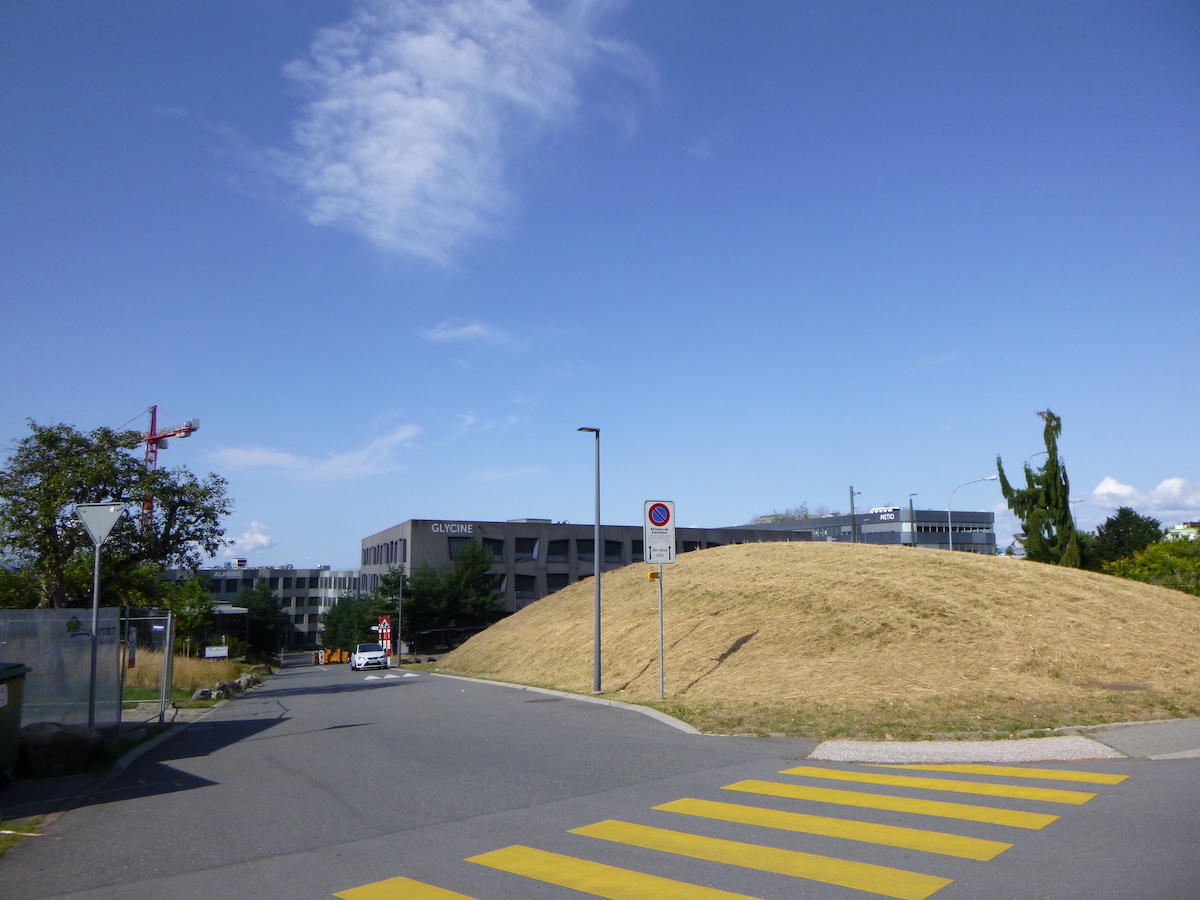 |
| Epalinges, within itself, bears witness to this effervescence, which adds to the expanding urban fabric, symbols of progress and innovation. But the story doesn’t end there, as construction sites continue to flourish, heralding new perspectives. |
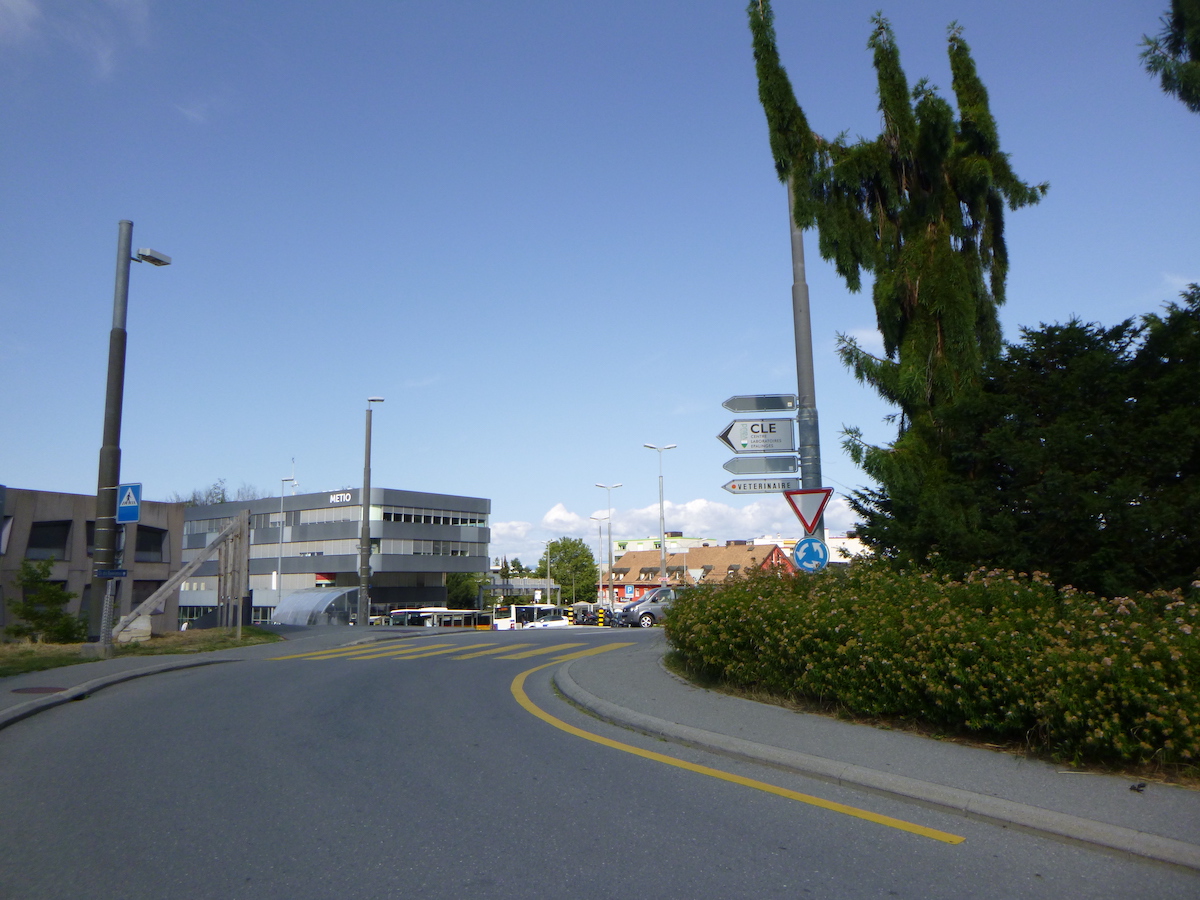 |
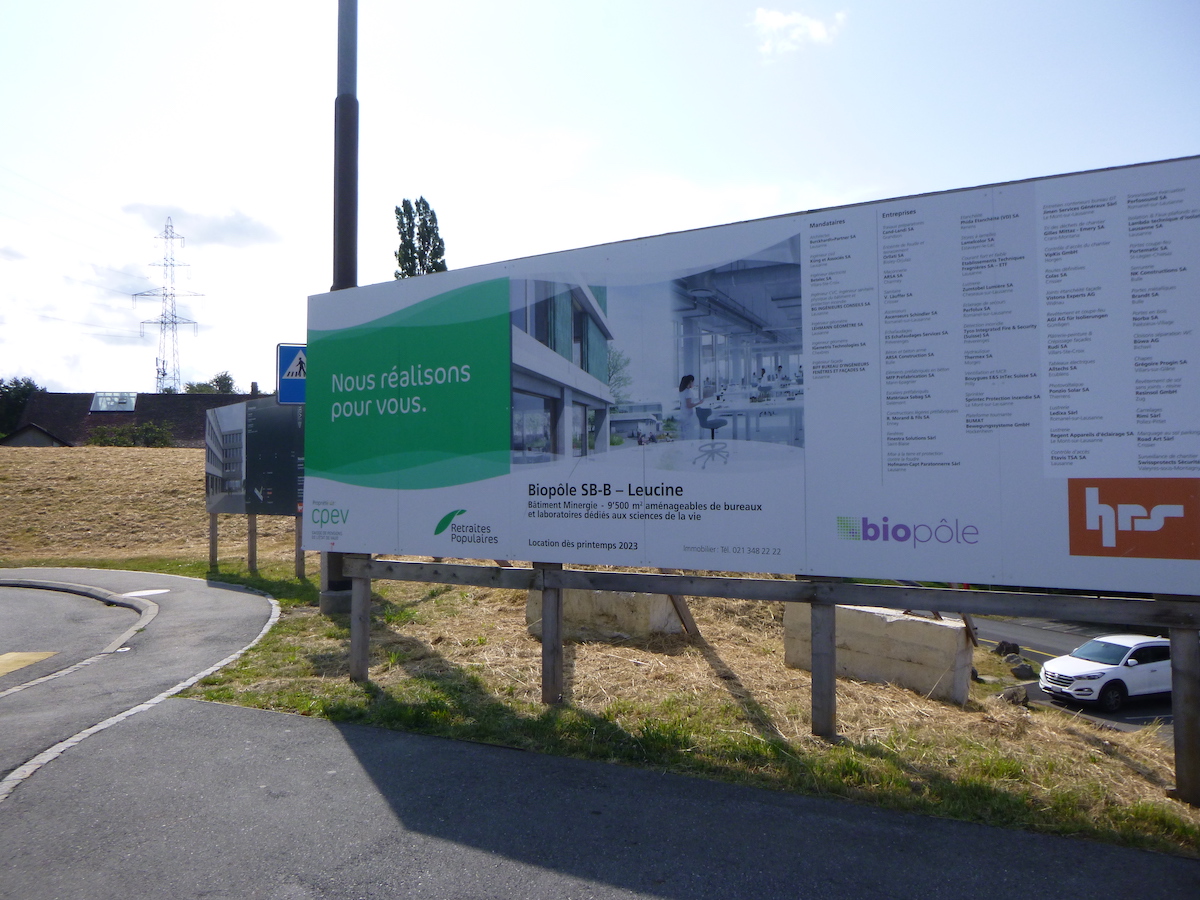 |
| The route, like a thread of Ariadne, now leads once again to the vital artery that is the Lausanne-Berne Road, at the very entrance of Epalinges. Despite its roughly 10,000 inhabitants, the city remains distinct from its neighbor, Lausanne, although entirely enveloped within its embrace. At Les Croisettes, an invitation presents itself: the metro, descending towards the vibrant heart of Lausanne, offers an urban escape. But why not continue, letting oneself be carried further, where nature takes over, where the dense forest reveals its secrets ? |
 |
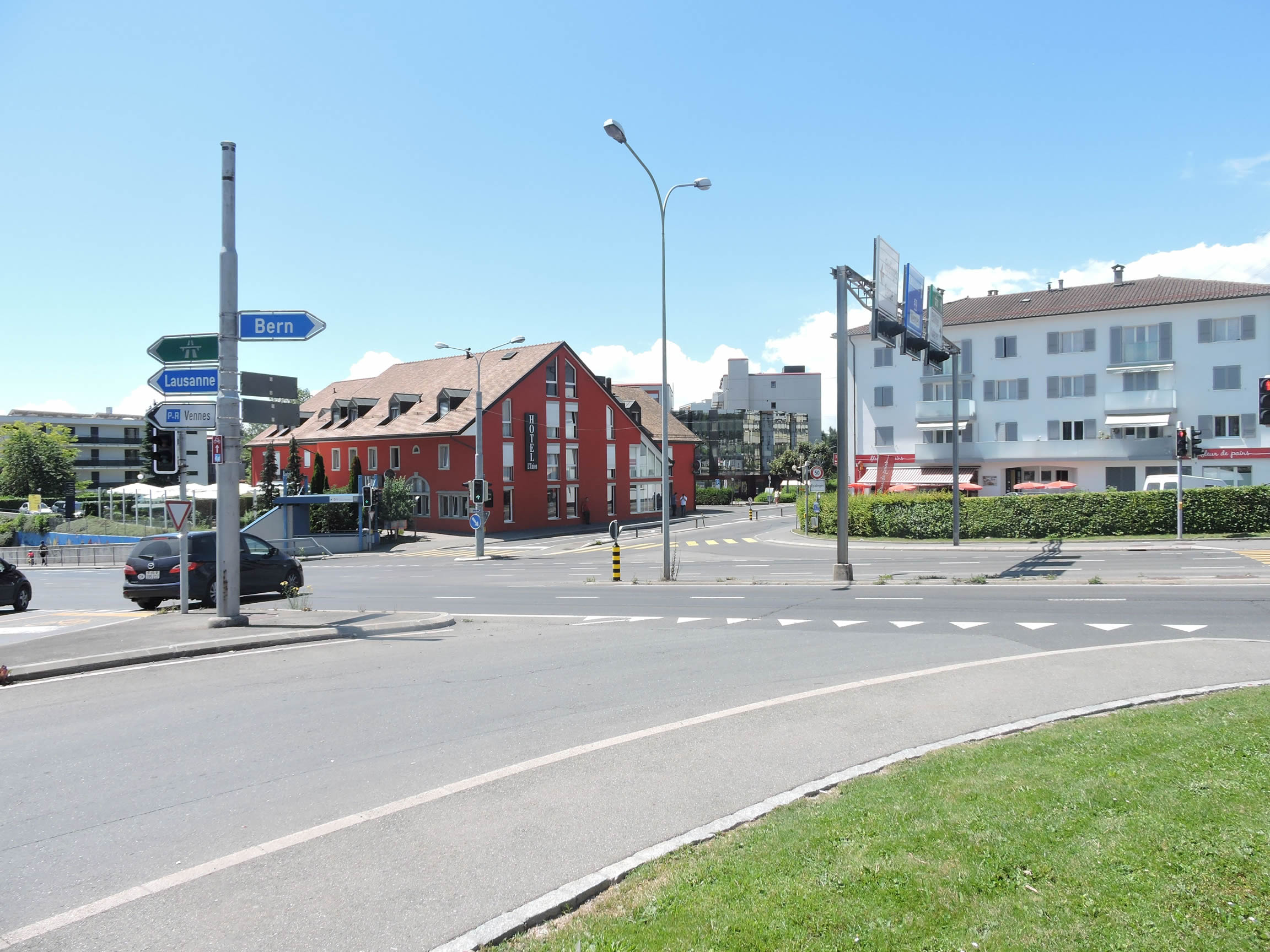 |
| The route, like an outstretched hand, sets off from Les Croisettes, in the shadow of the Café de l’Union, the starting point of a new escapade. It heads towards a roundabout, where signs indicate the route towards Lake Sauvabelin and Lausanne-Tunnel, in the city center. |
 |
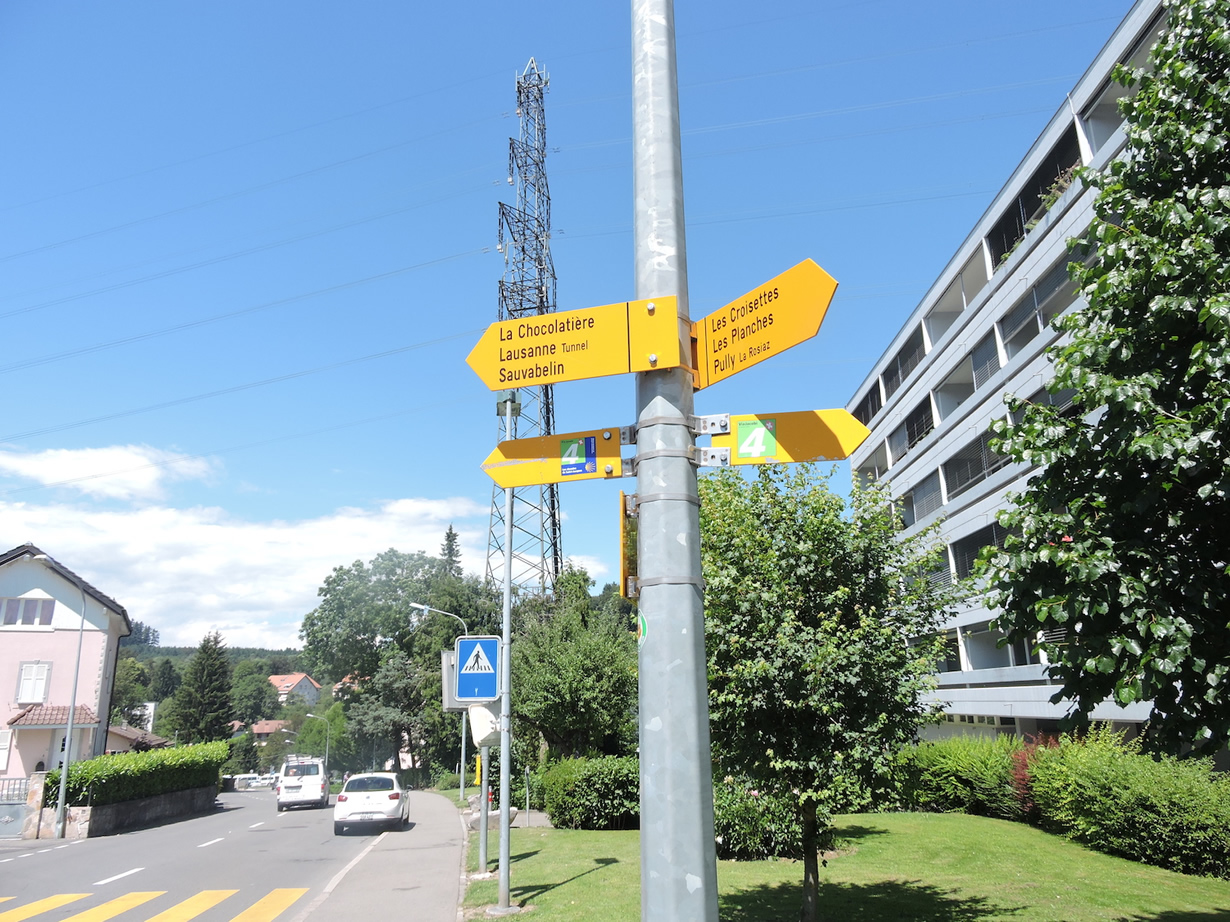 |
| The road makes its way along the Mois Murat Road, traversing a landscape where opulent villas and administrative buildings mingle, silent witnesses to the passage of time. |
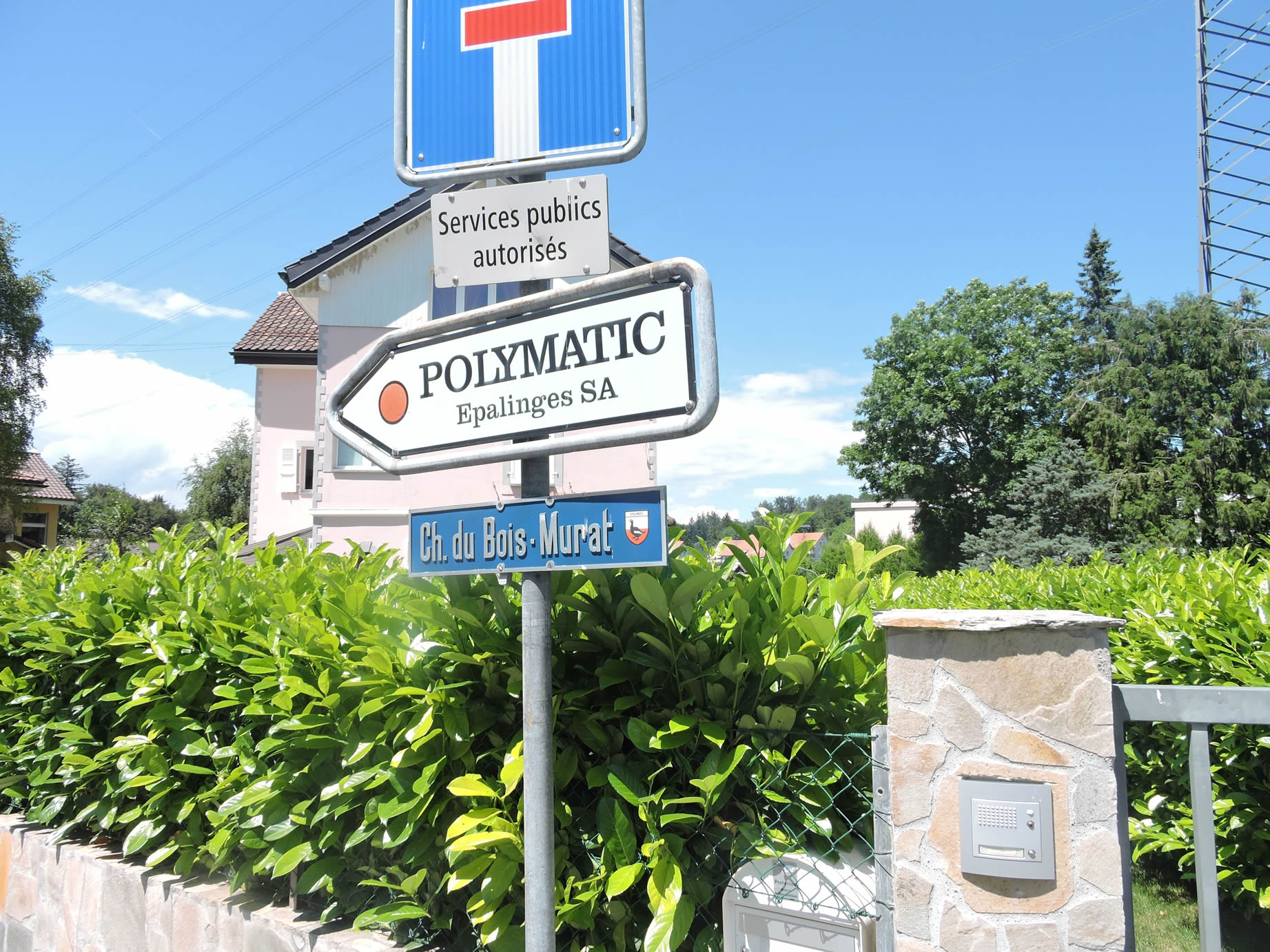 |
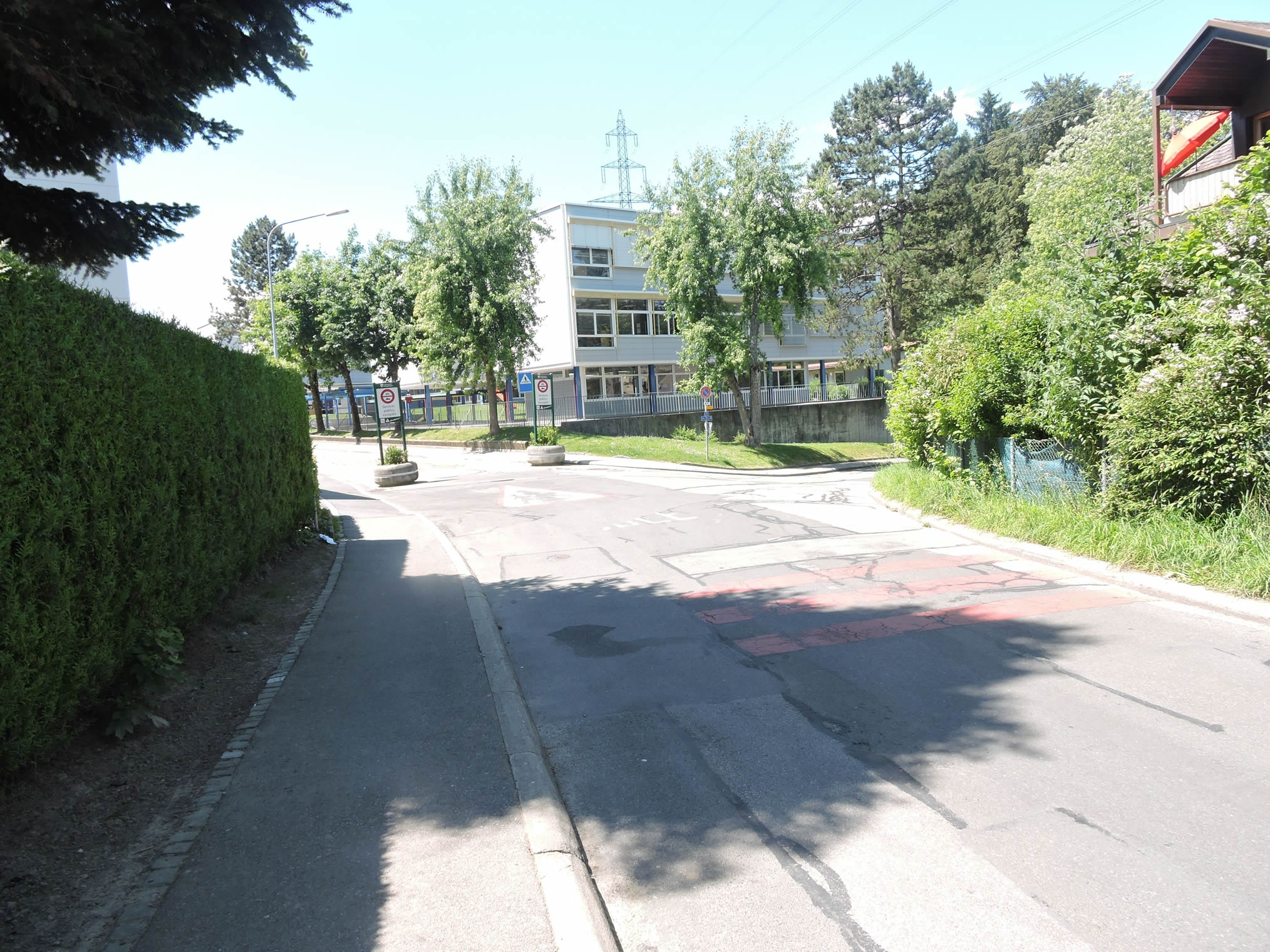 |
| The road, inexorably, nears its end, culminating in the shadow of the forest, where civilization gives way to the wilderness of the valley that stretches, eager to unveil its secrets, offering a breath of fresh air, a awakening of the senses in the very heart of the city. |
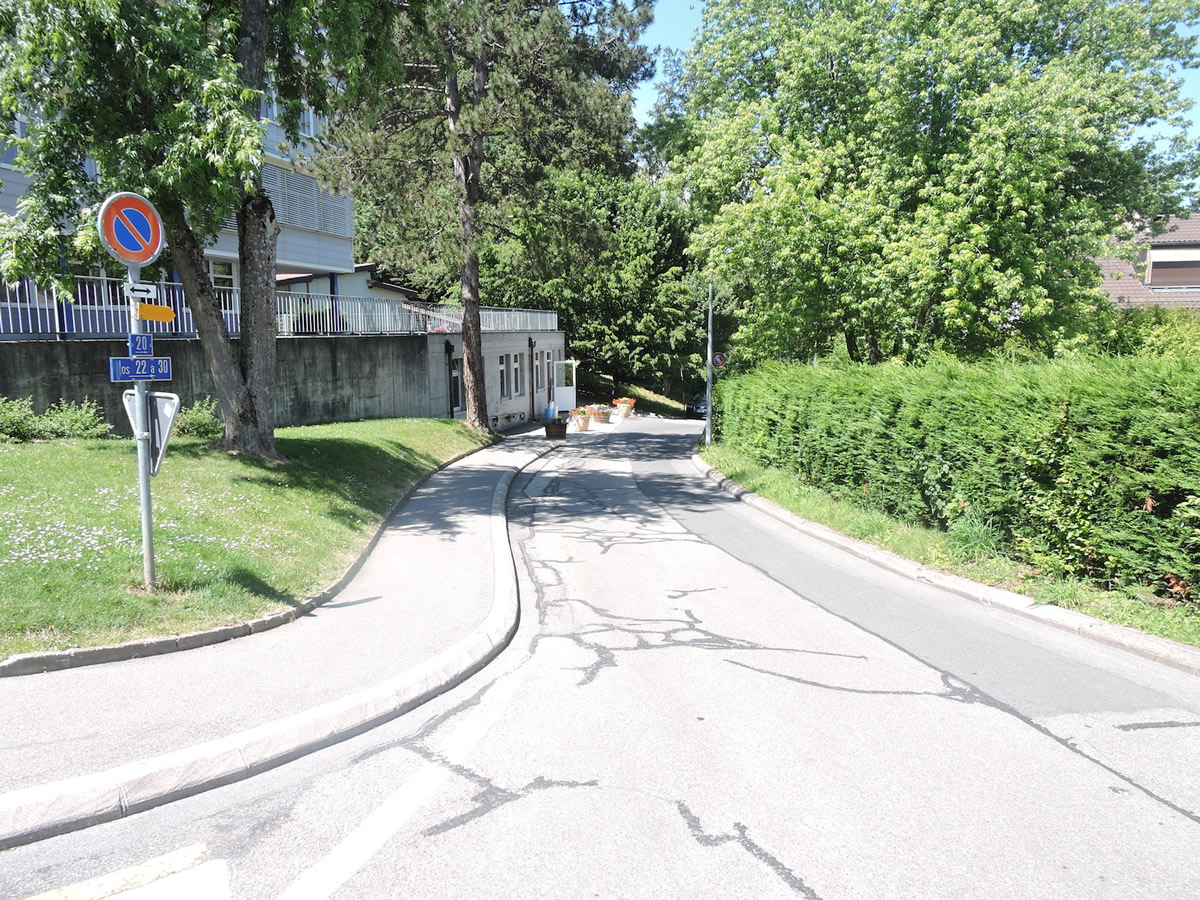 |
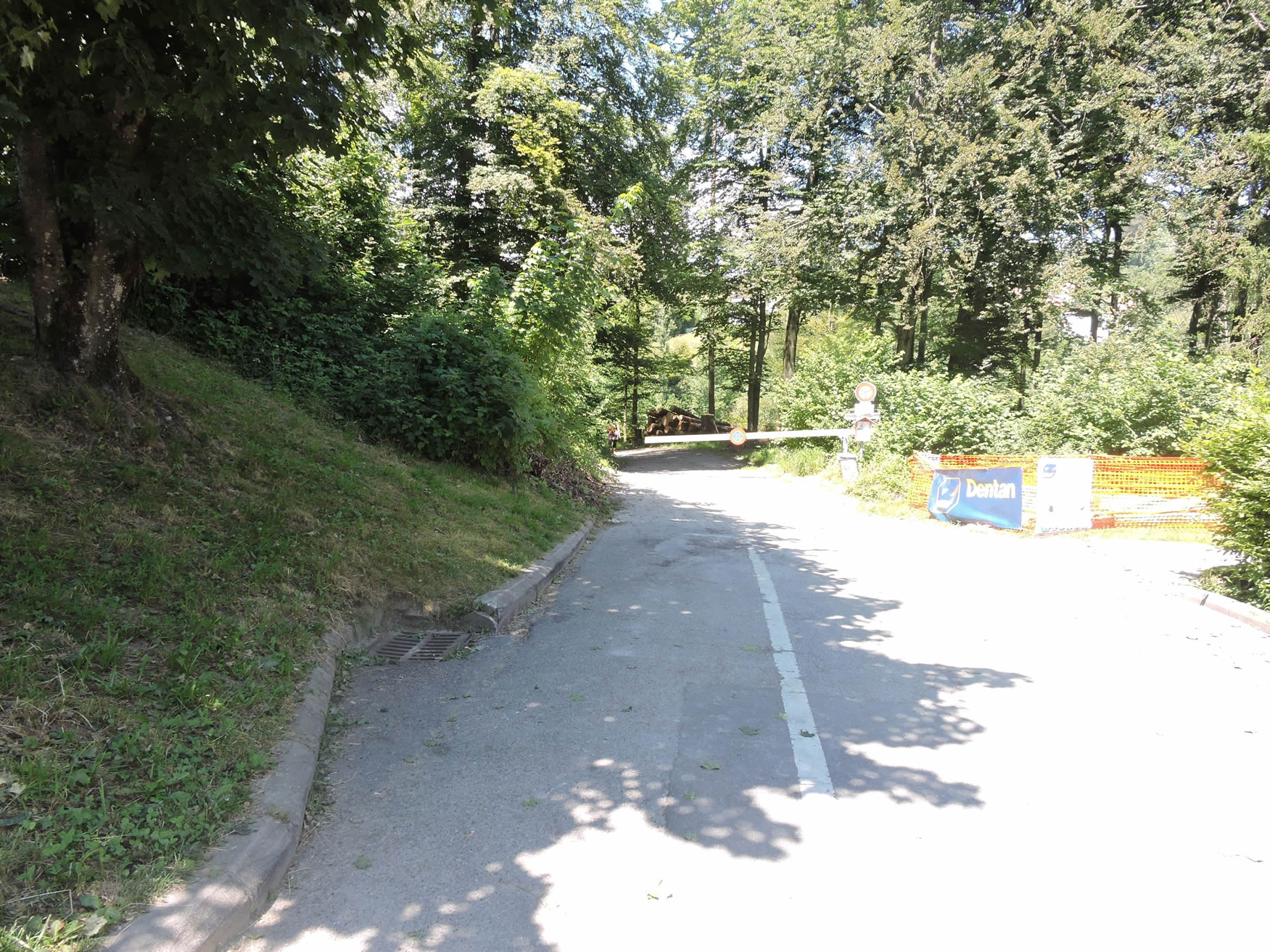 |
| A broad dirt path then delves into the wooded freshness, stealing steps away from urban agitation to immerse them in the soothing silence of nature. Here, no roar of engines, just the gentle murmur of birds and the crystalline song of the river, a natural symphony that lulls the soul and awakens the senses, inviting you to lose yourself in contemplation. |
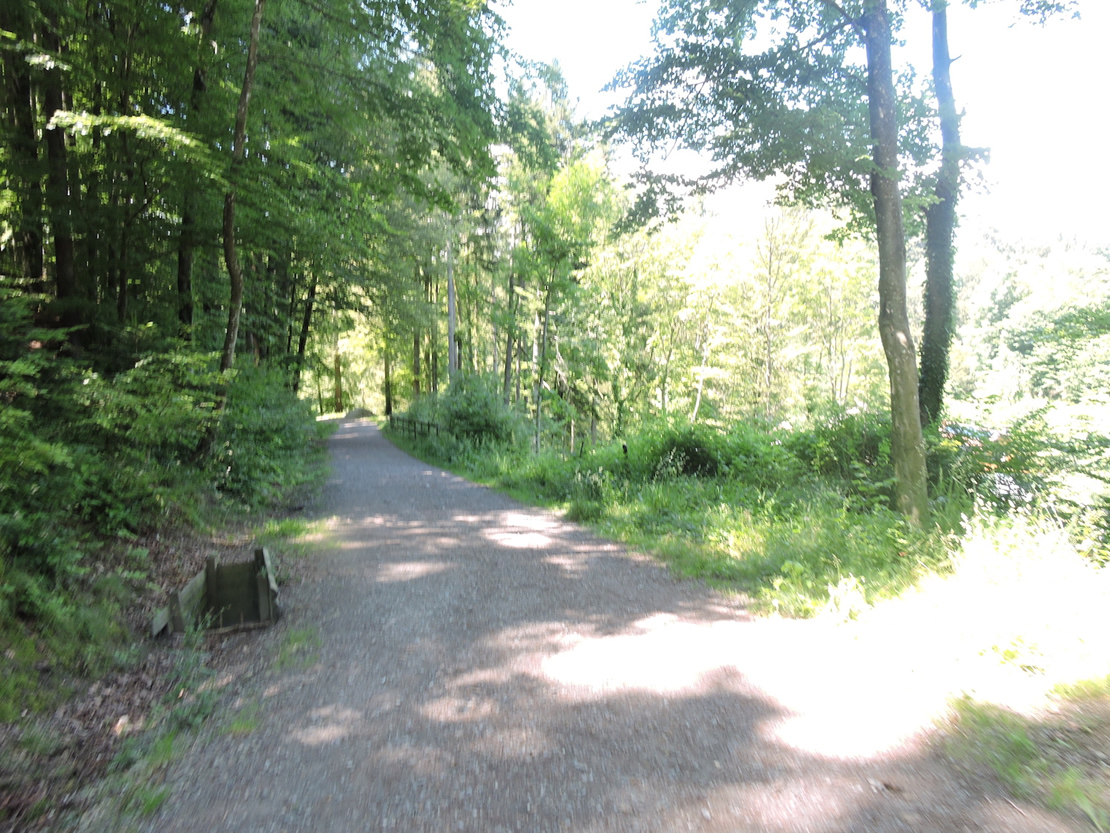 |
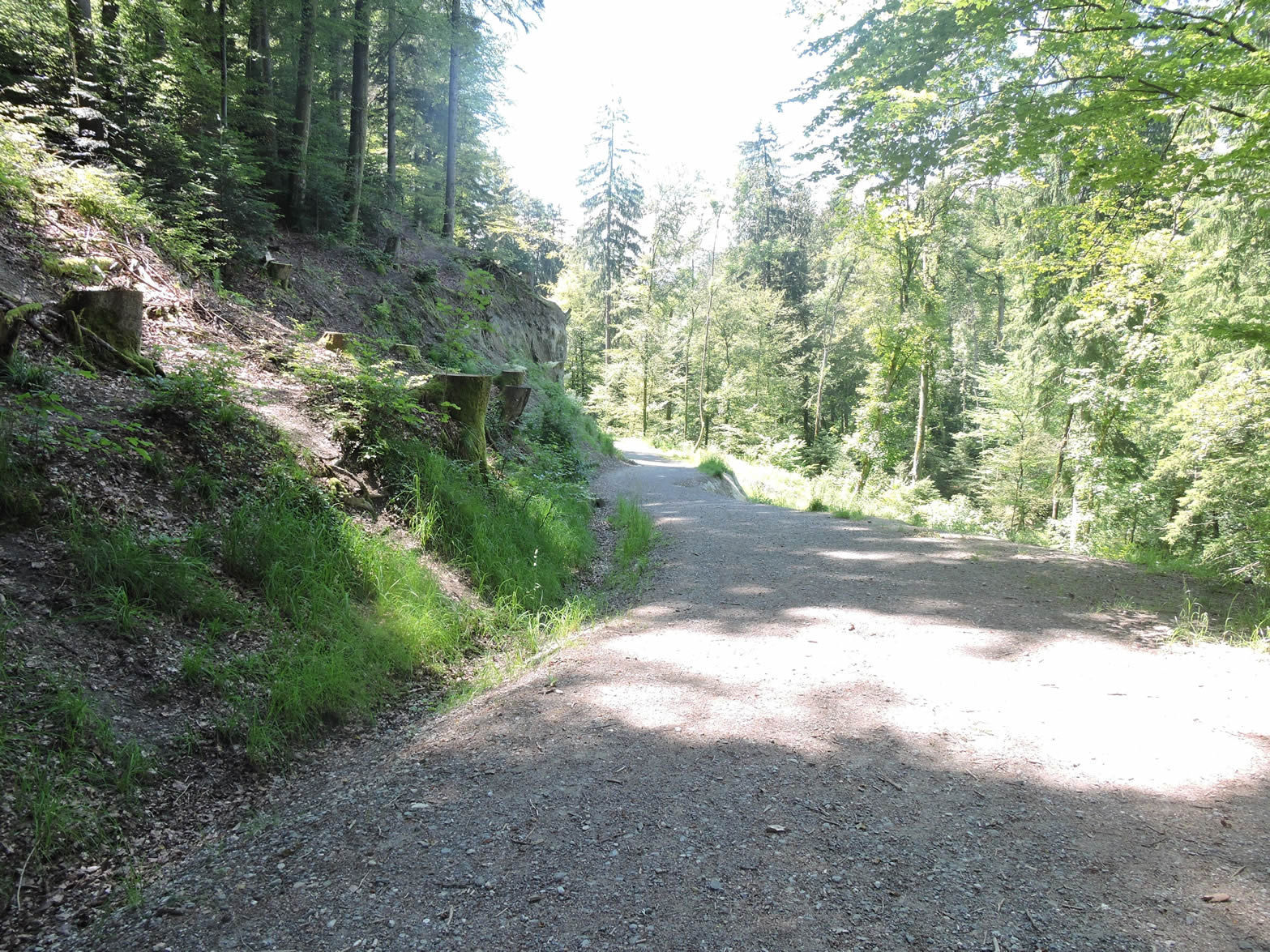 |
Shortly after, the old and new Via Jacobi 4 converge.
From here, resume the description of Via Jacobi 4 until Lake Sauvabelin.
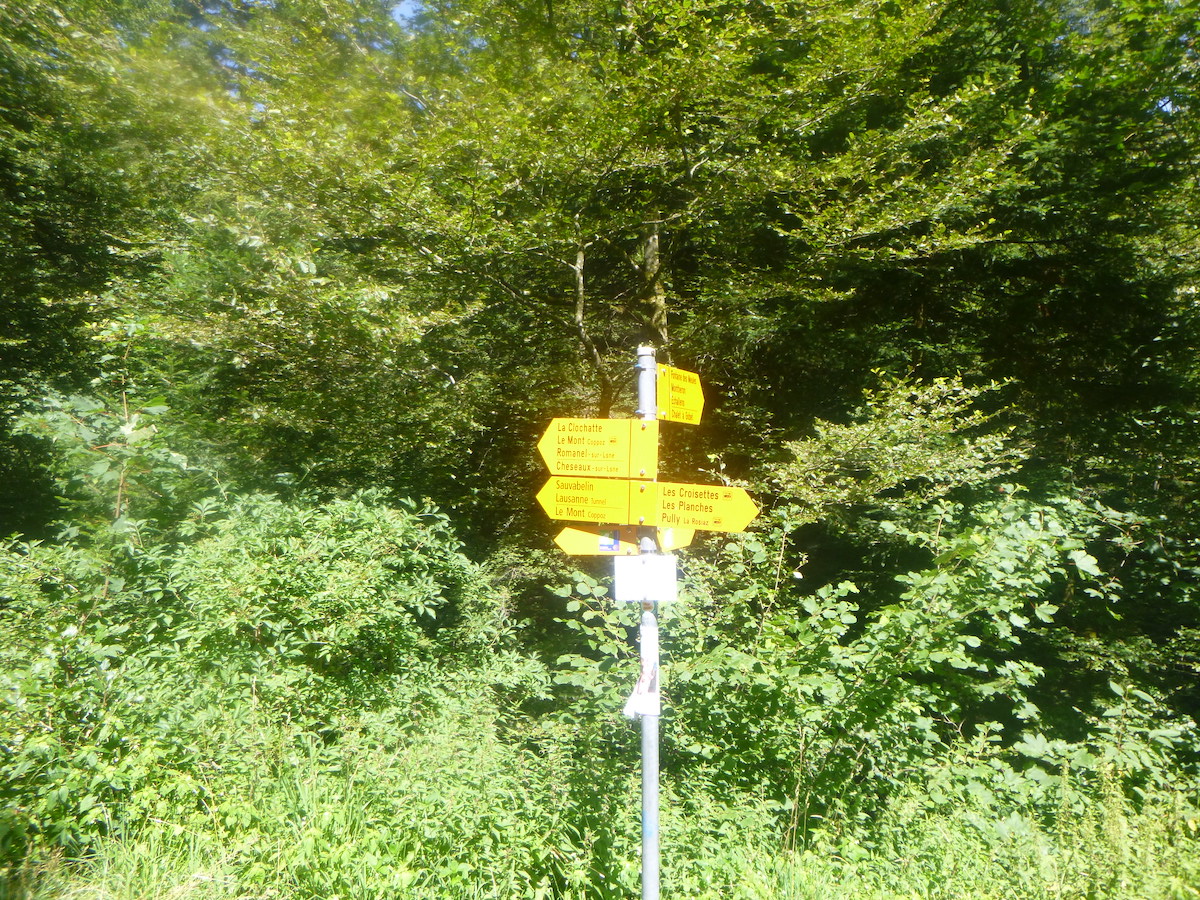
Feel free to add comments. This is often how you move up the Google hierarchy, and how more pilgrims will have access to the site.
 Next stage: Stage 17c: Visit to Lusanne
Next stage: Stage 17c: Visit to Lusanne
|
 |
Back to the menu |

















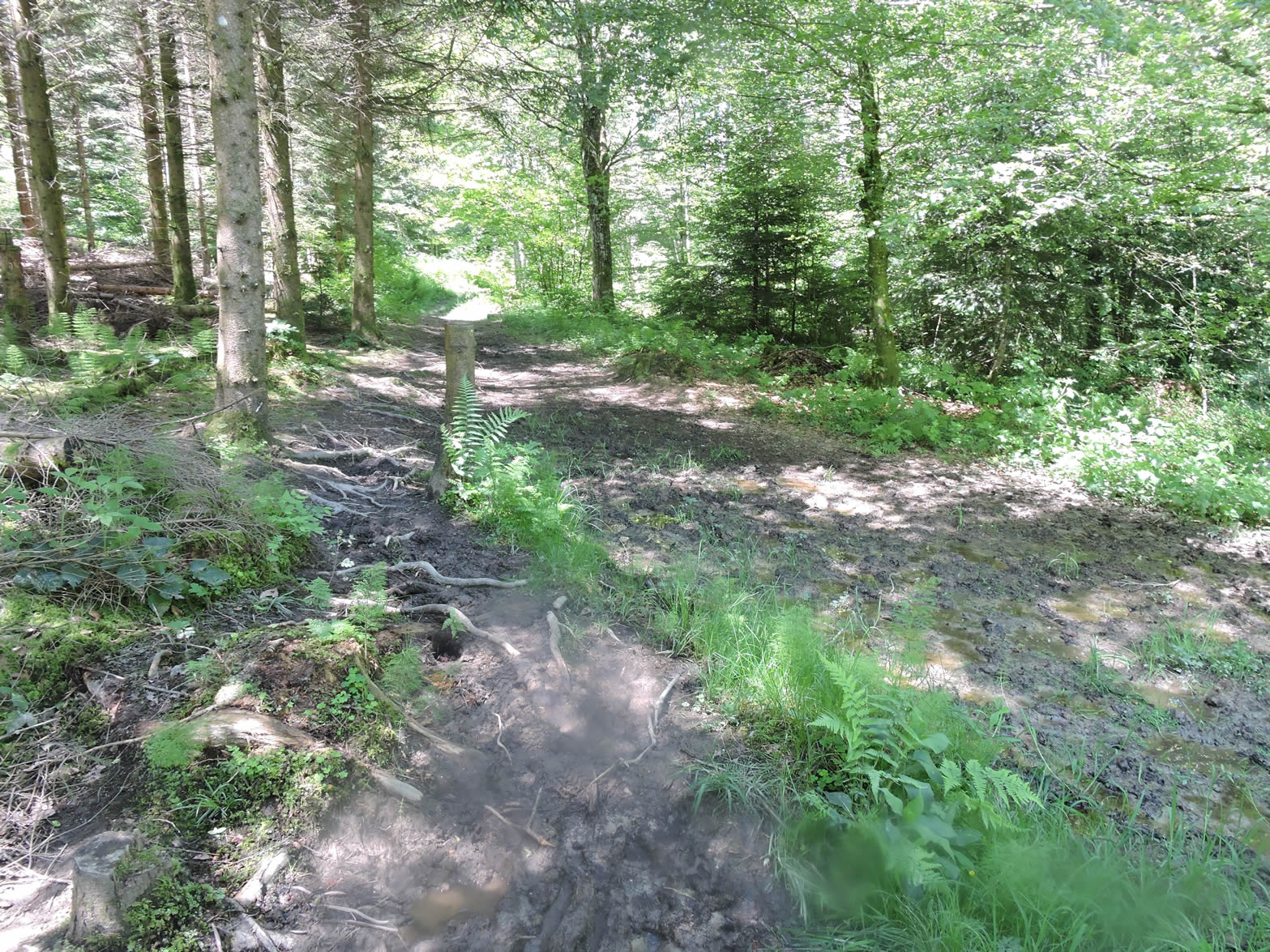
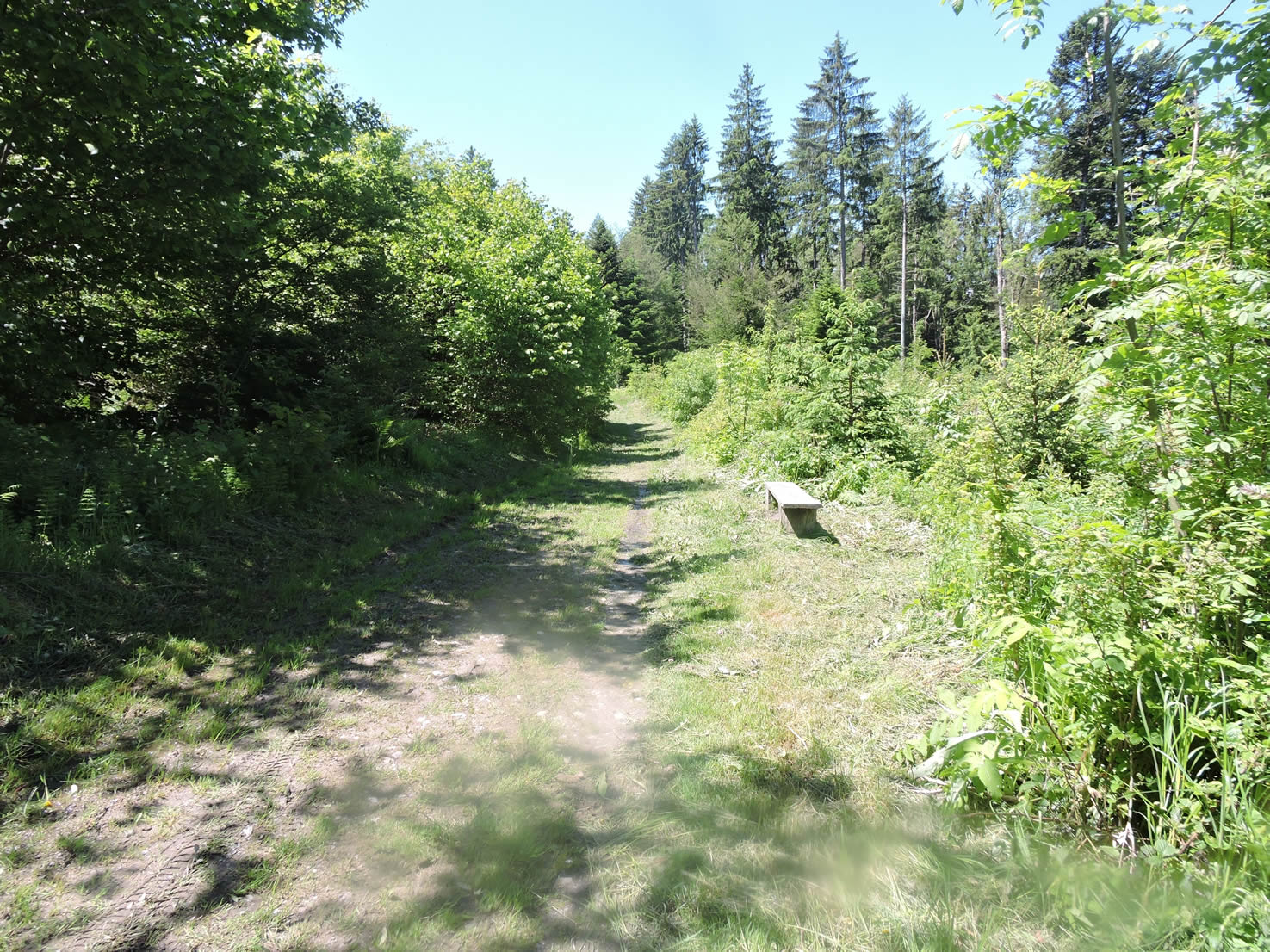












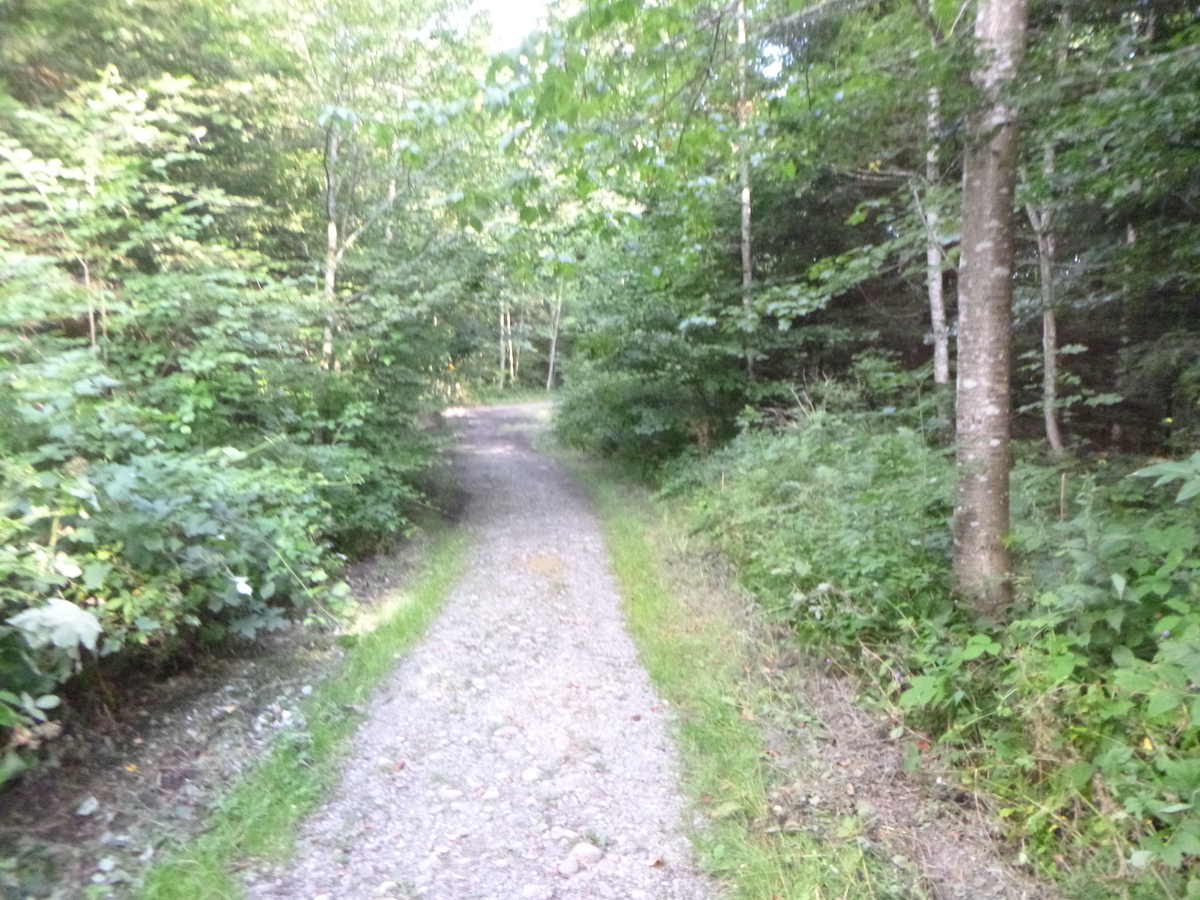
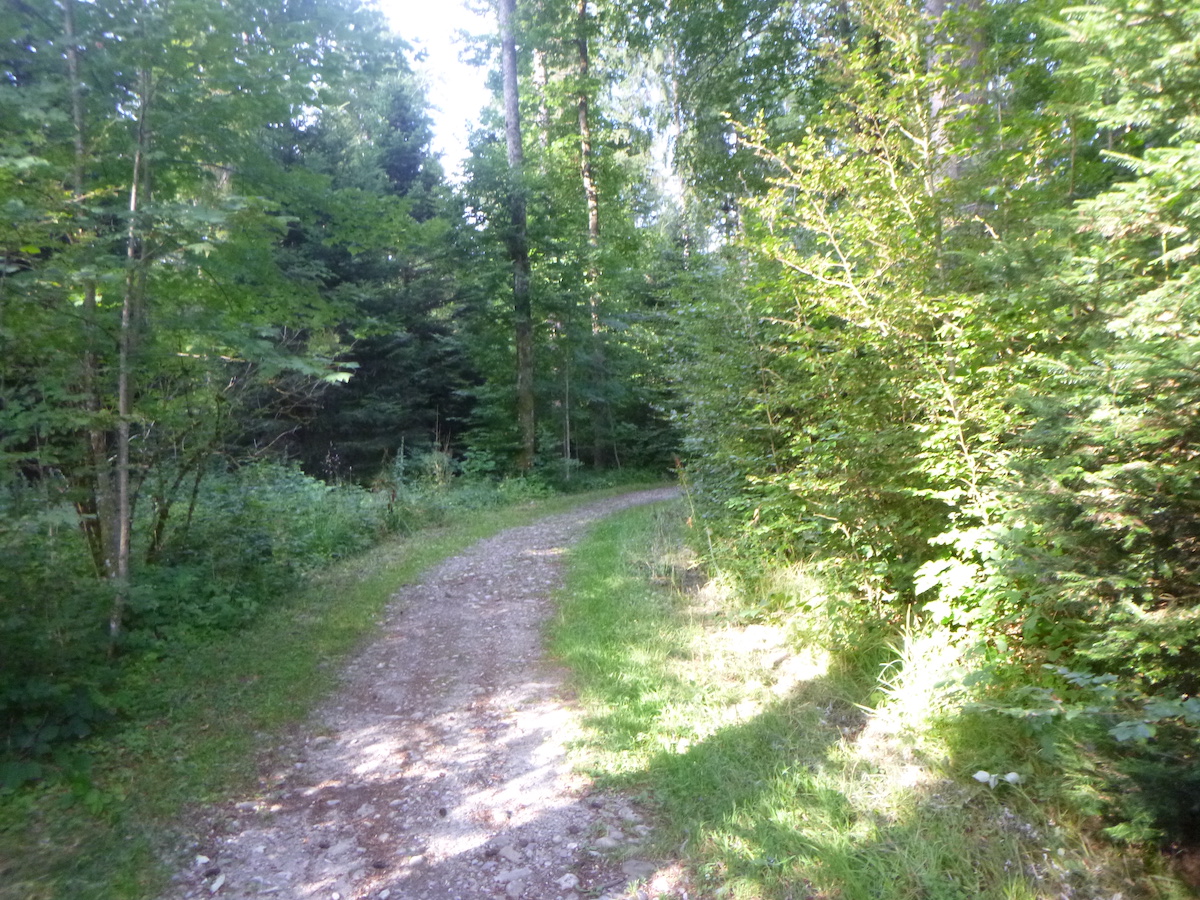



















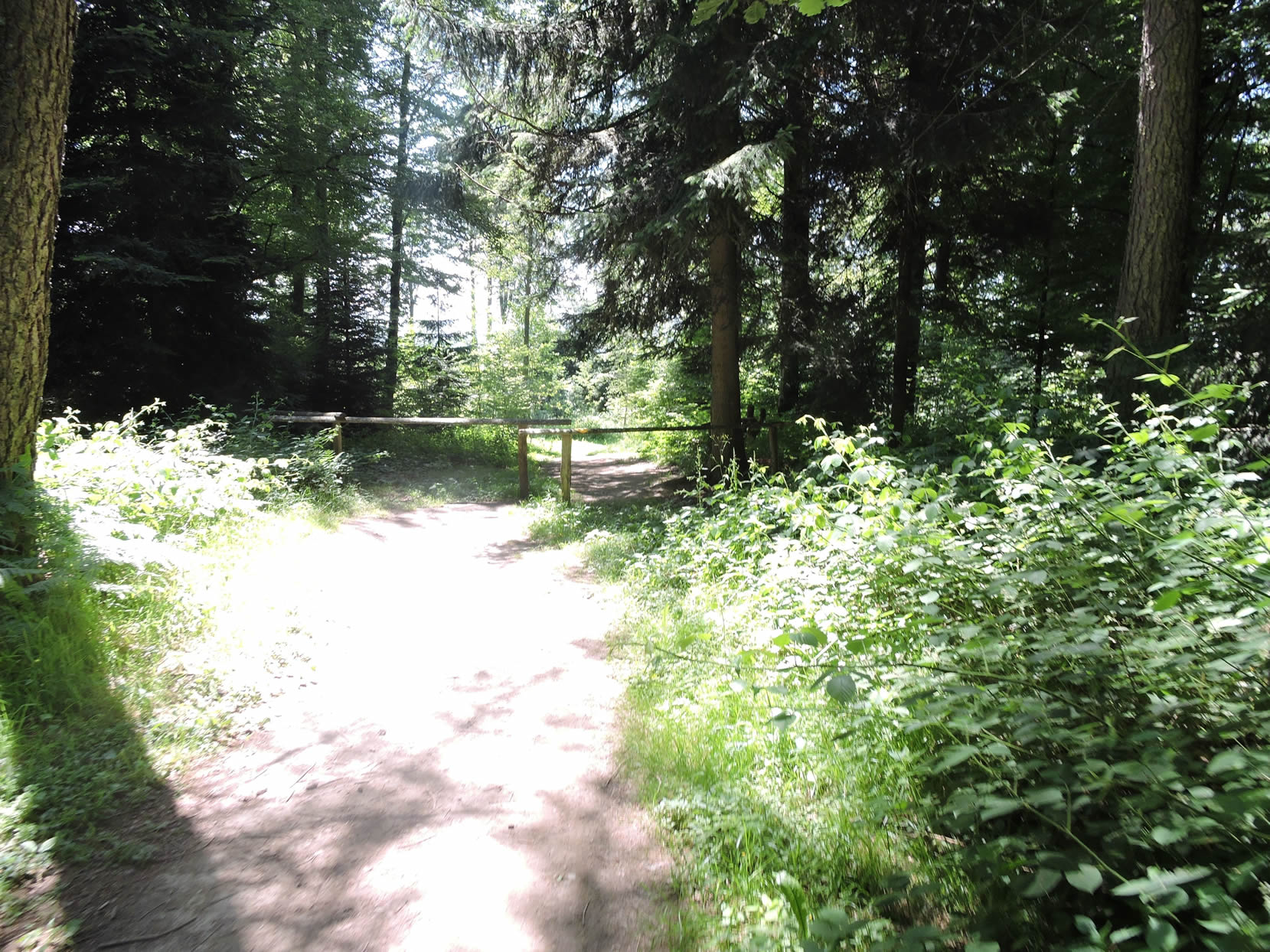
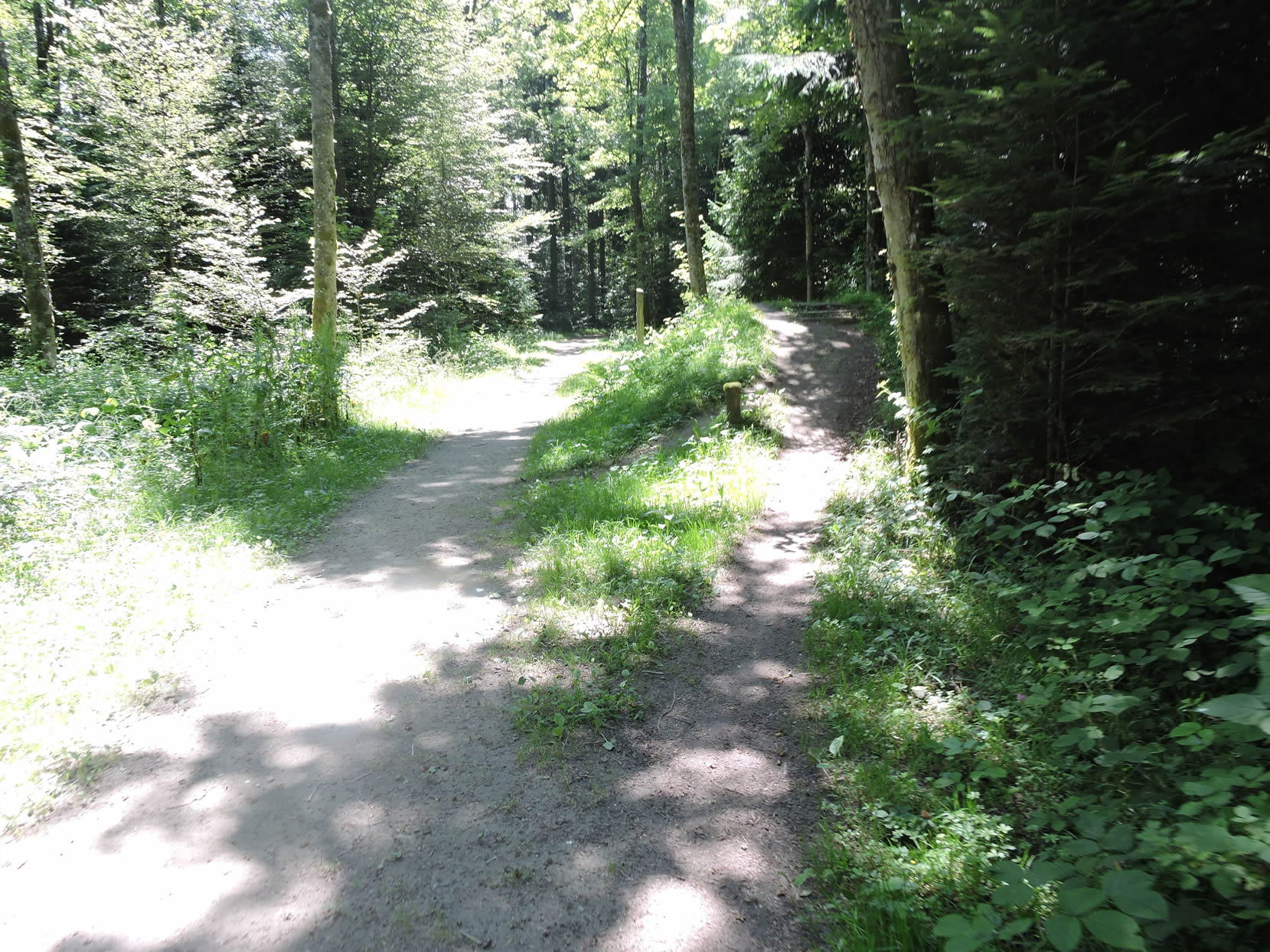



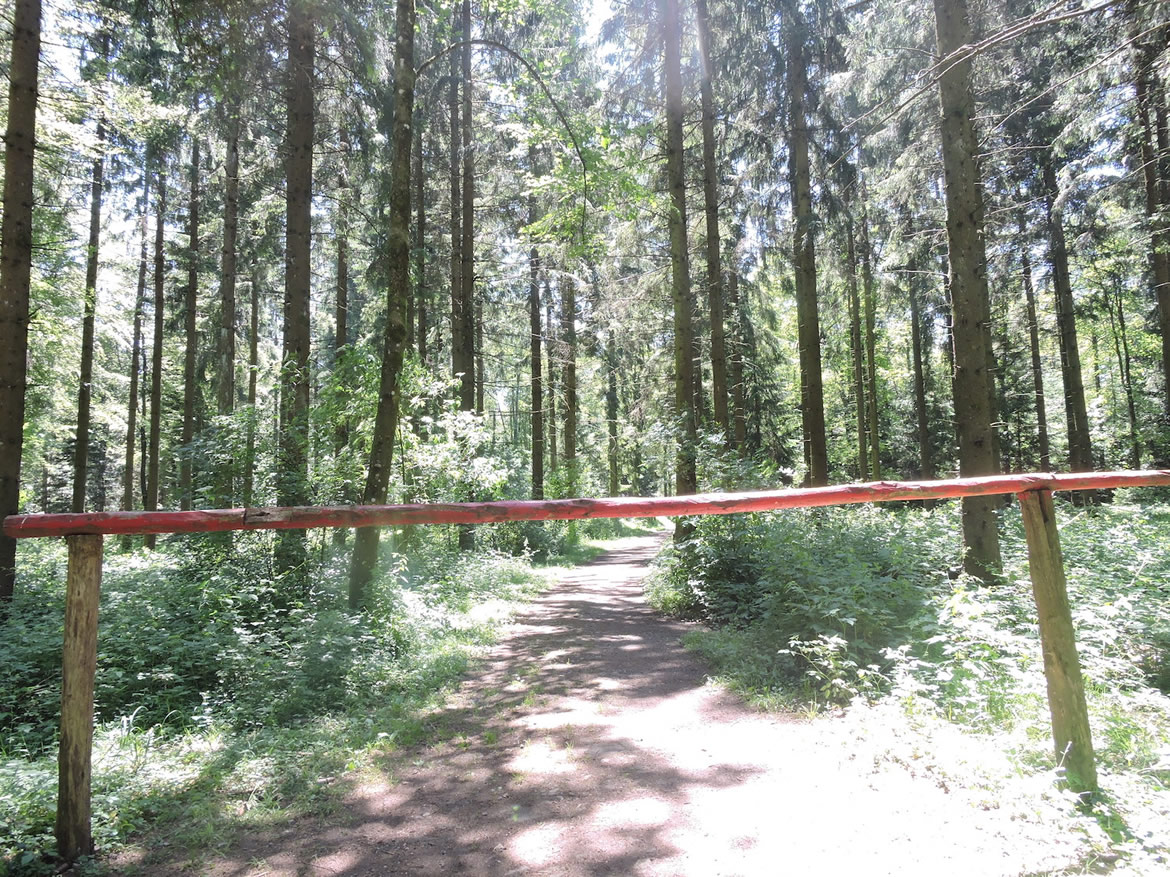


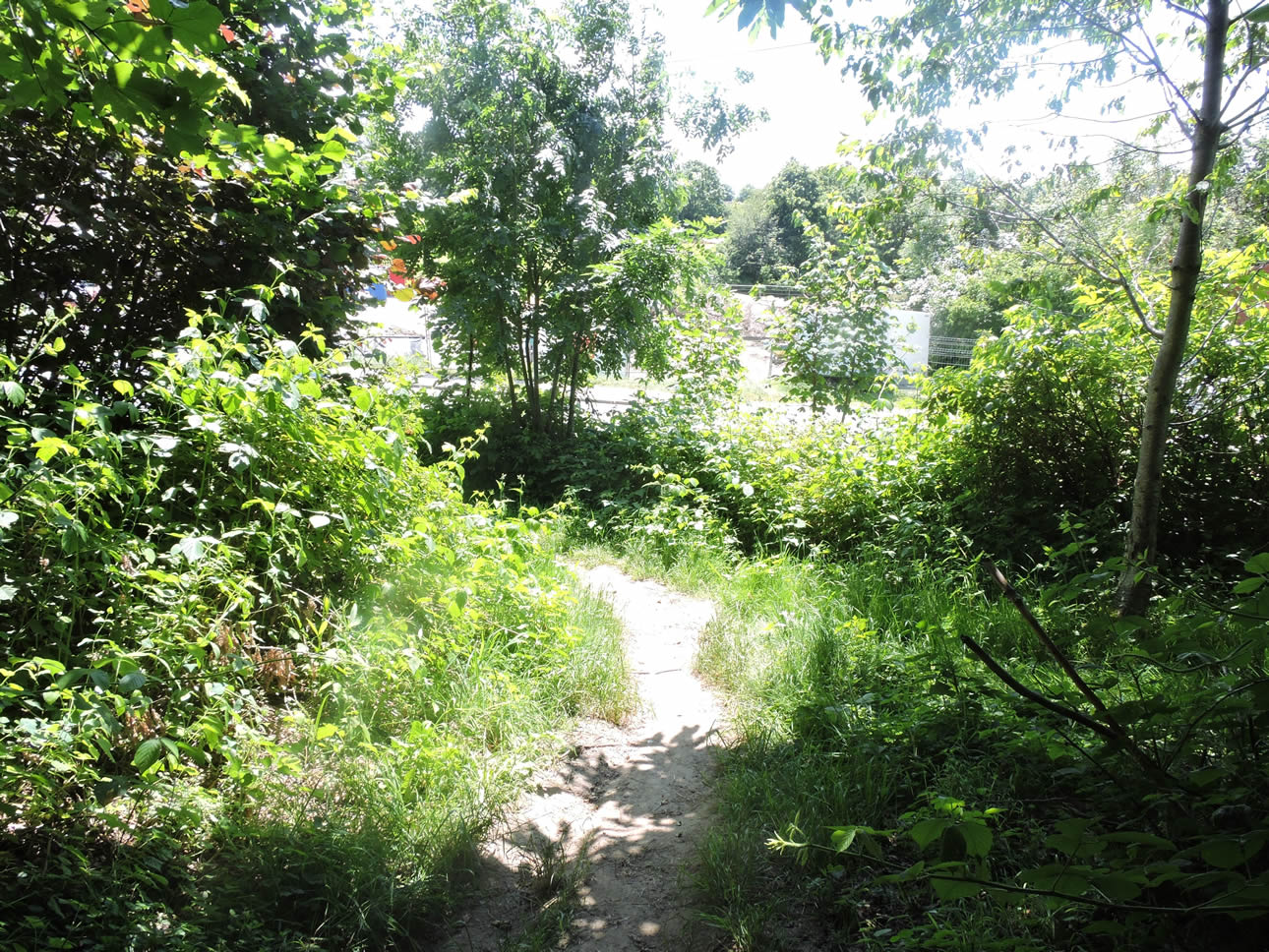
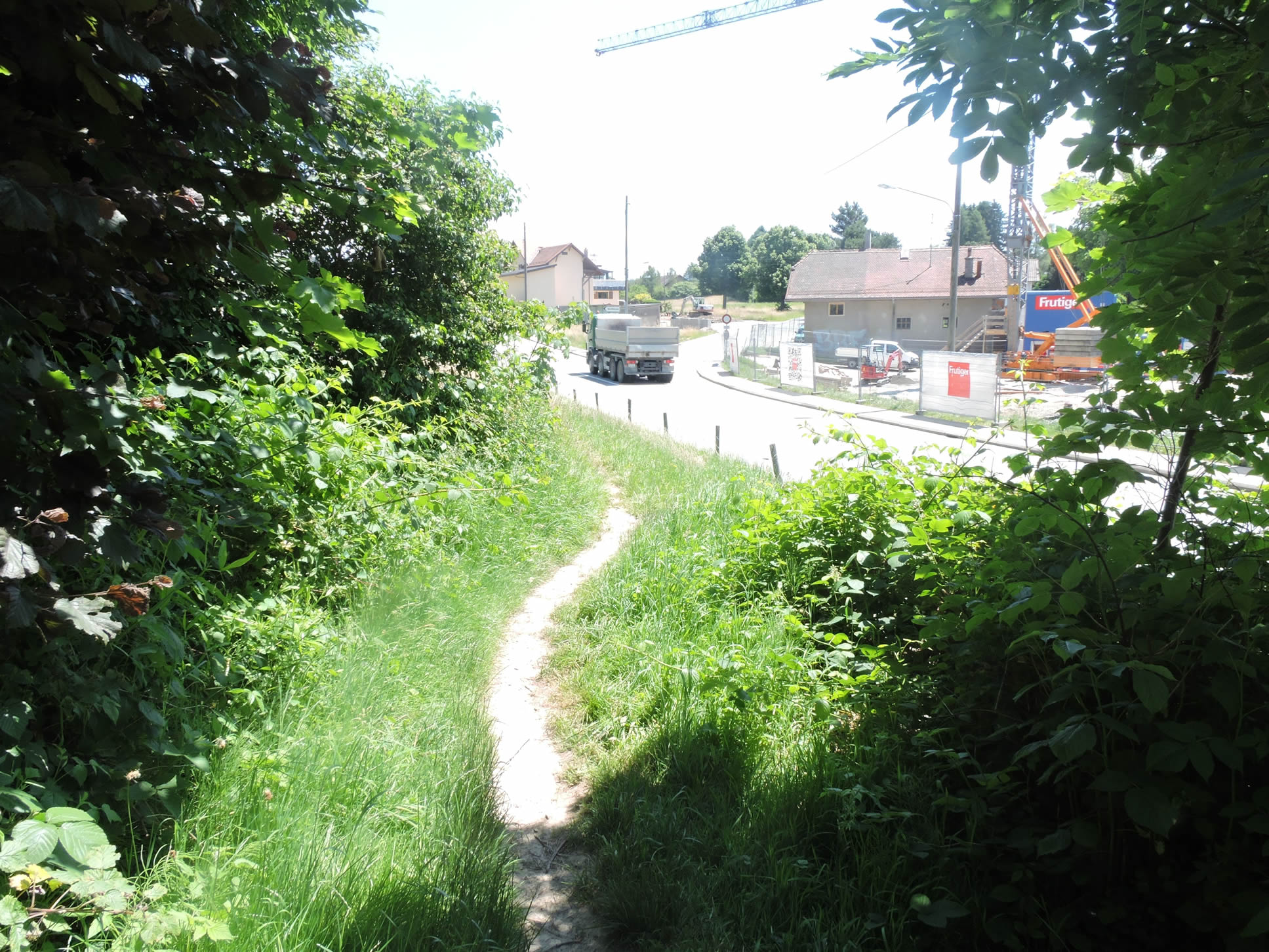








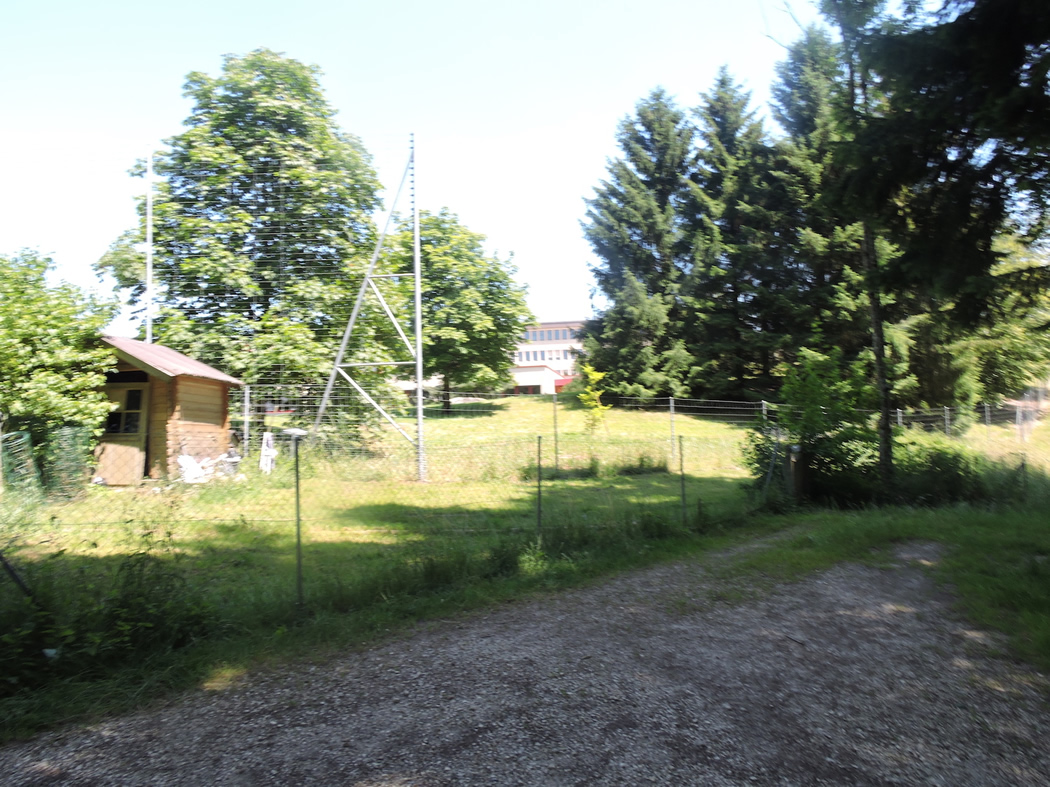
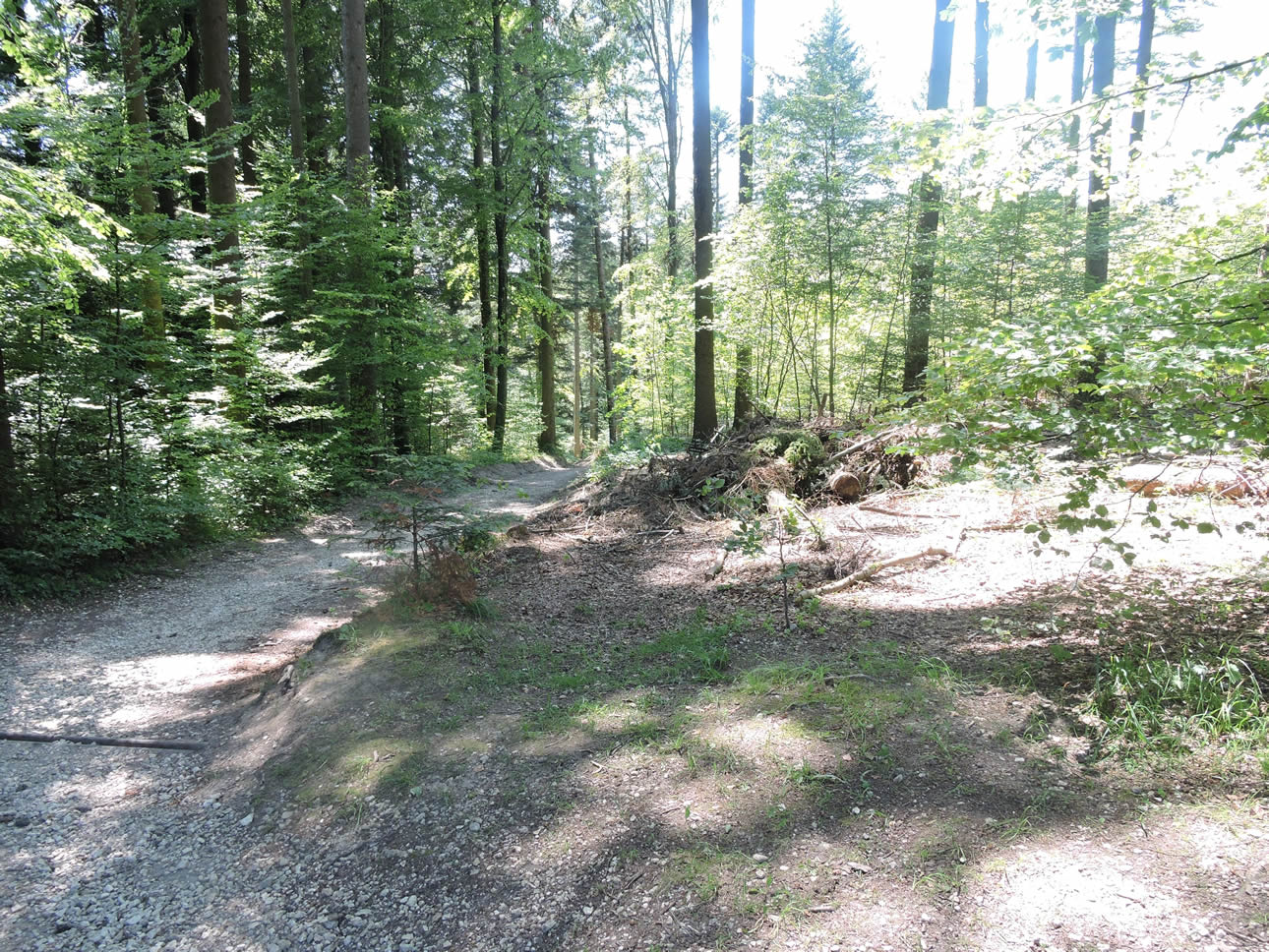


















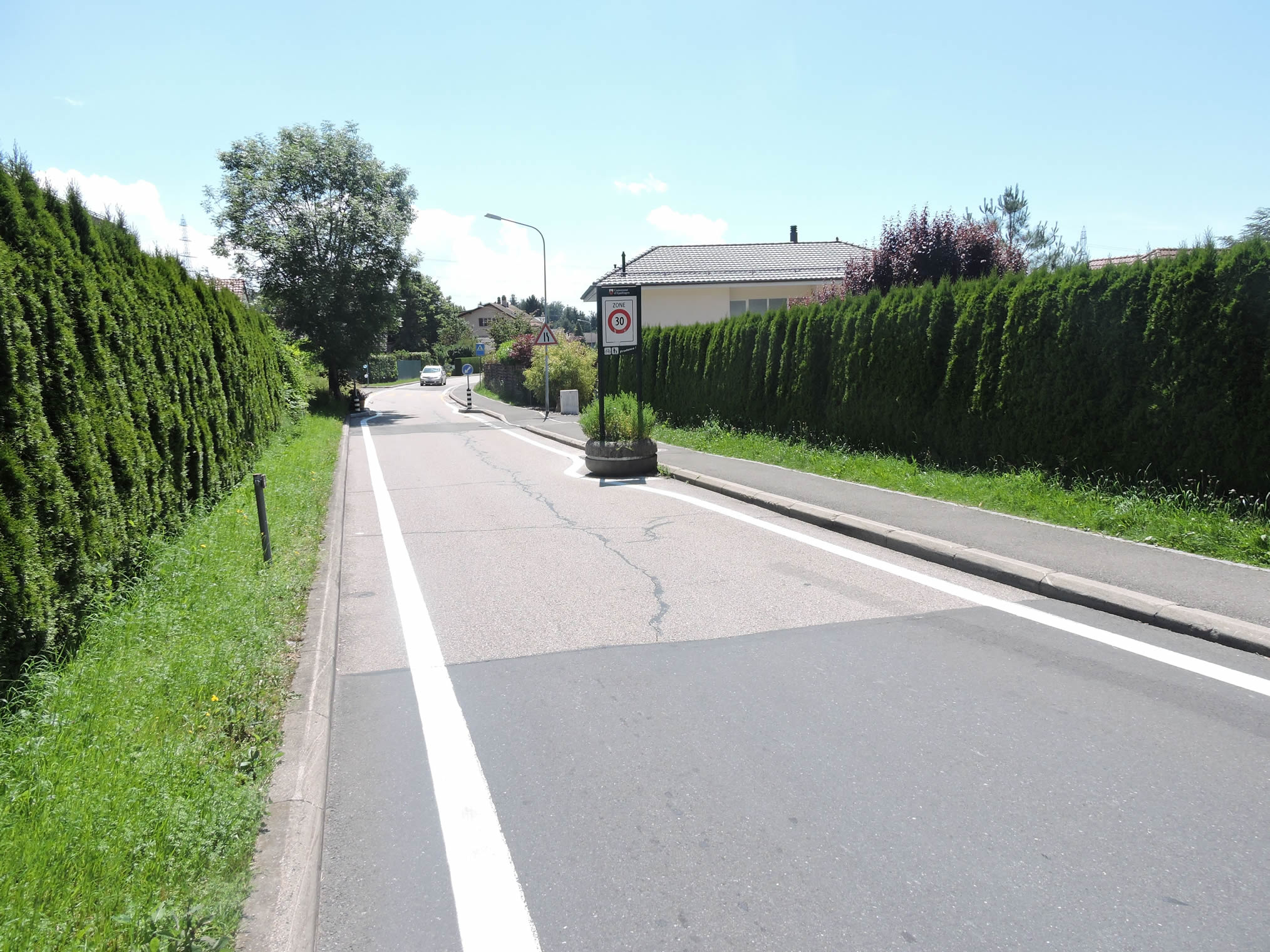














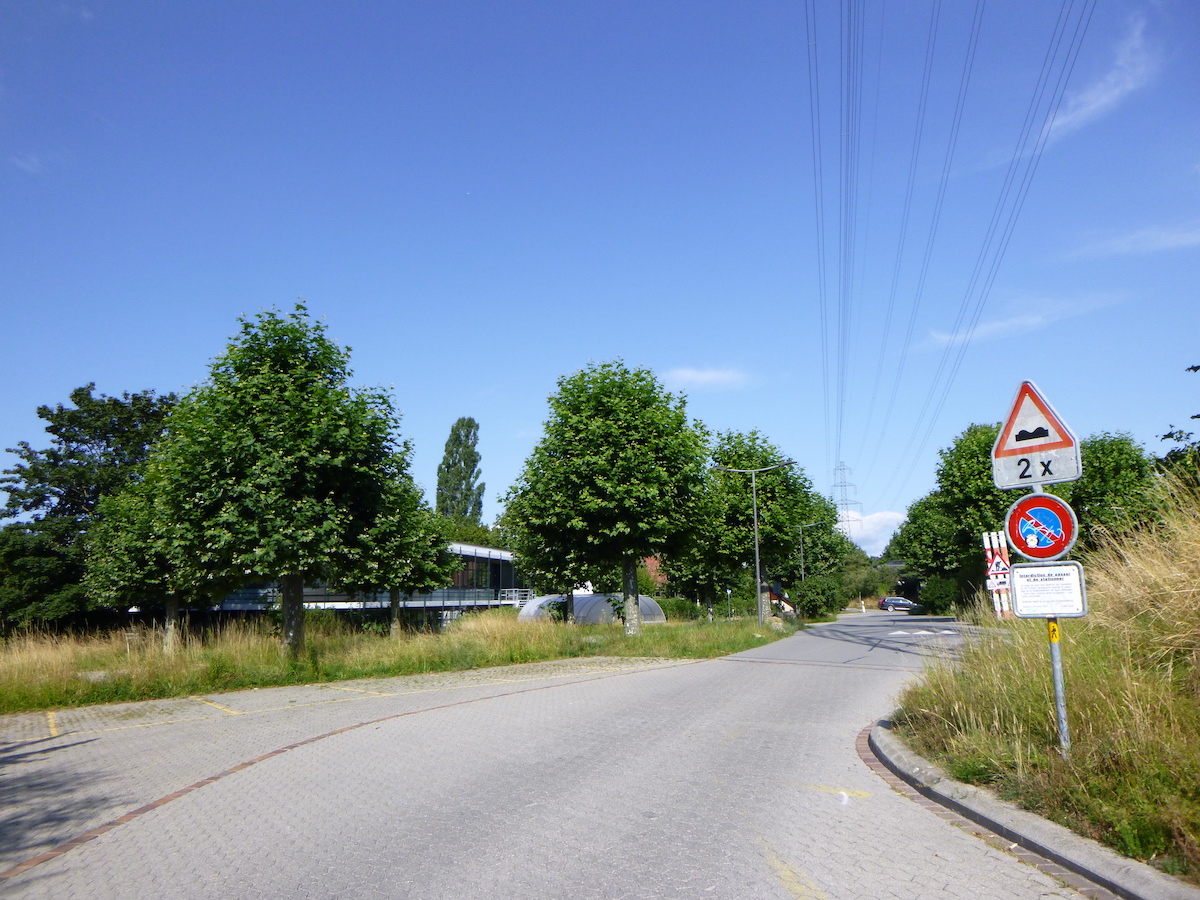















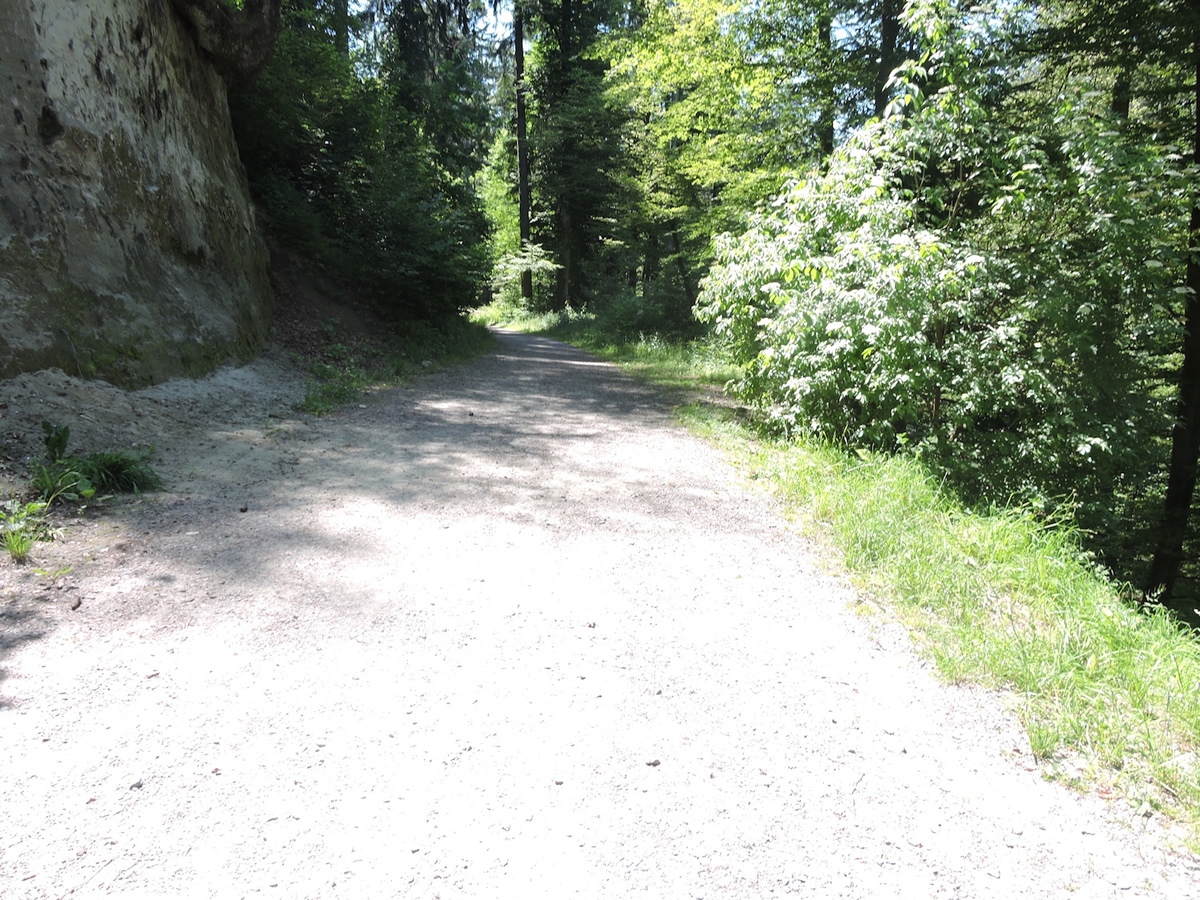
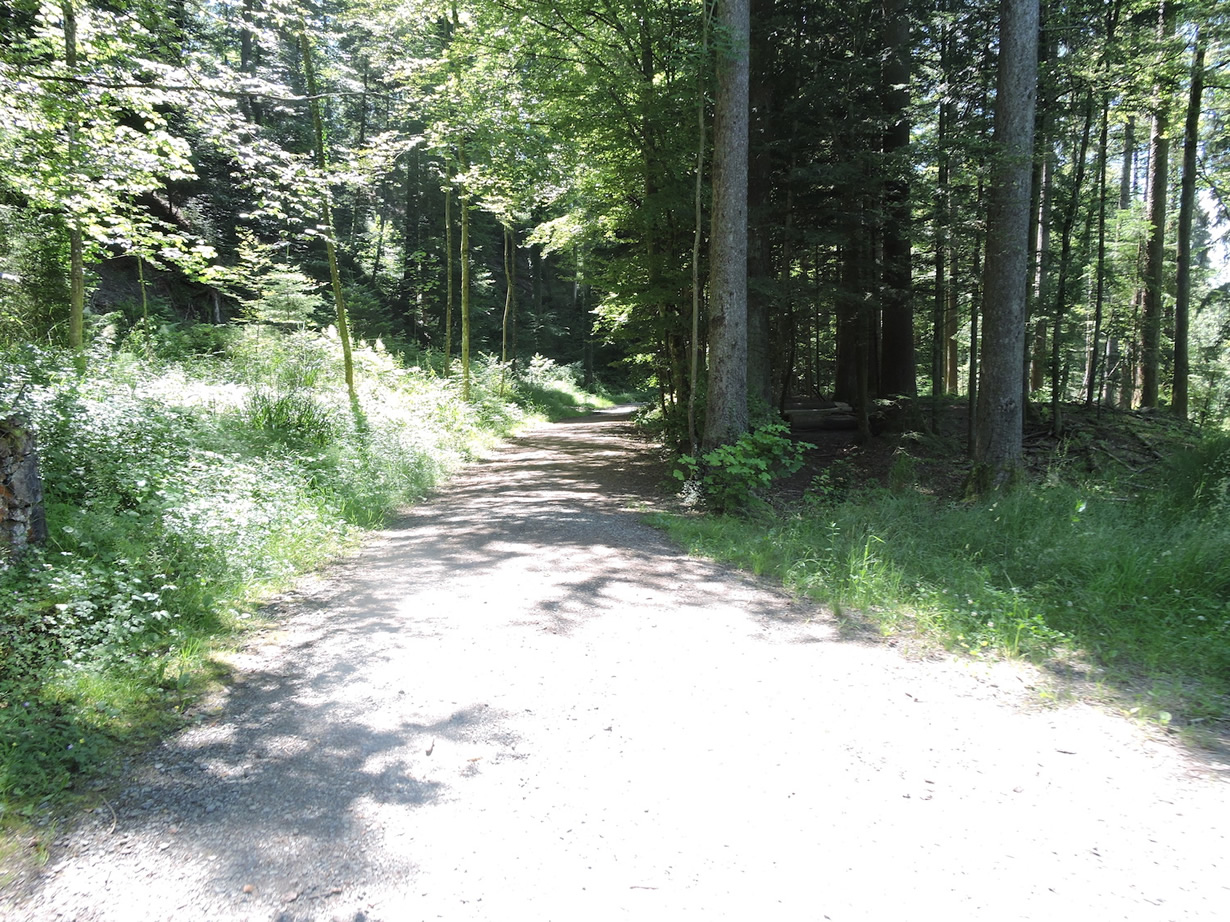

 Next stage: Stage 17c: Visit to Lusanne
Next stage: Stage 17c: Visit to Lusanne
